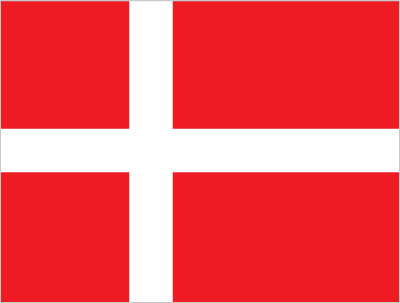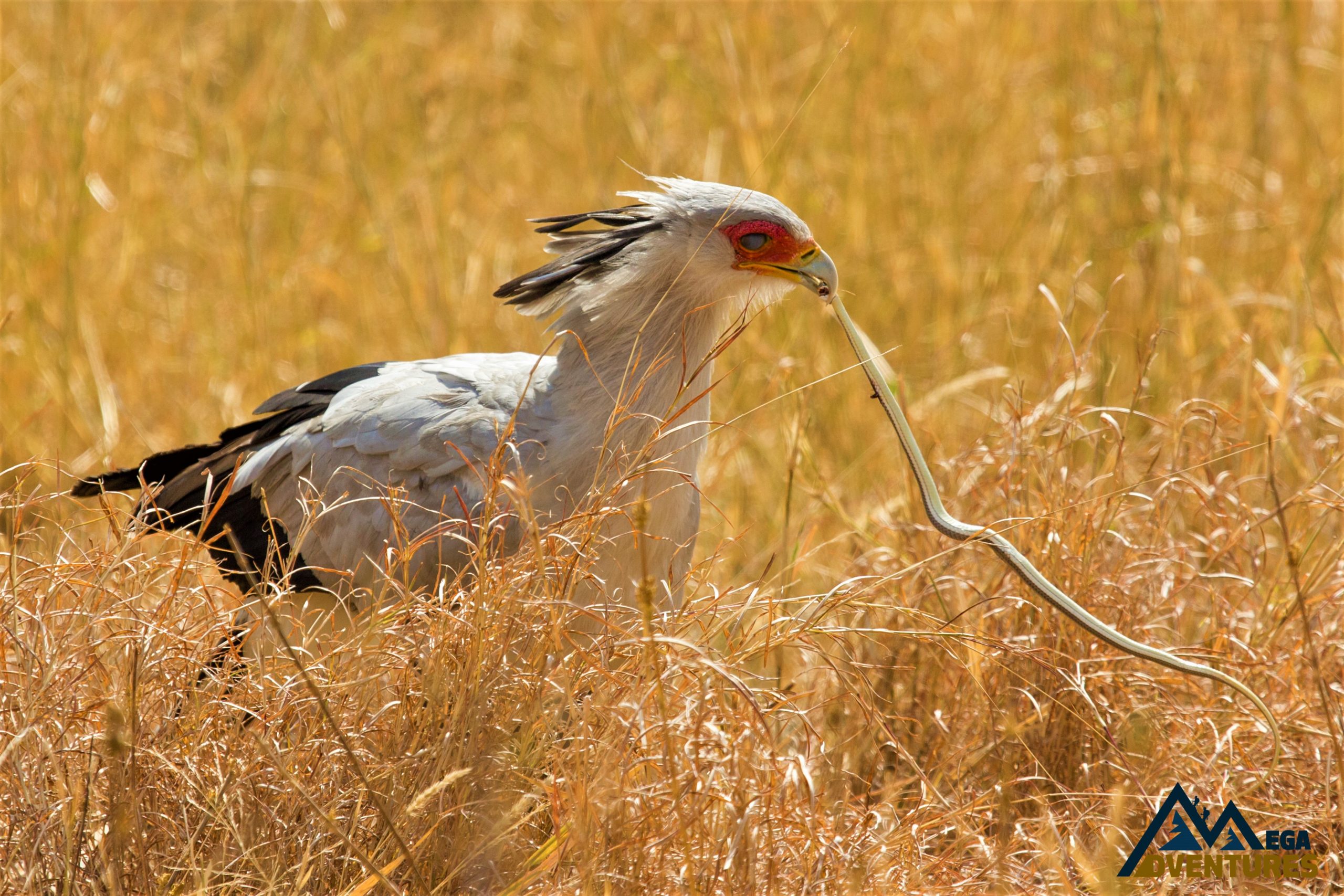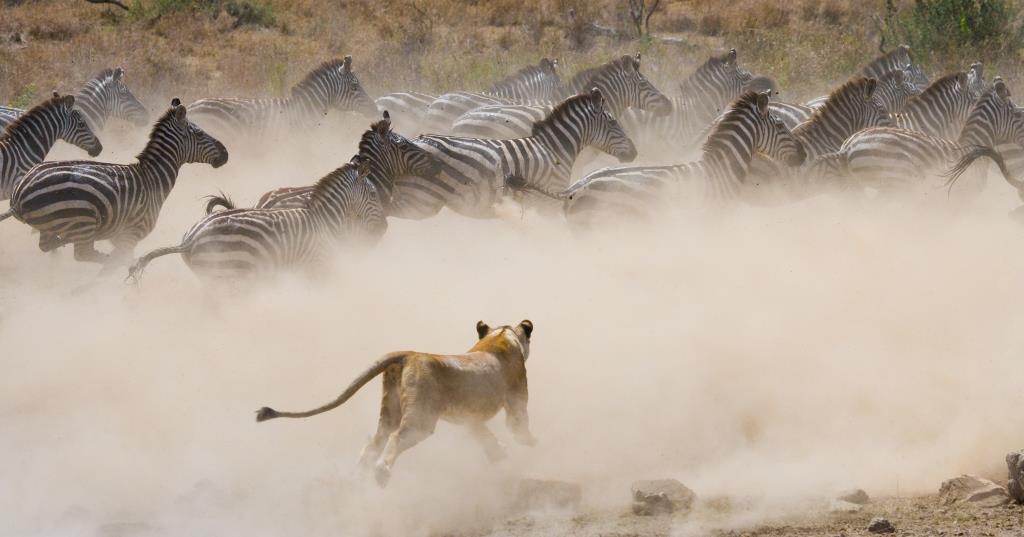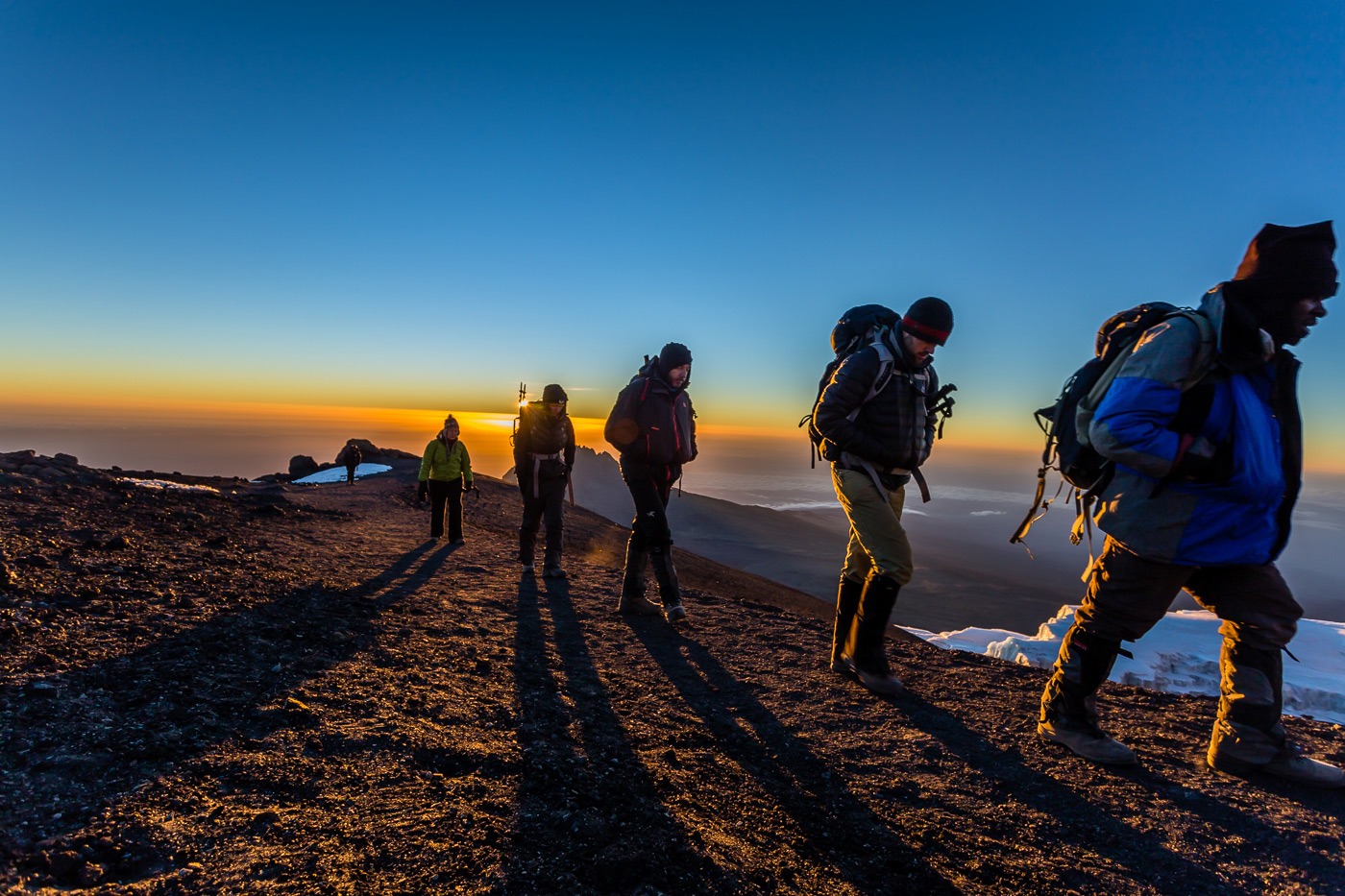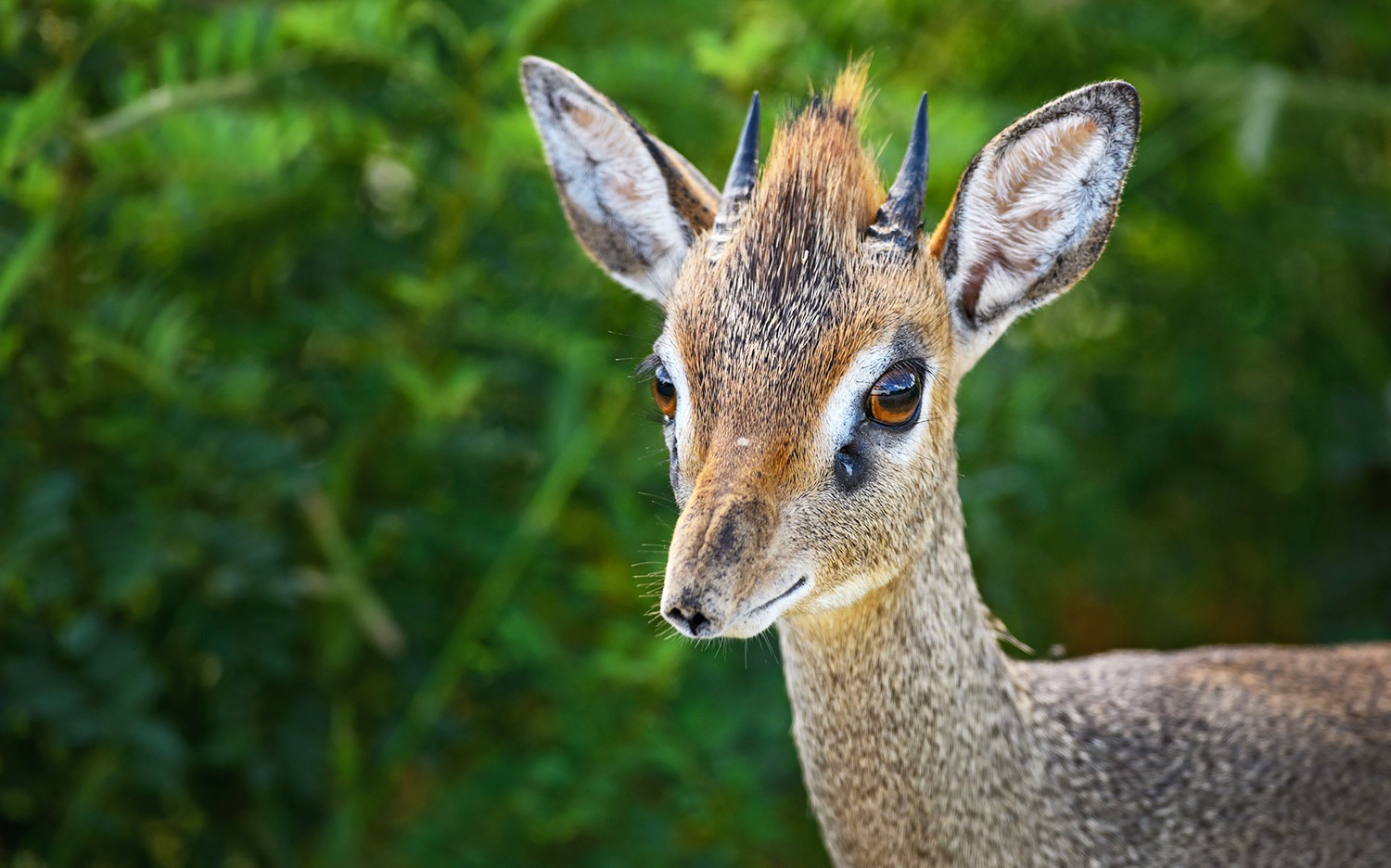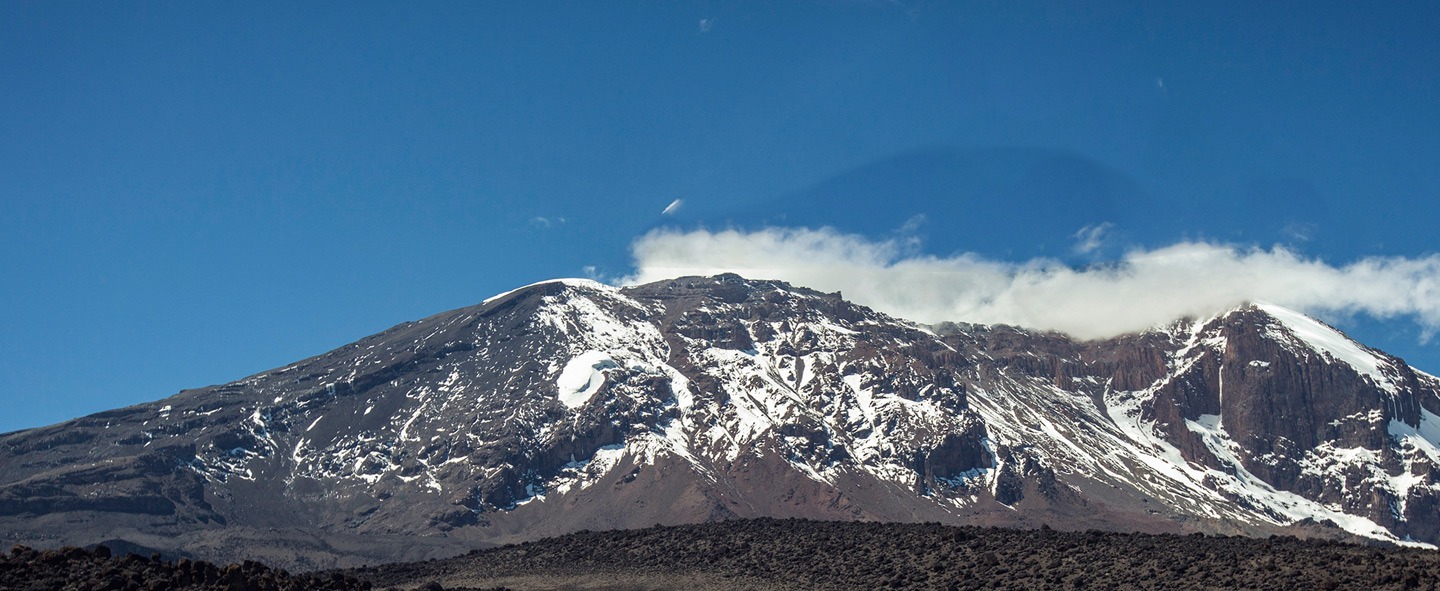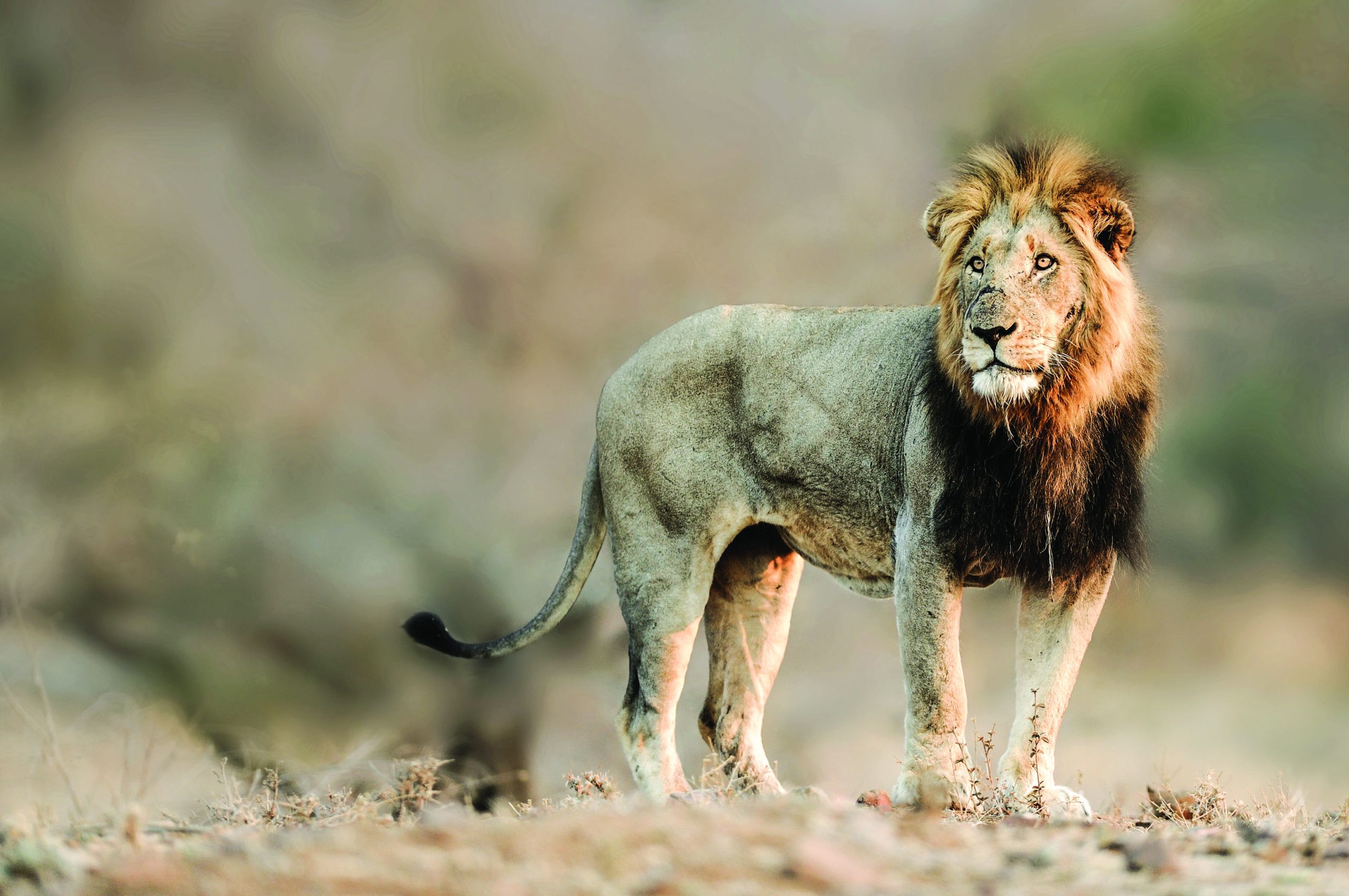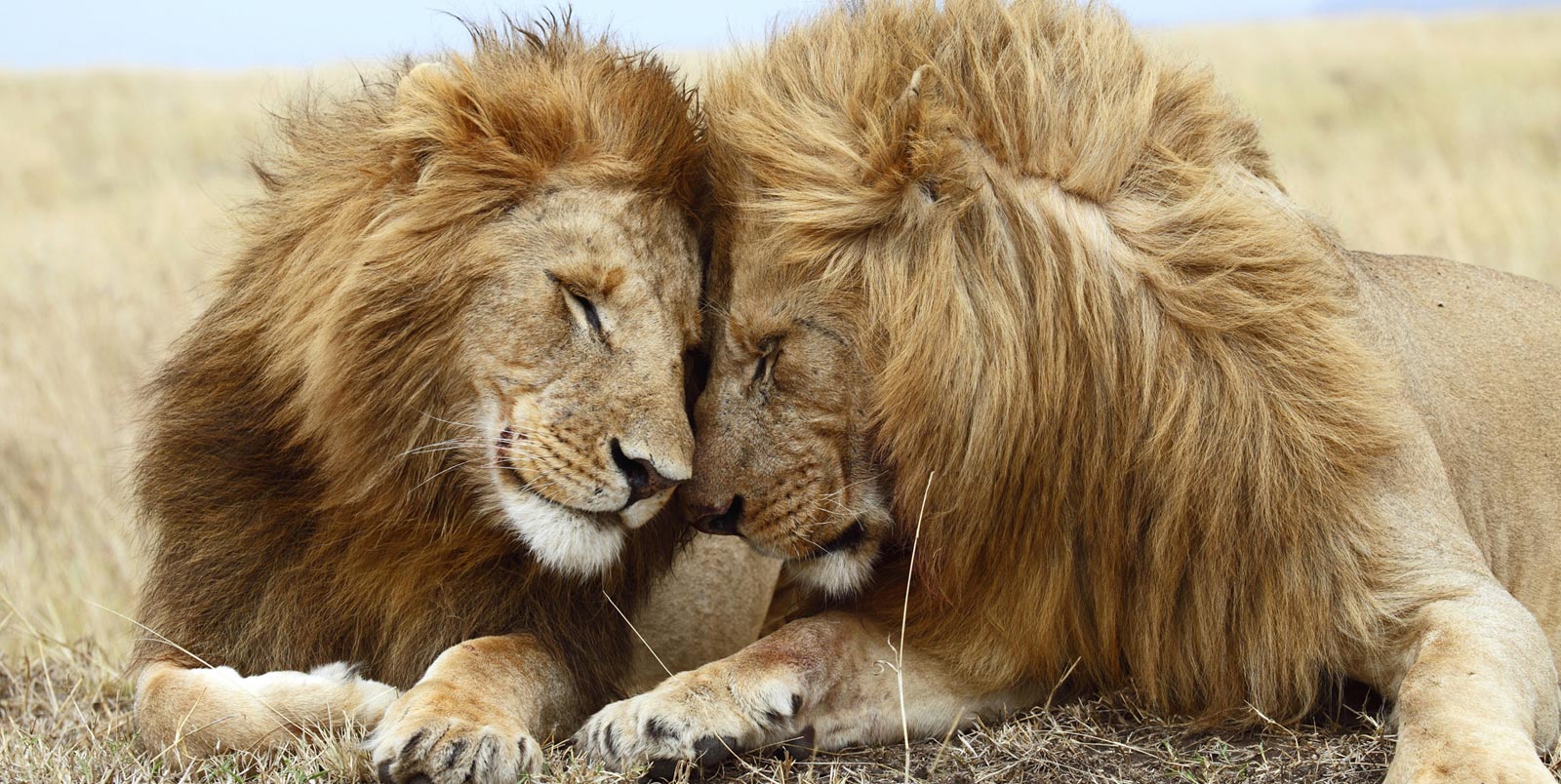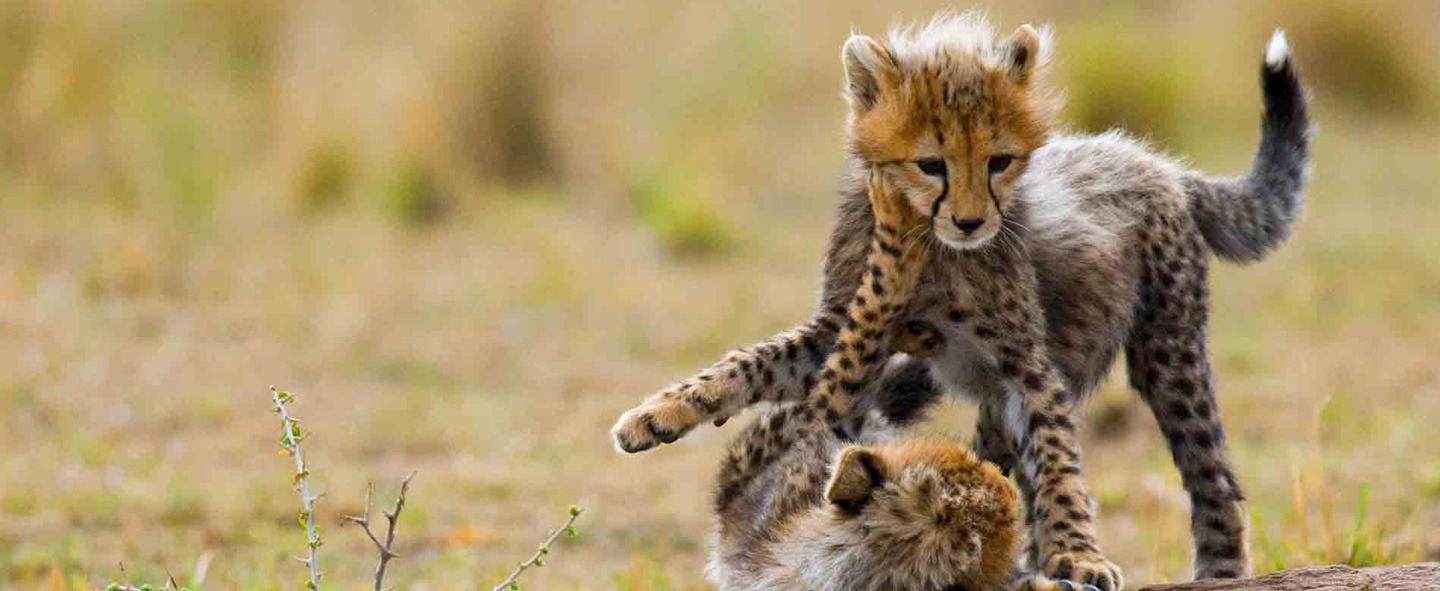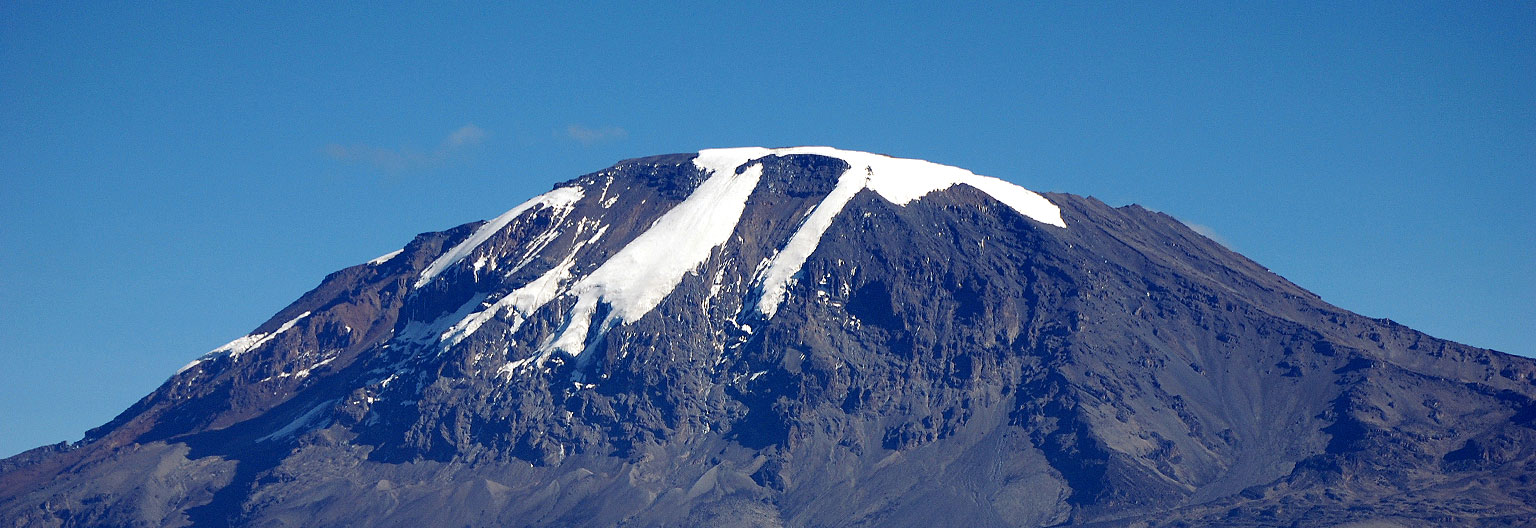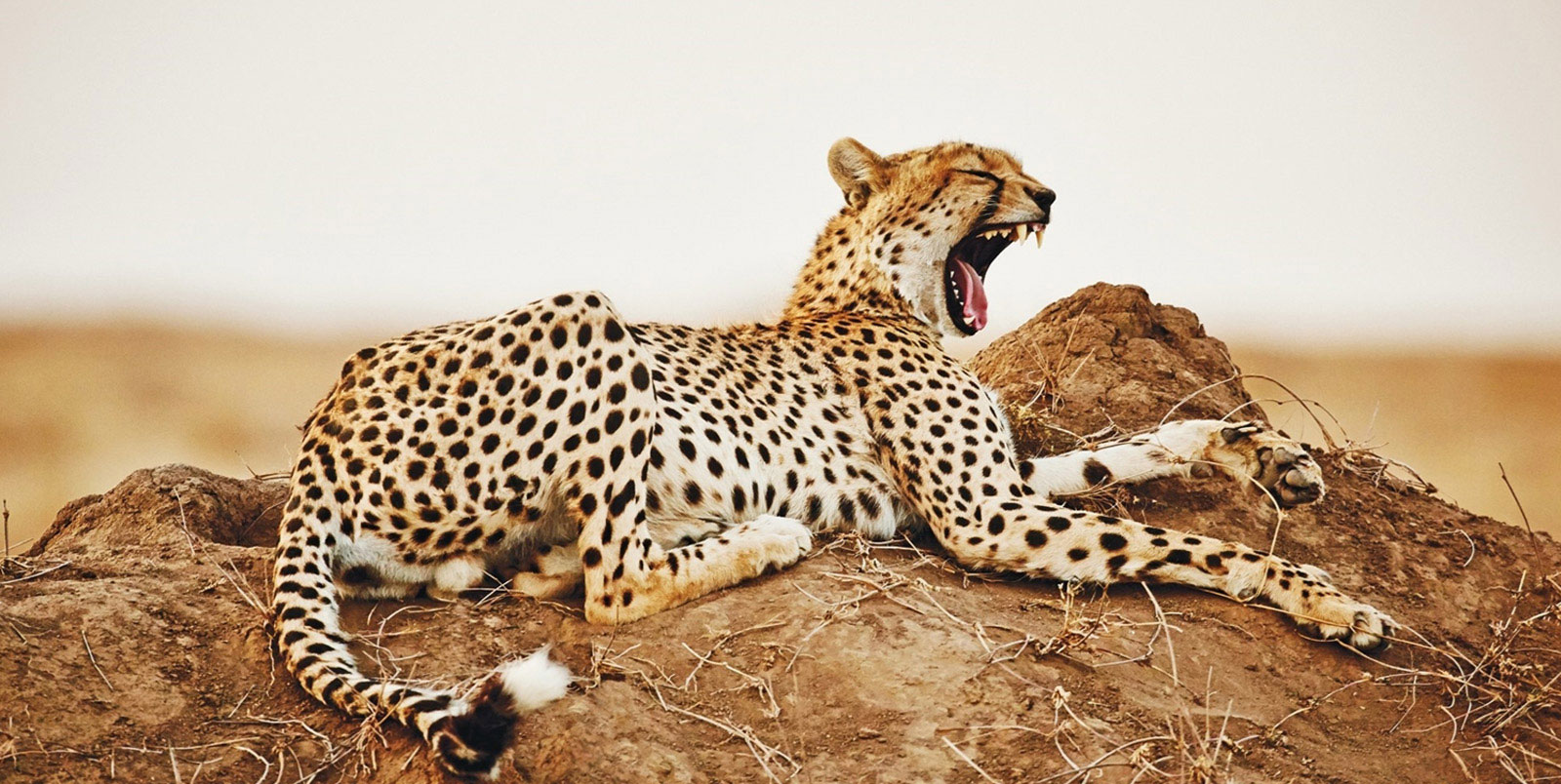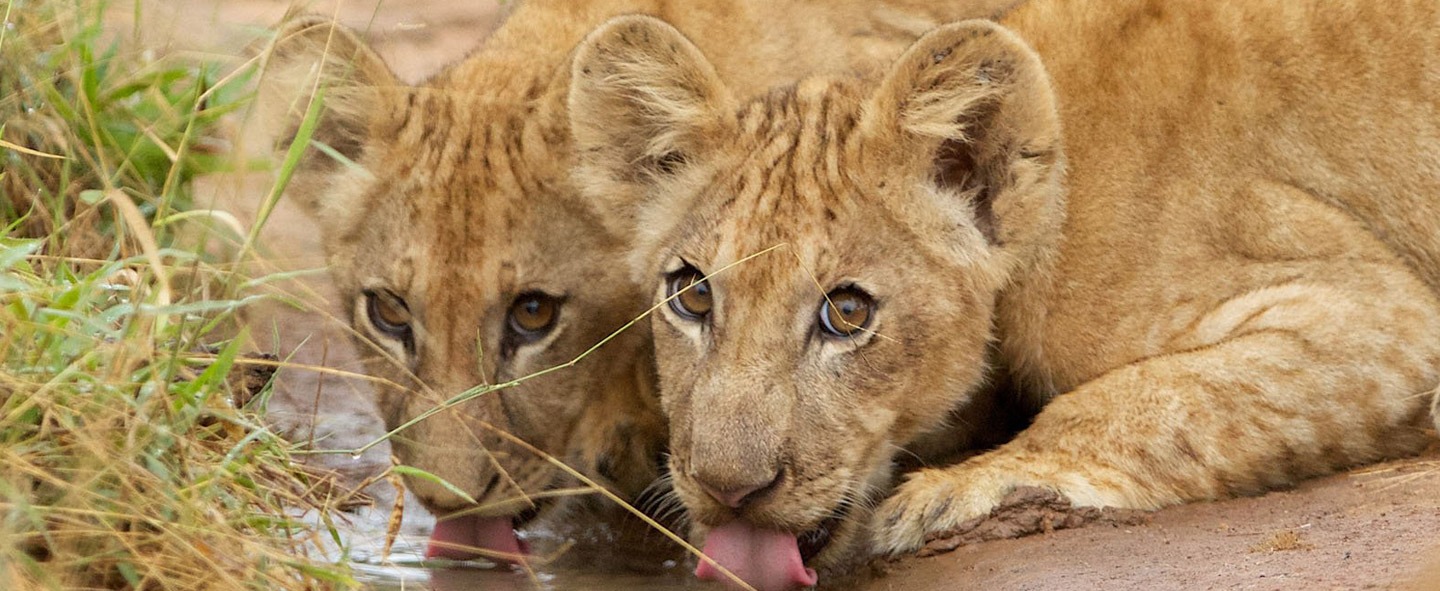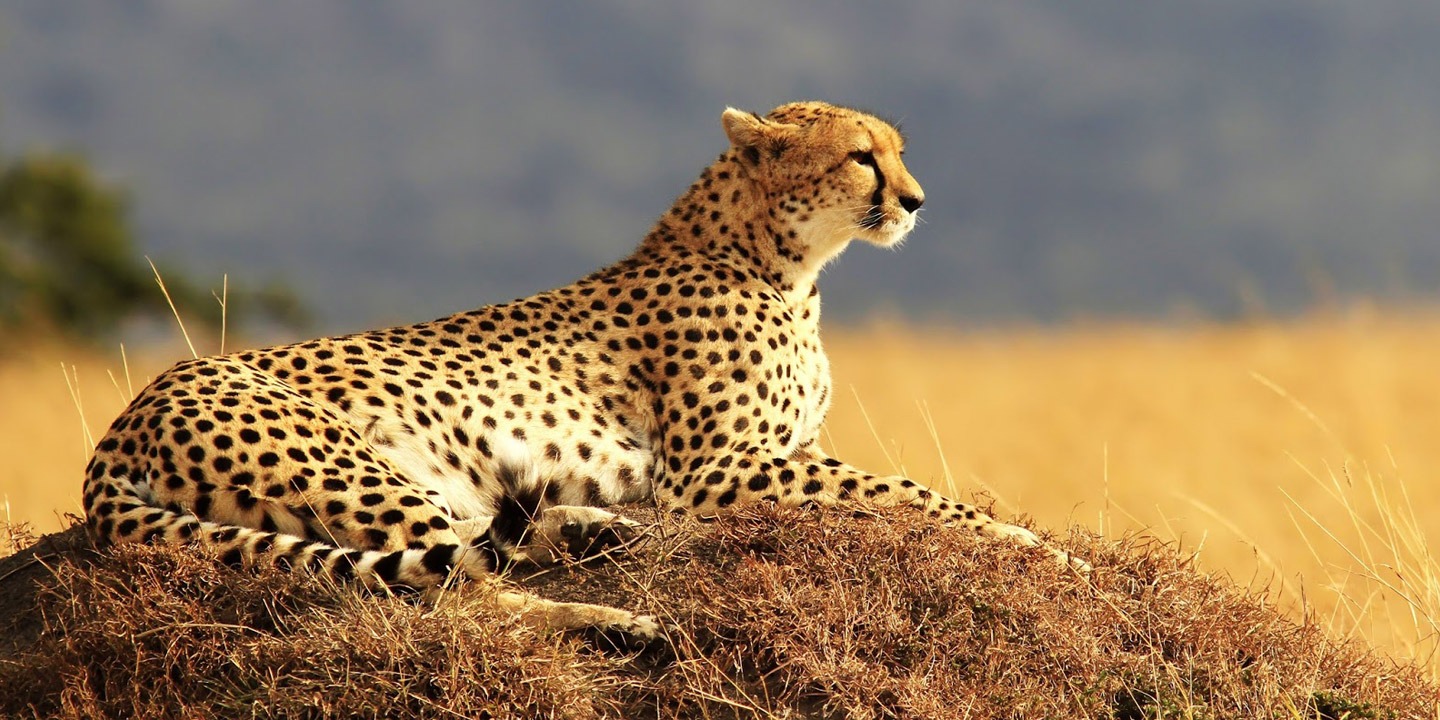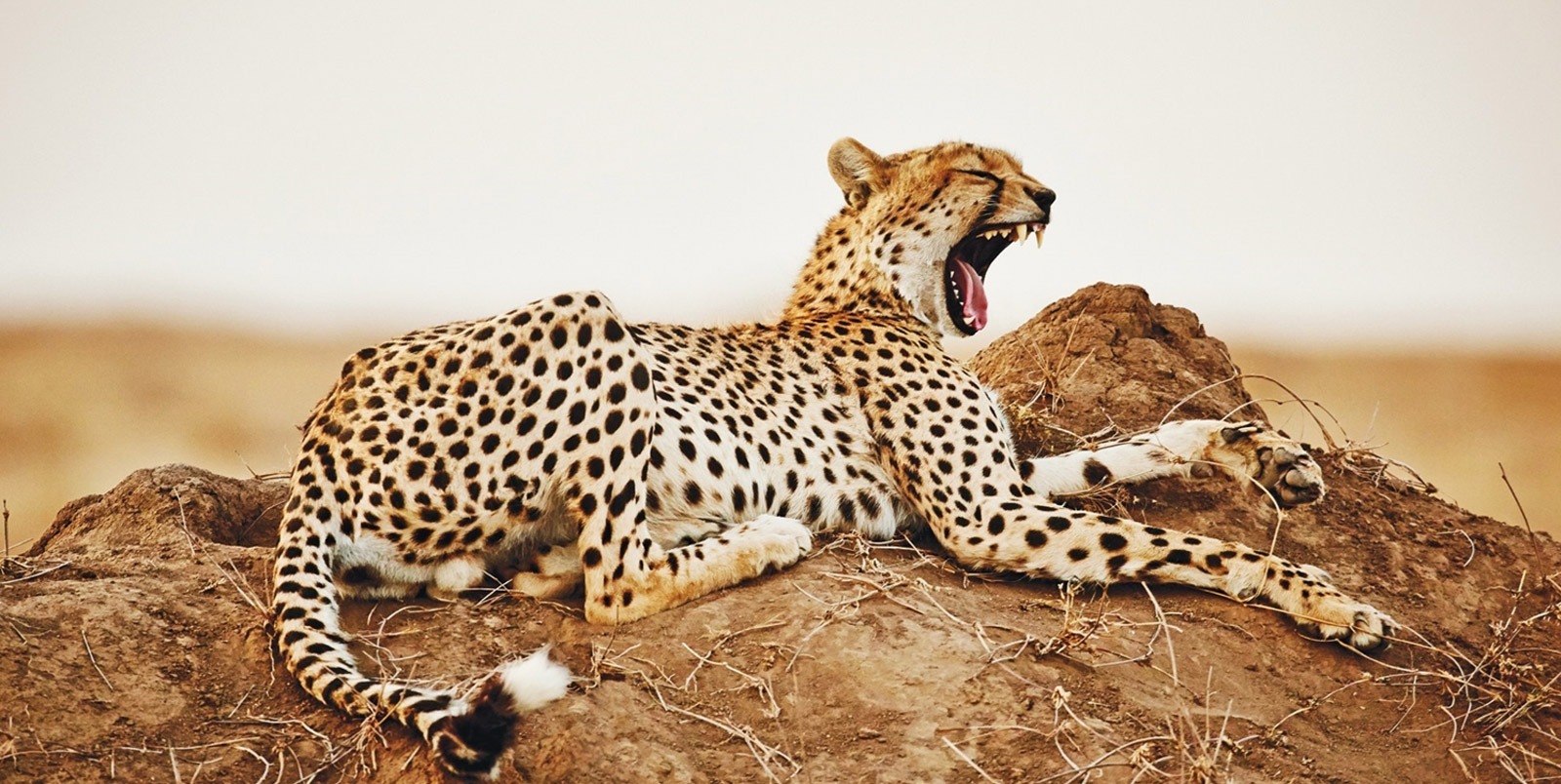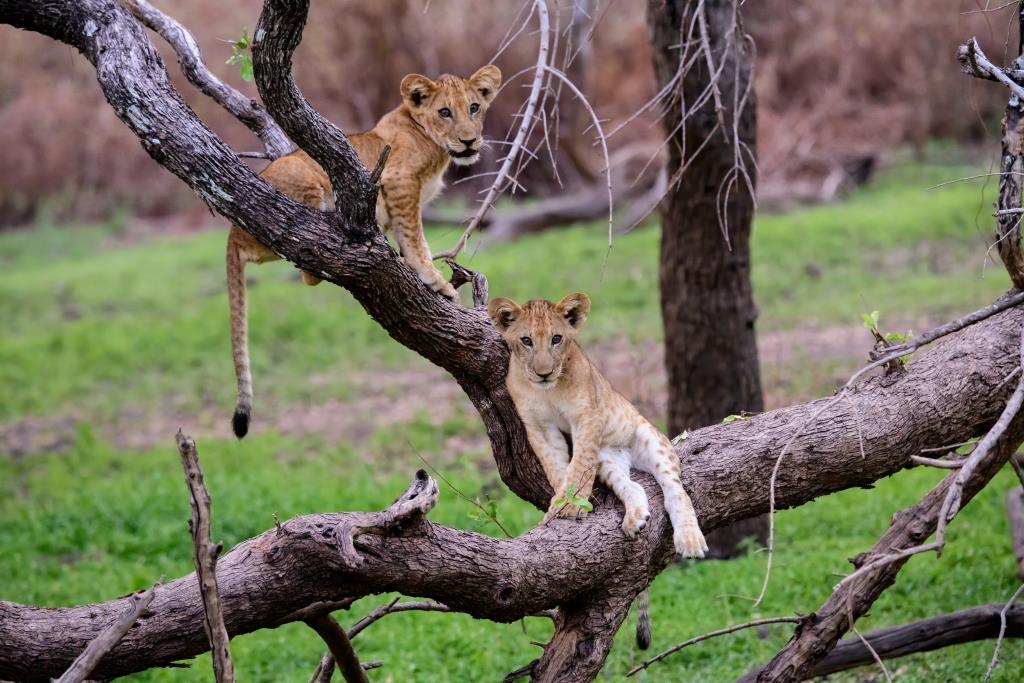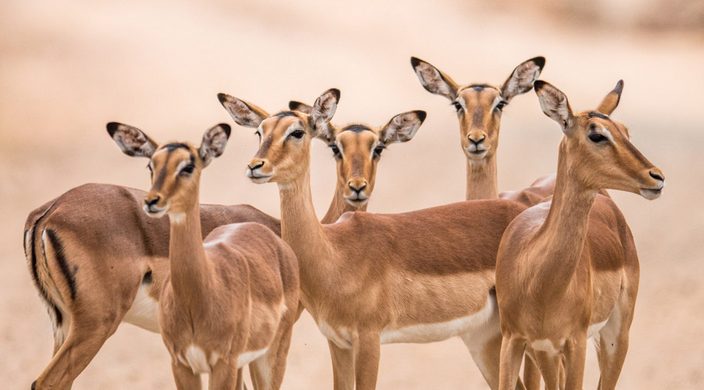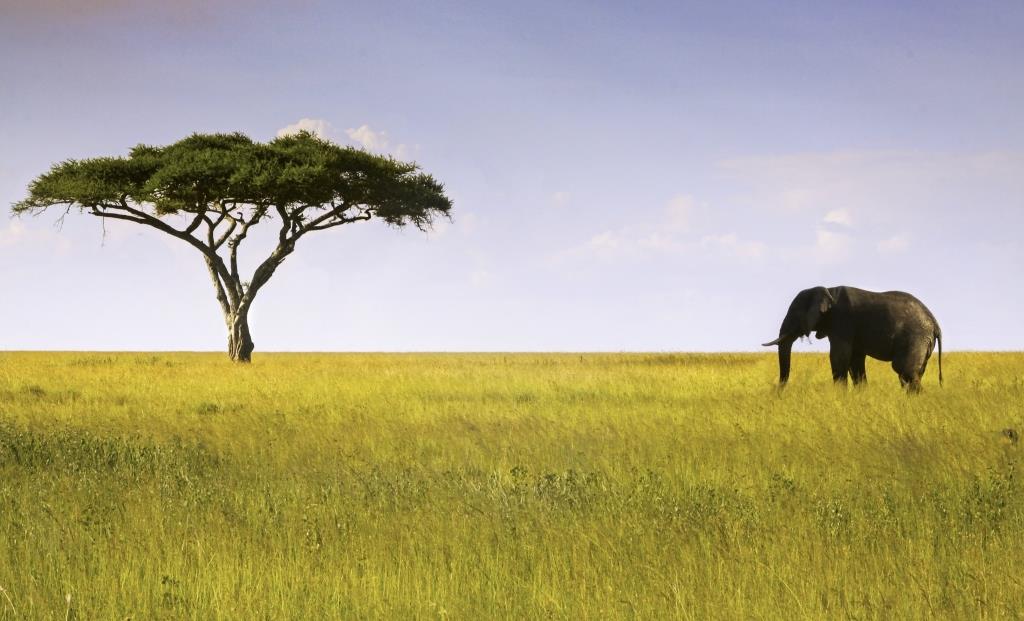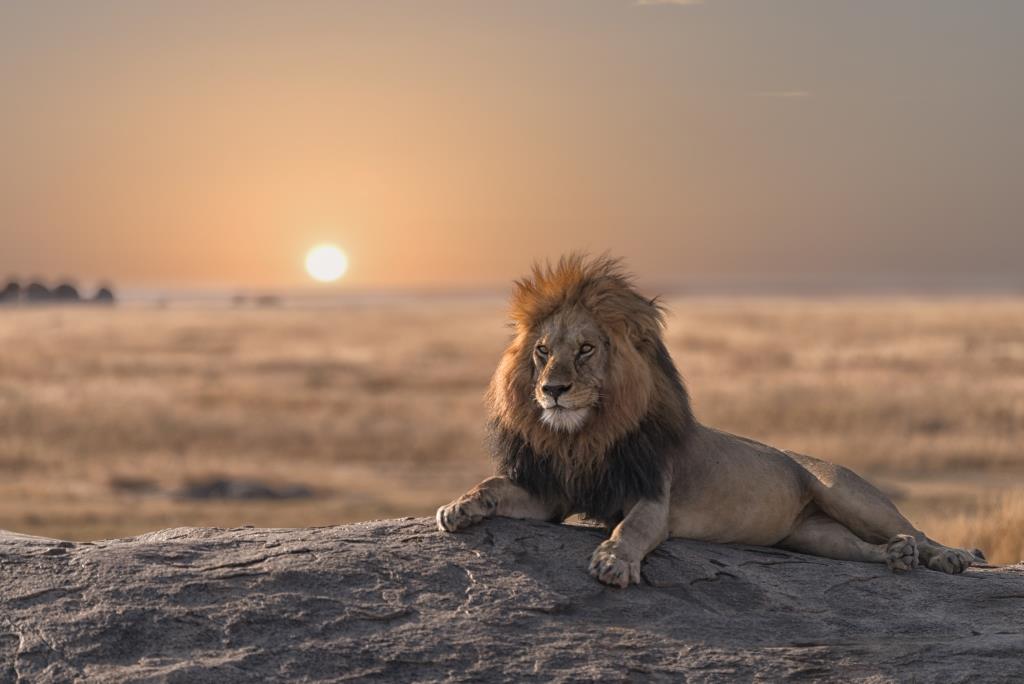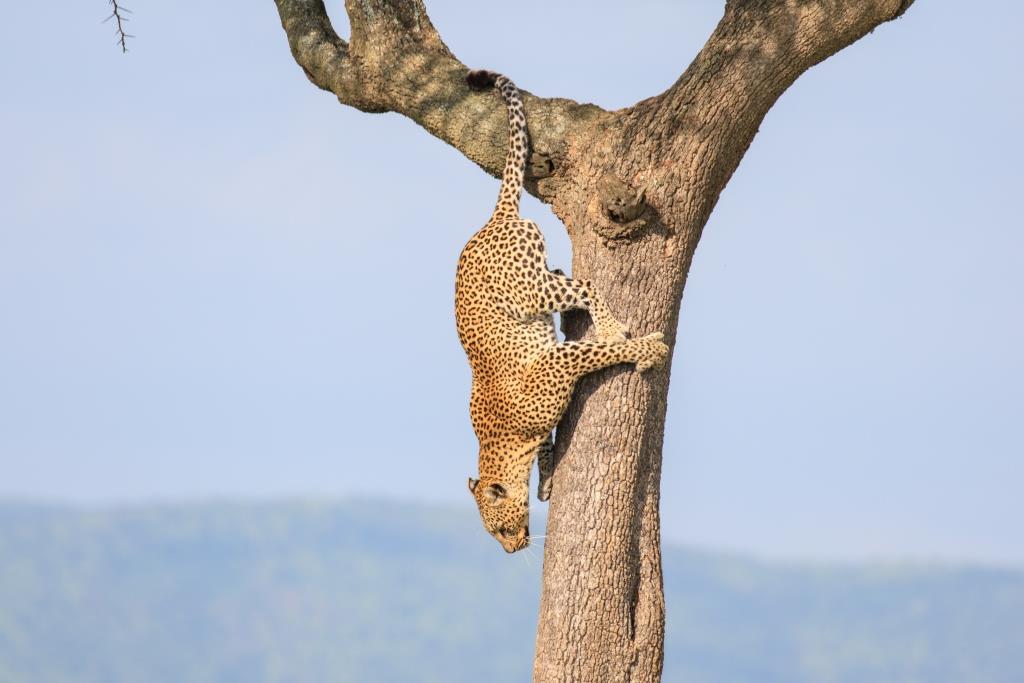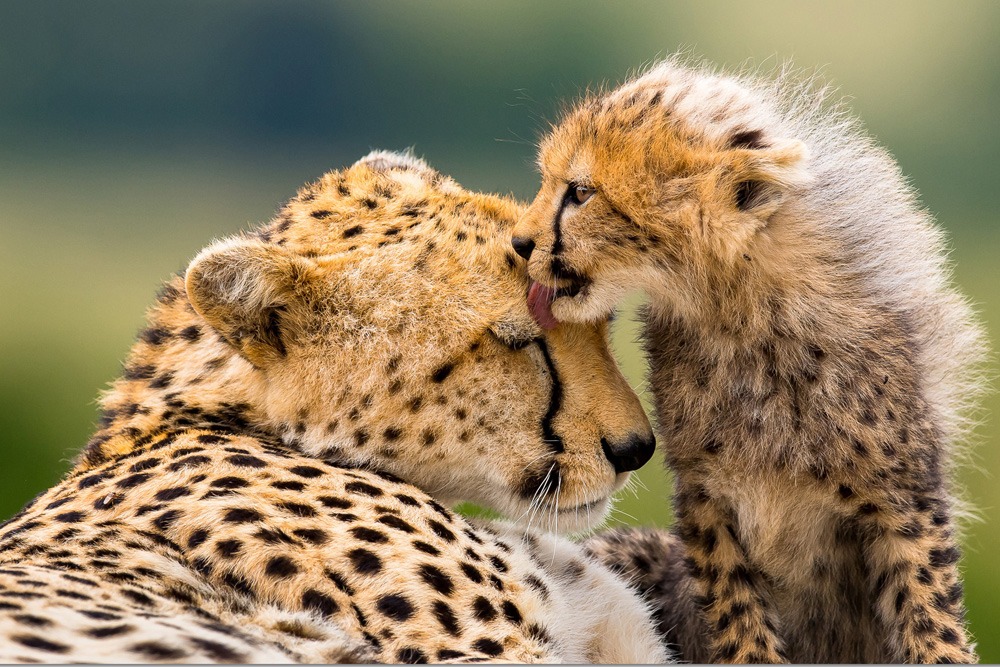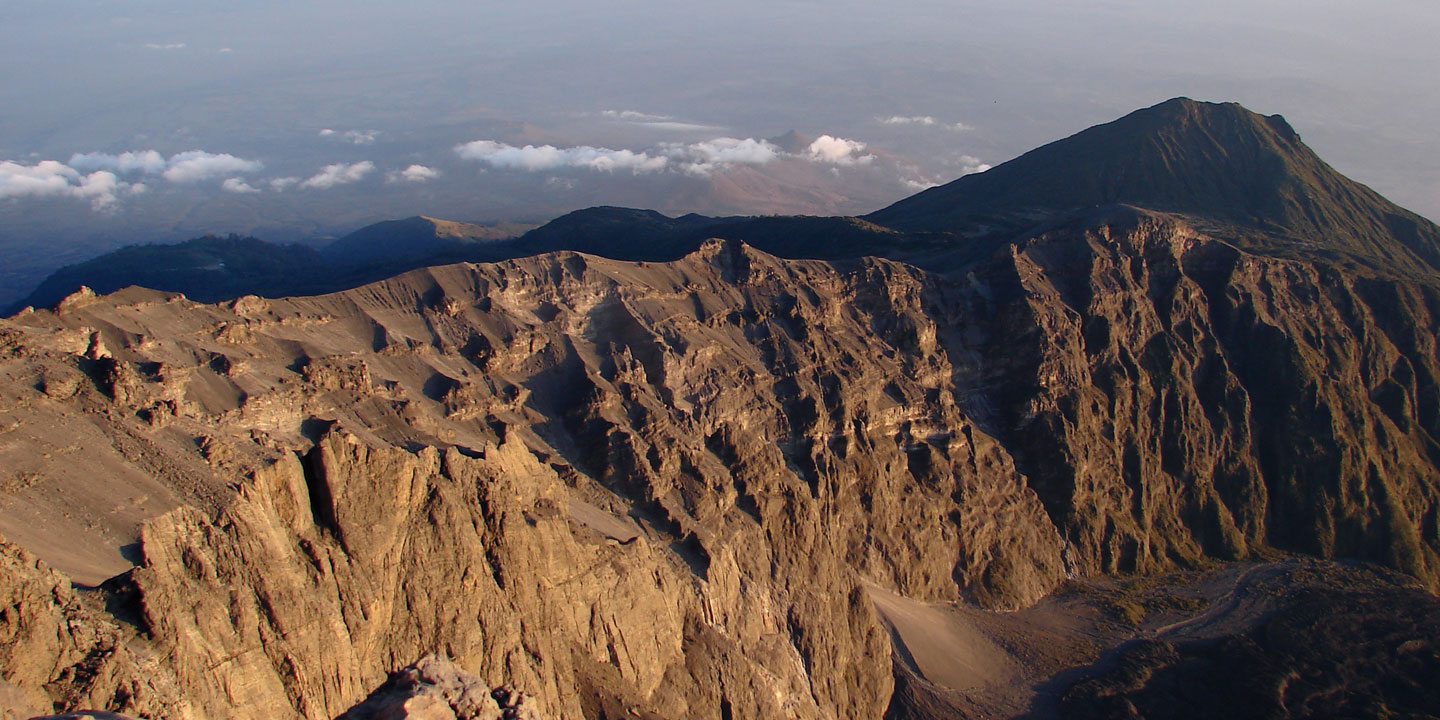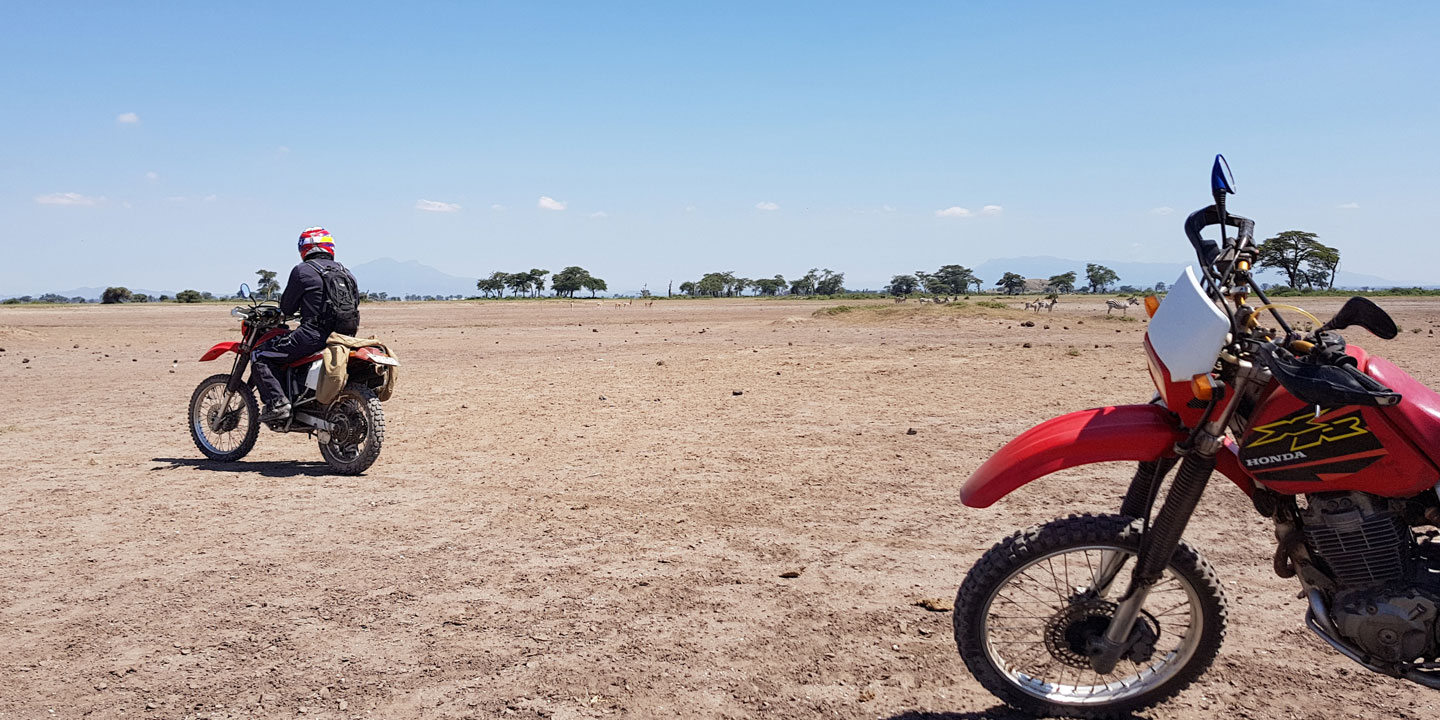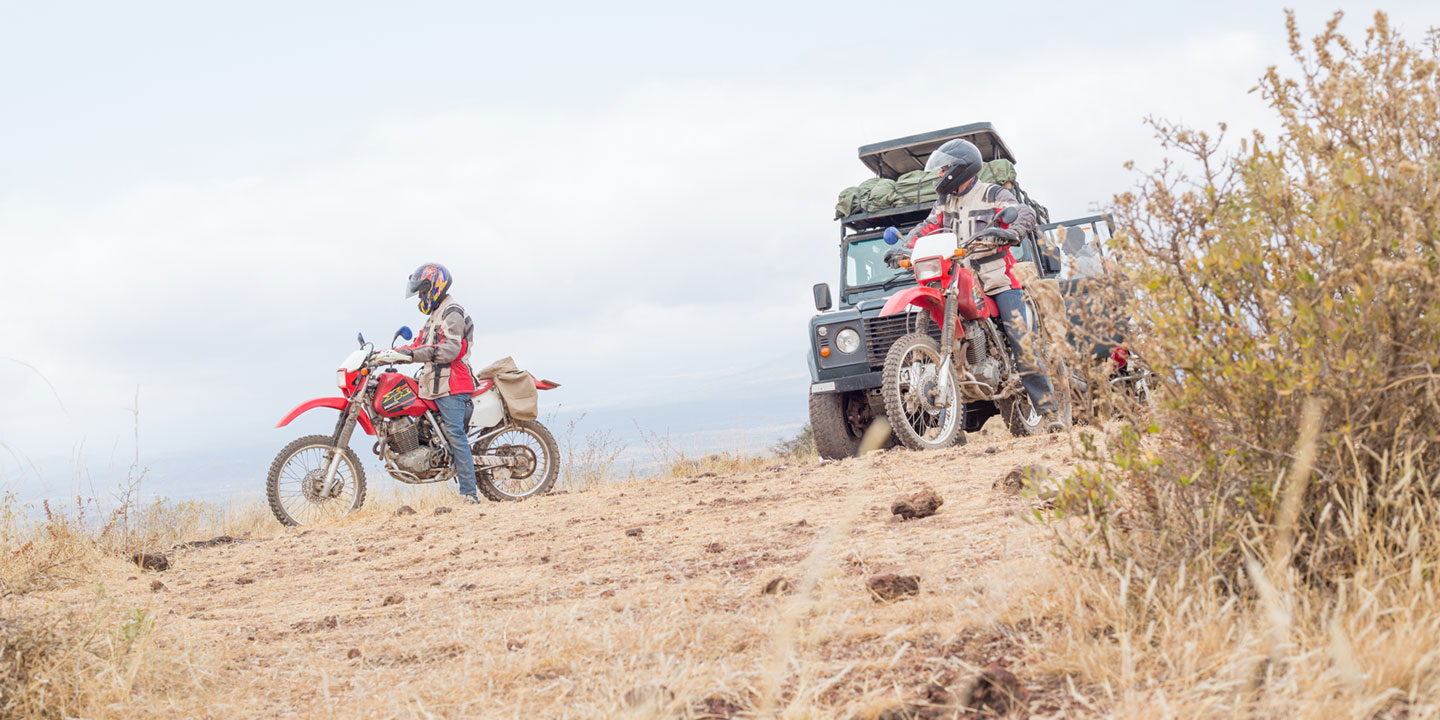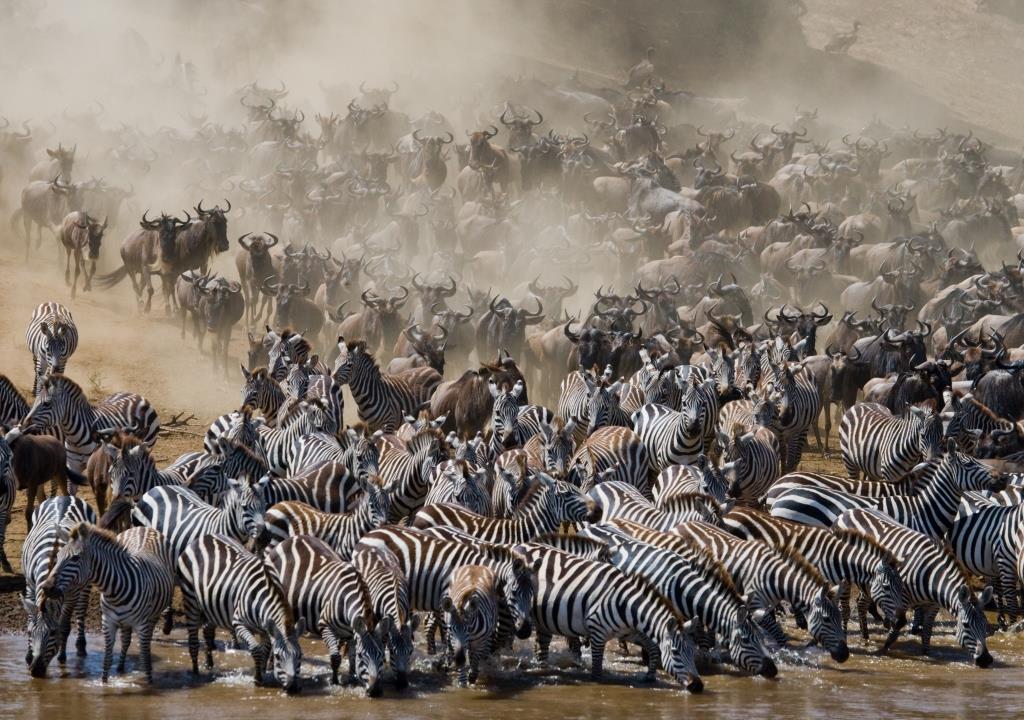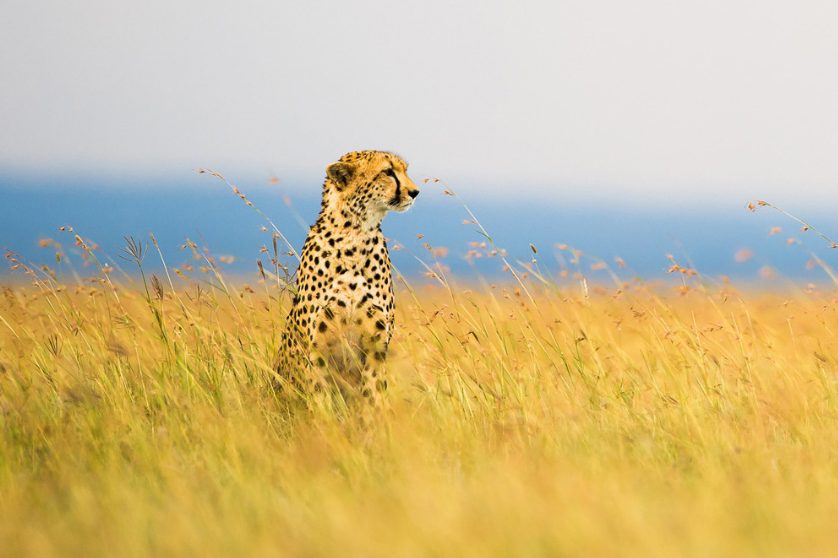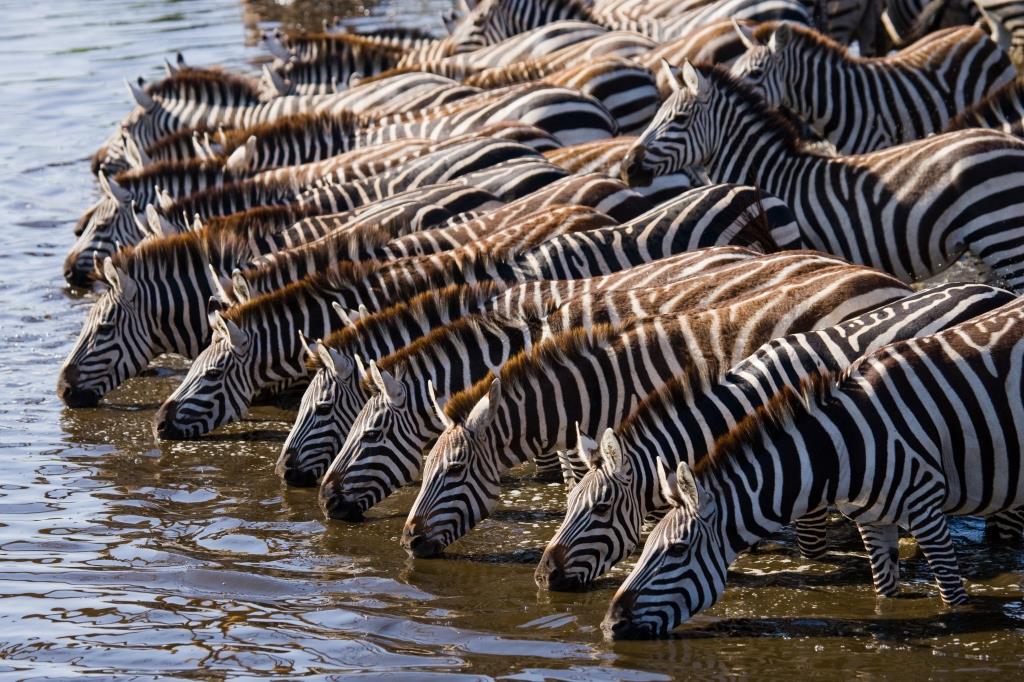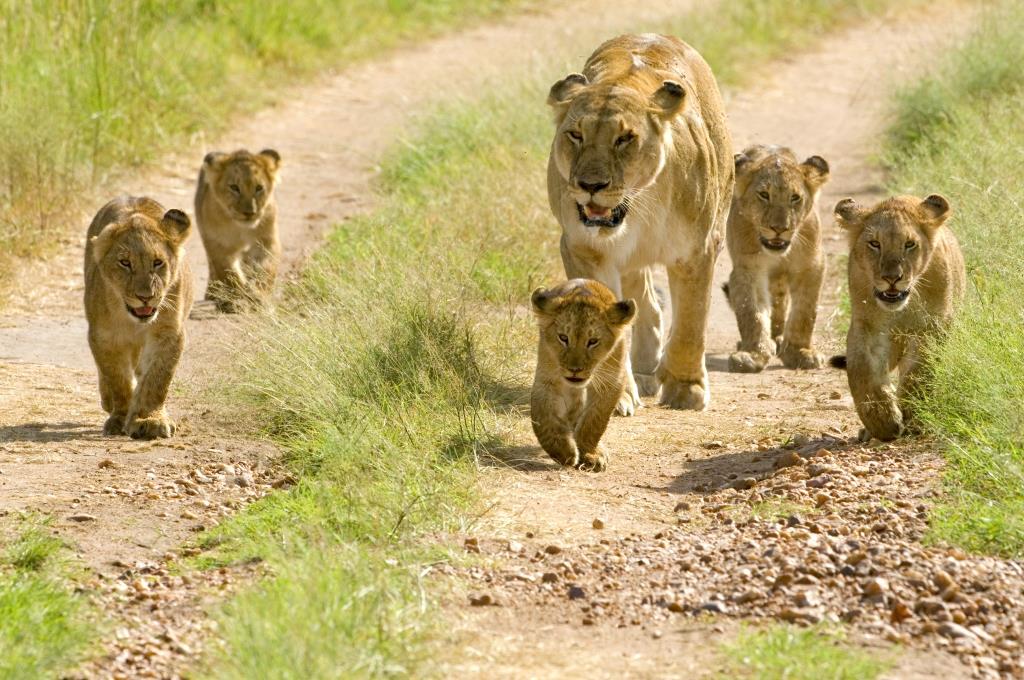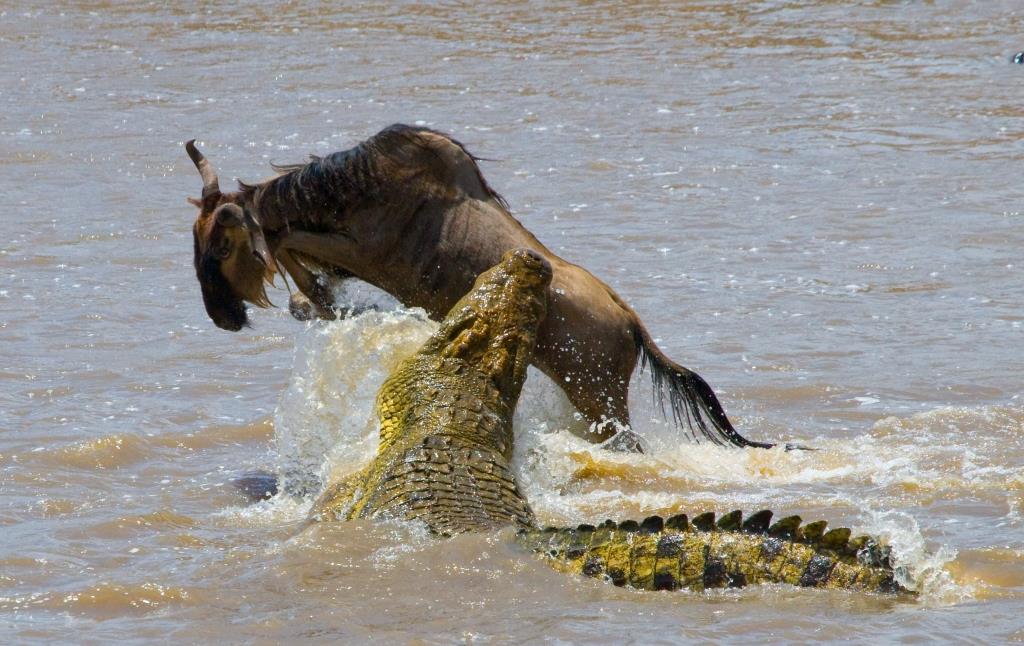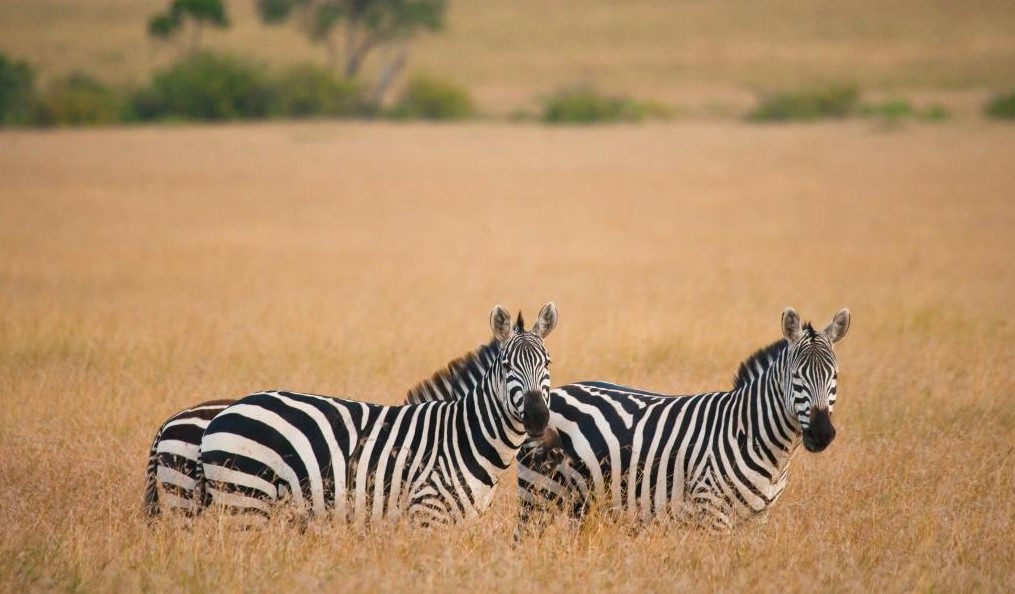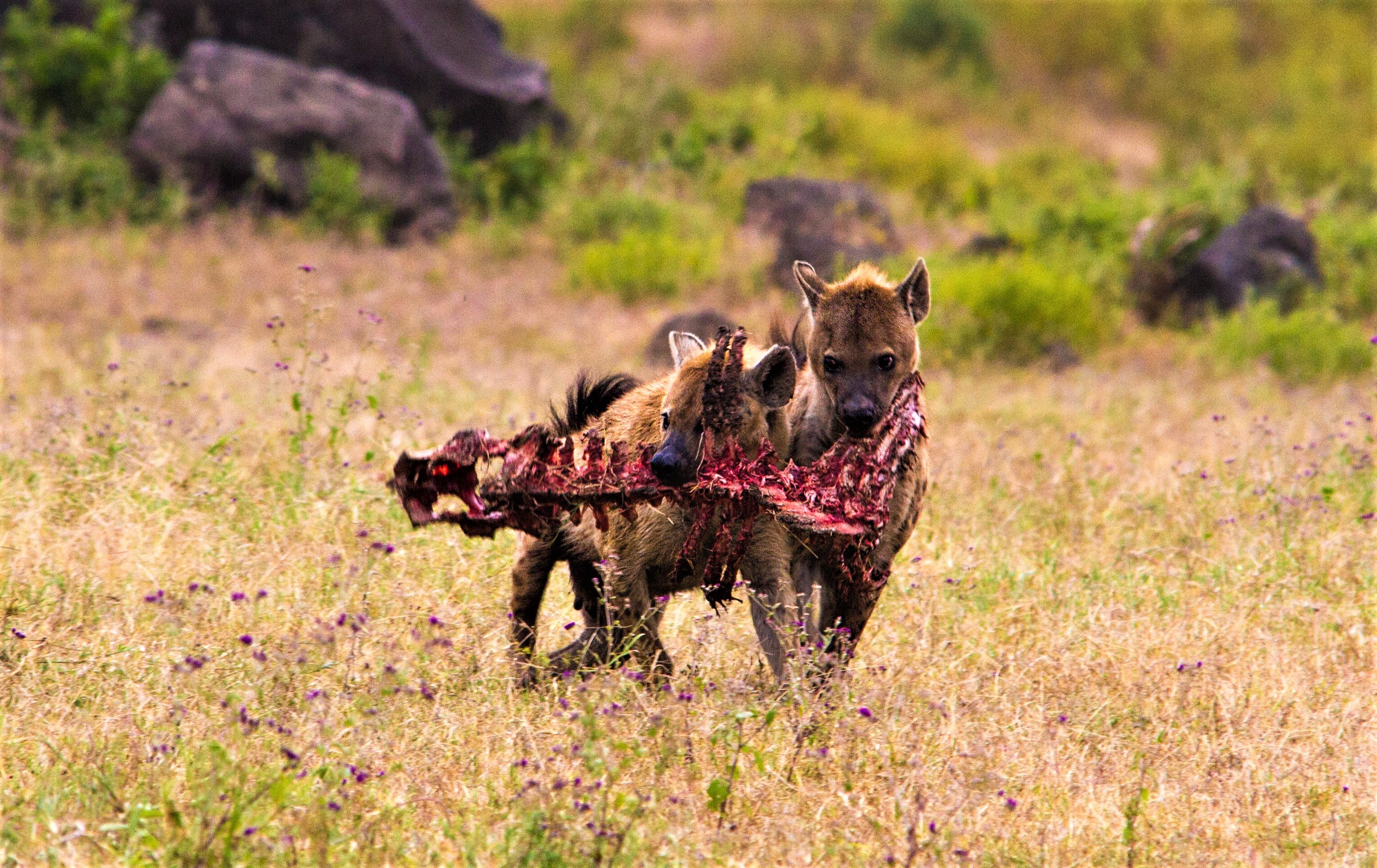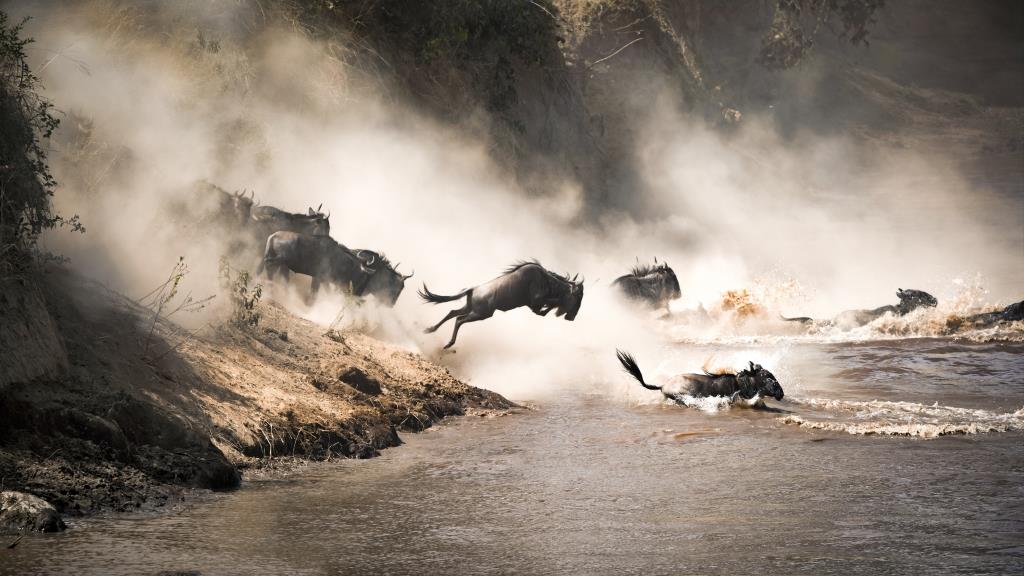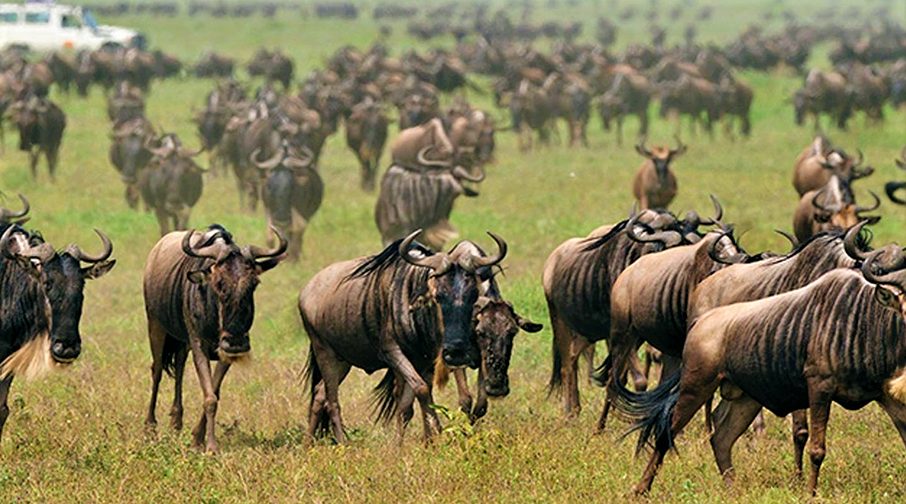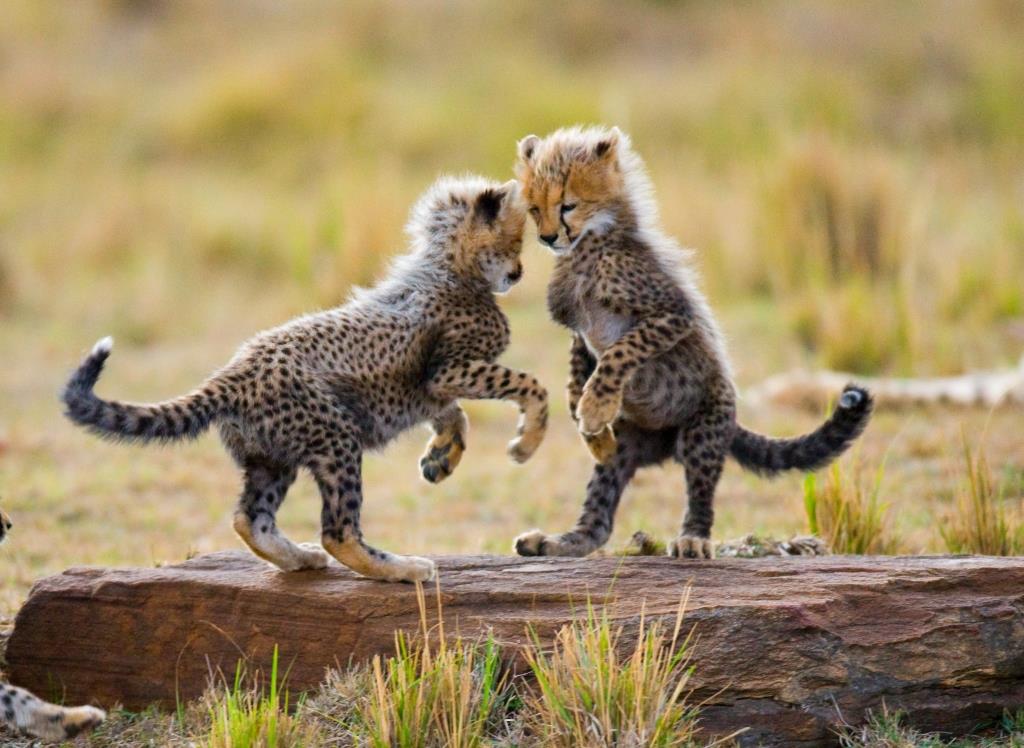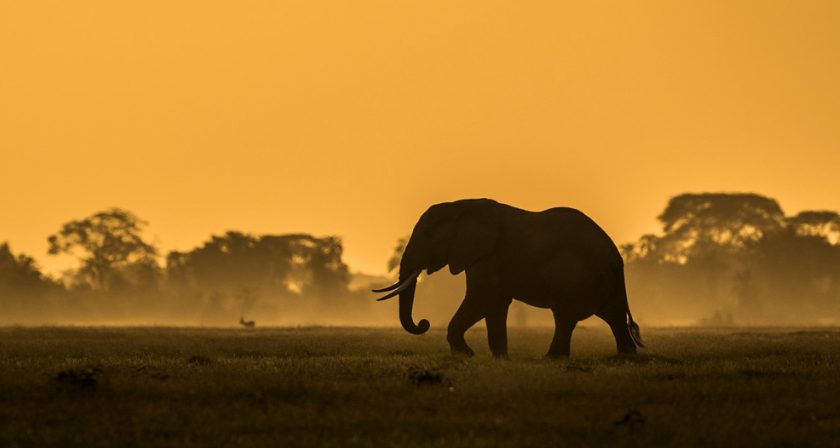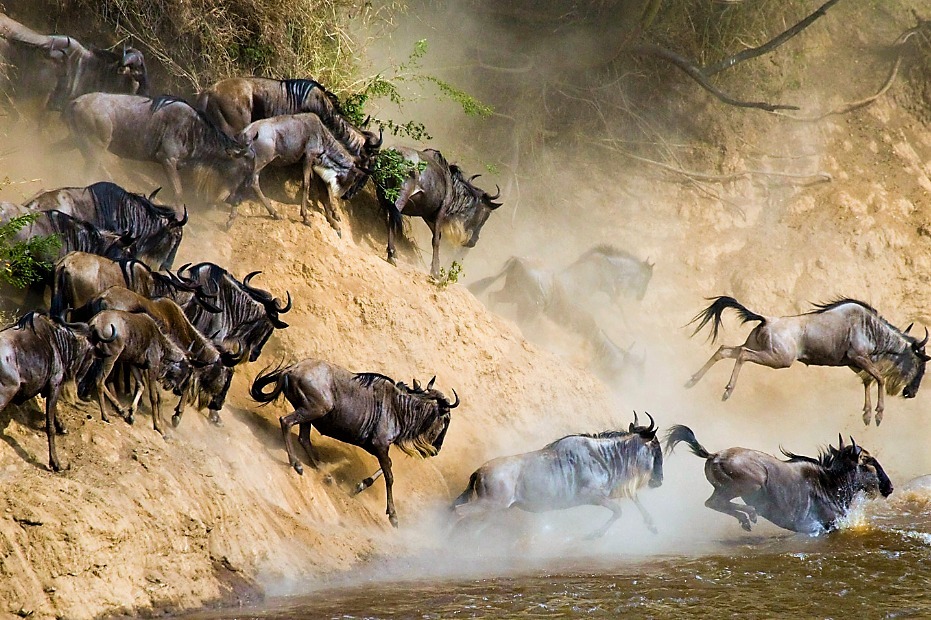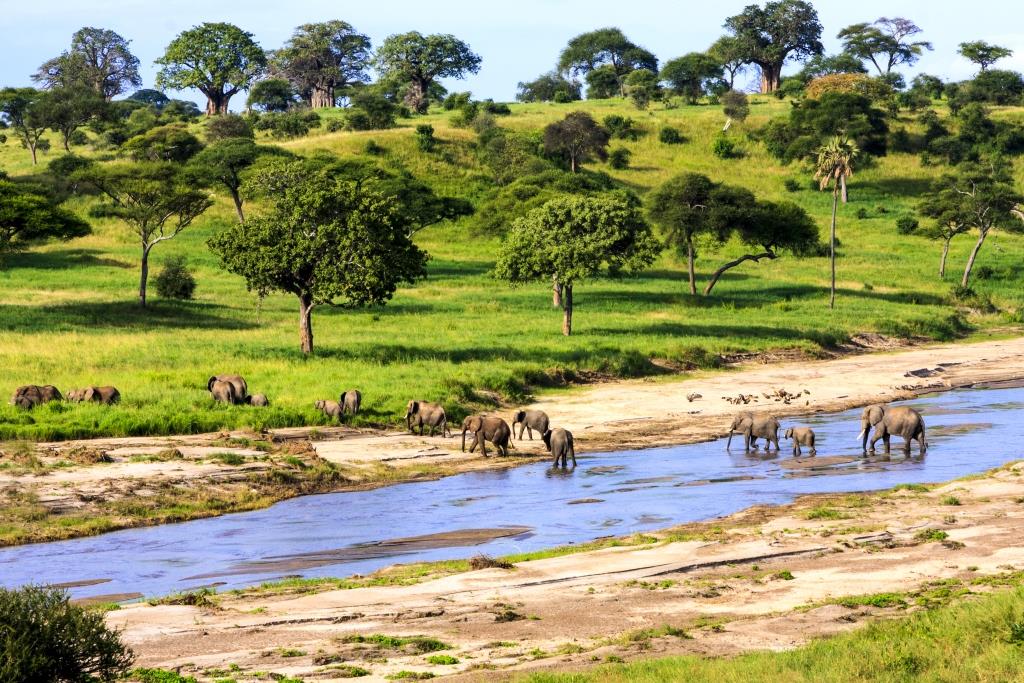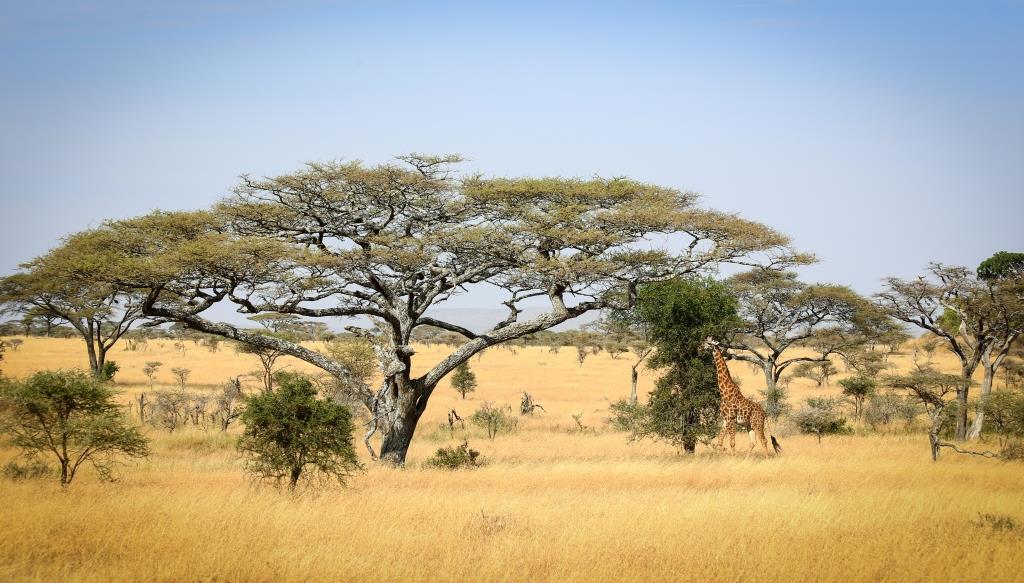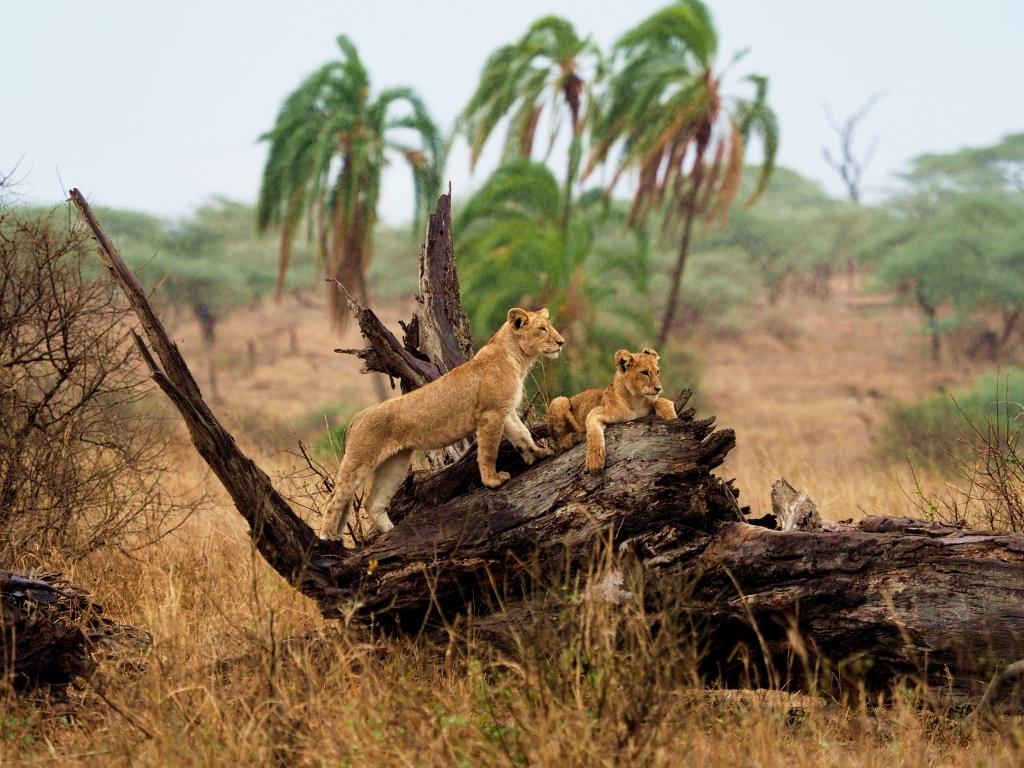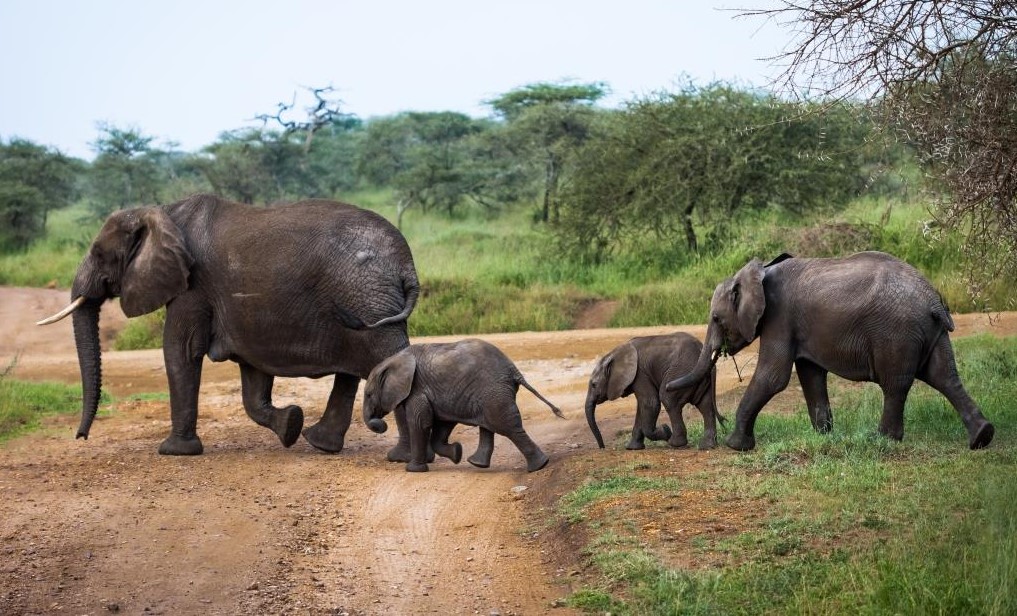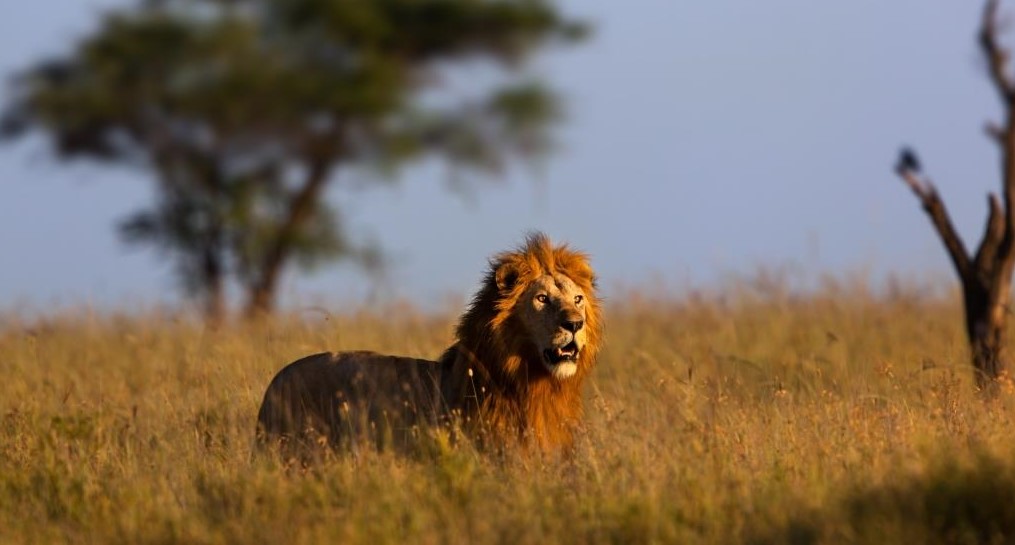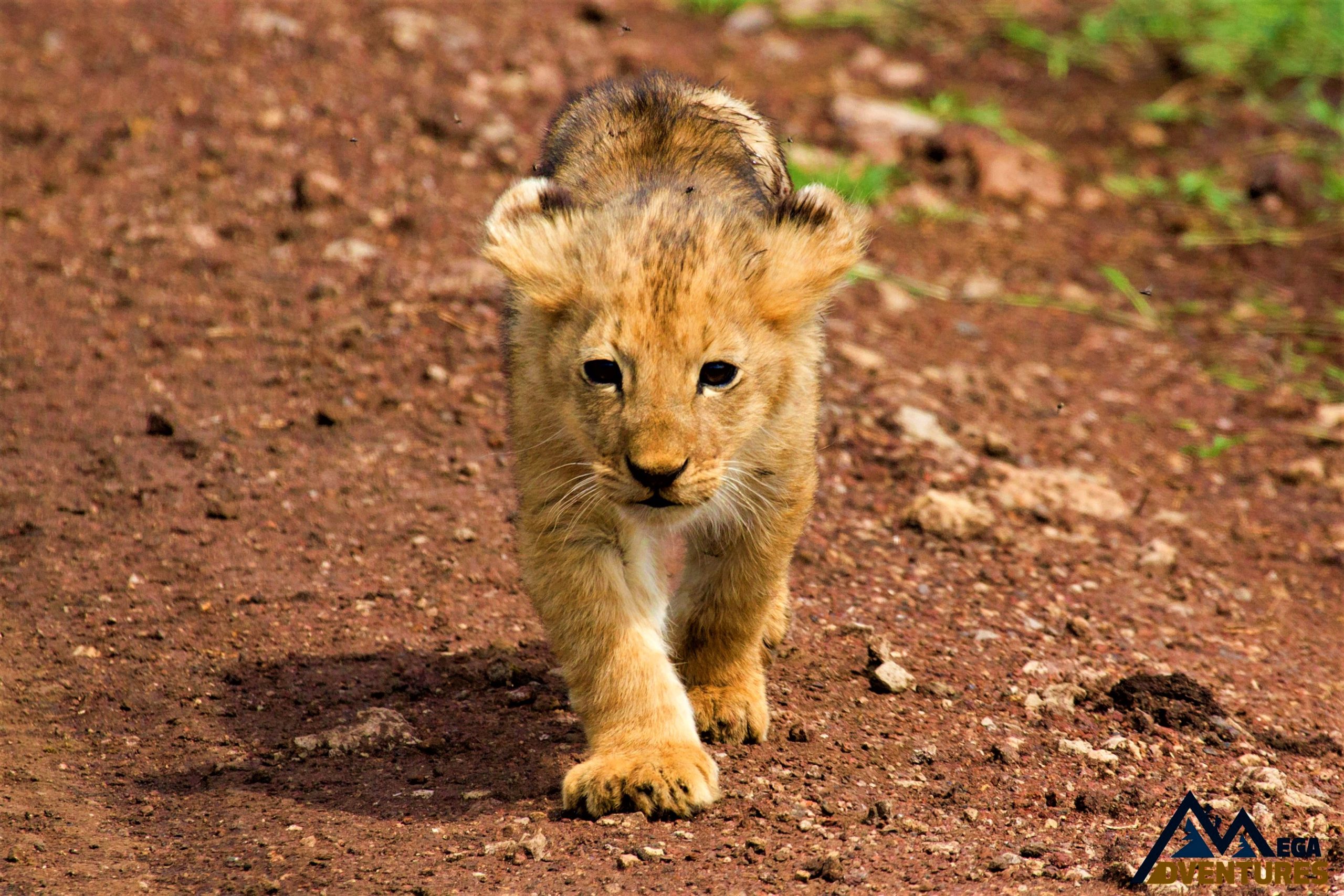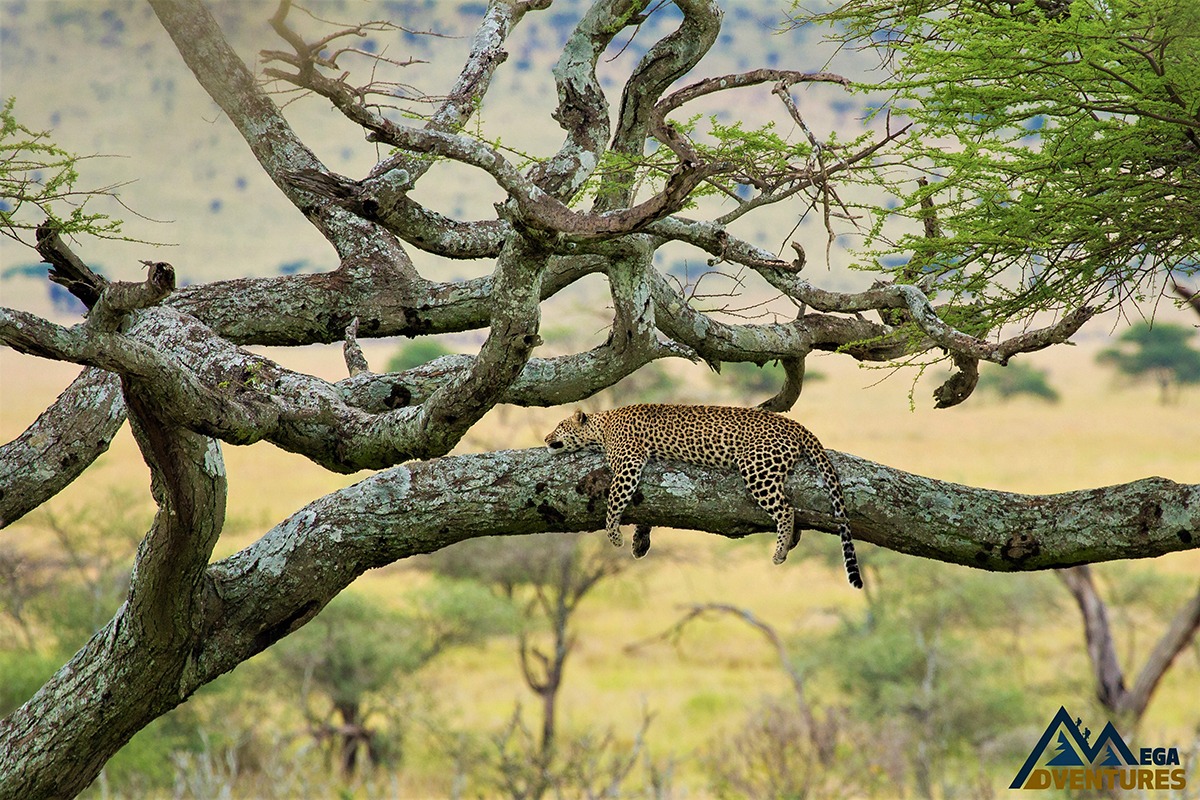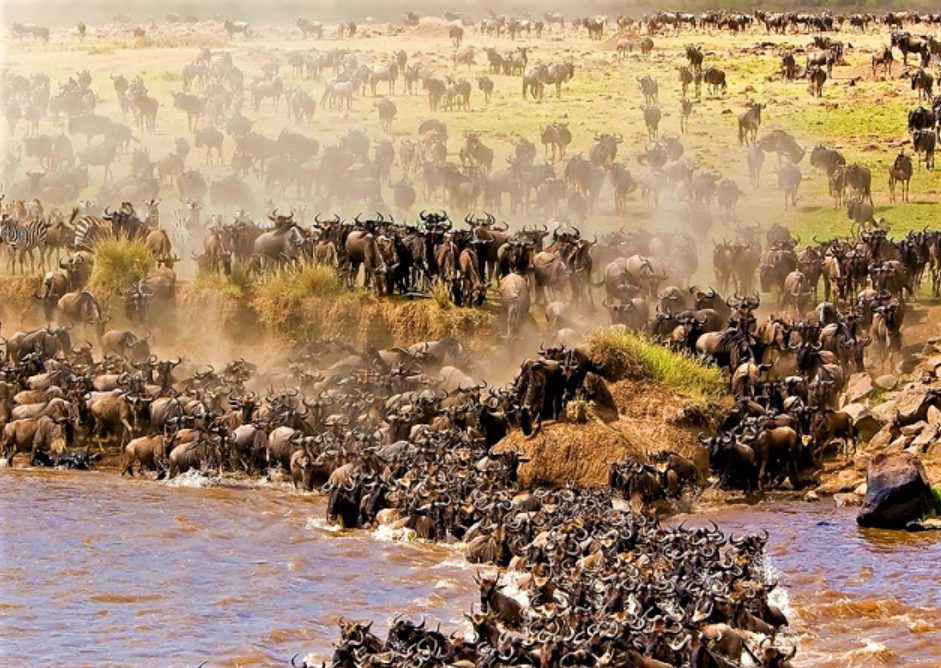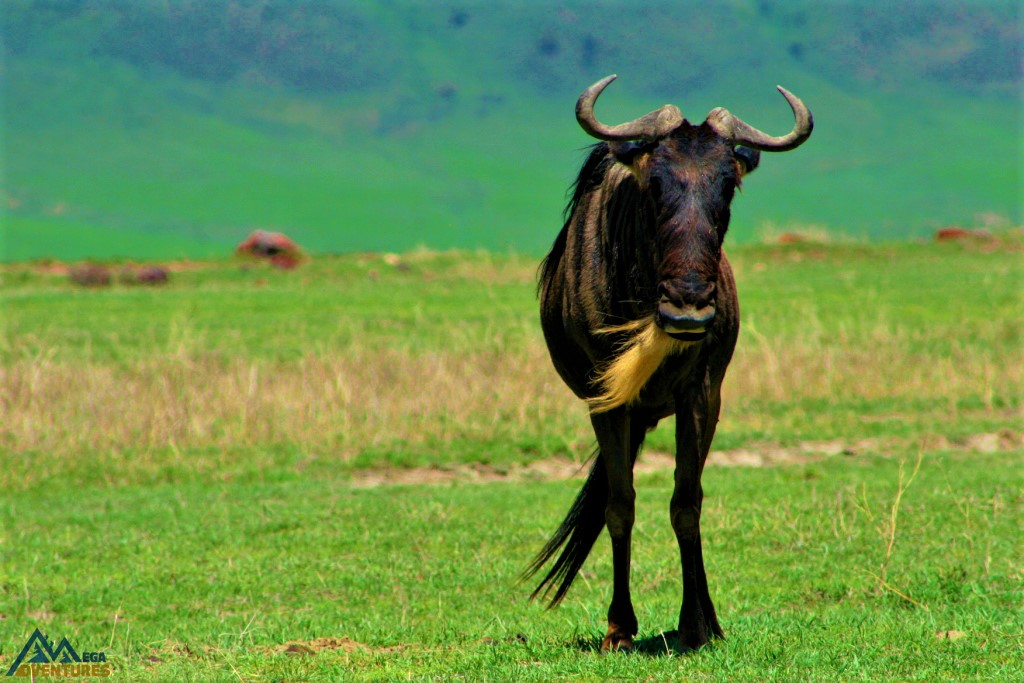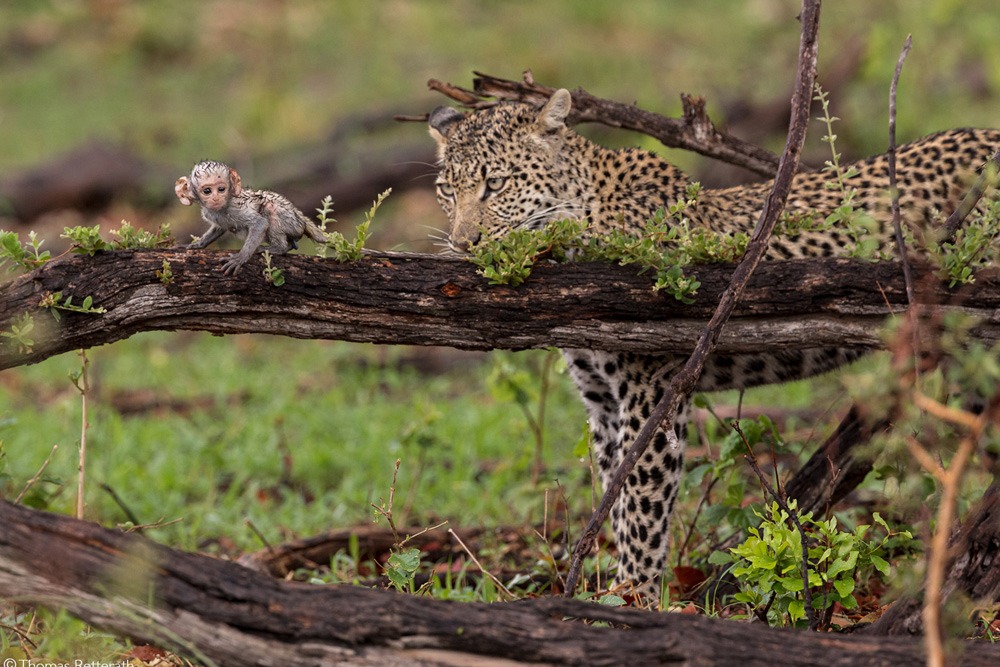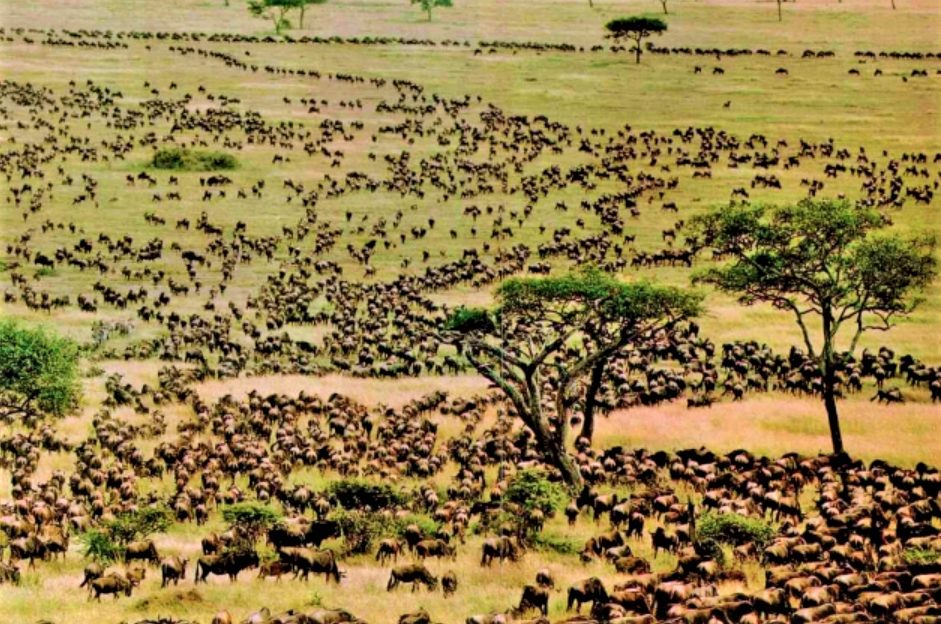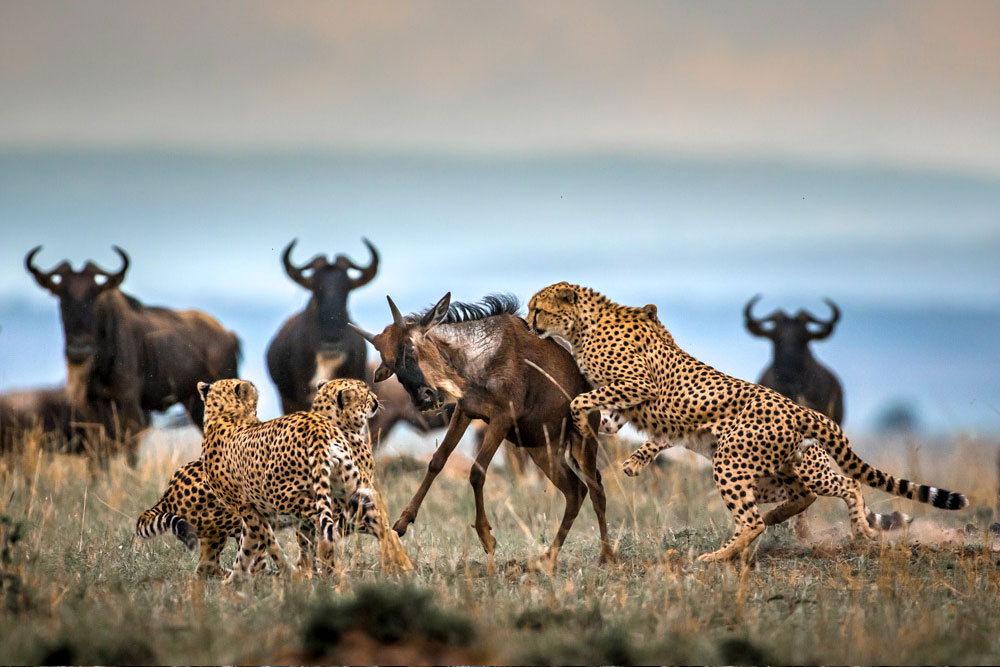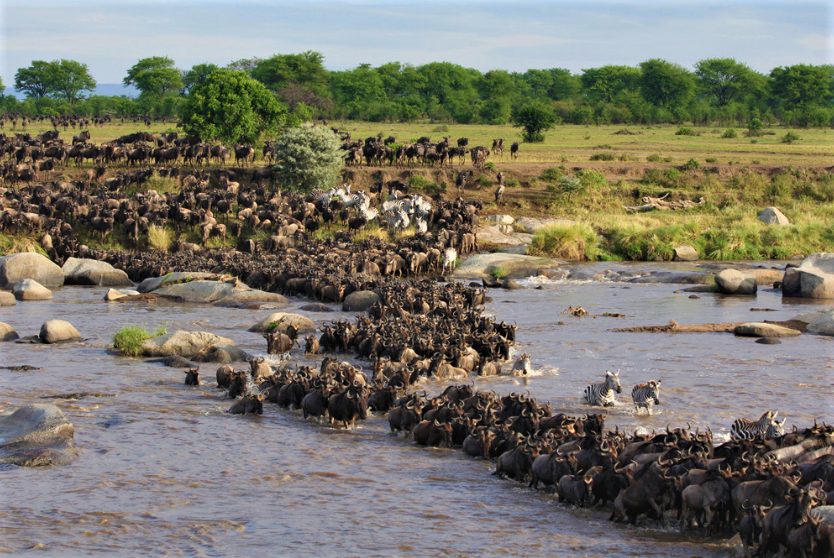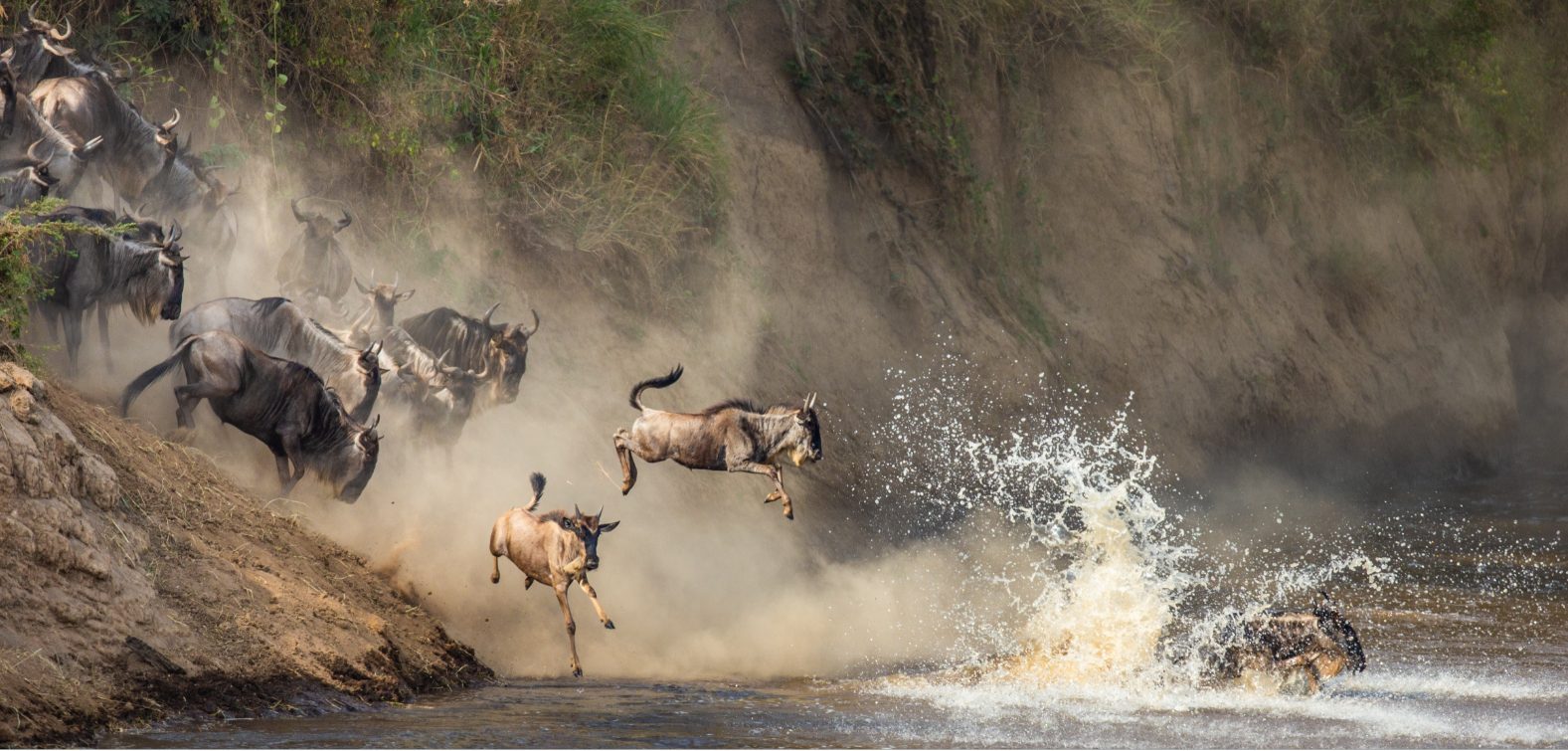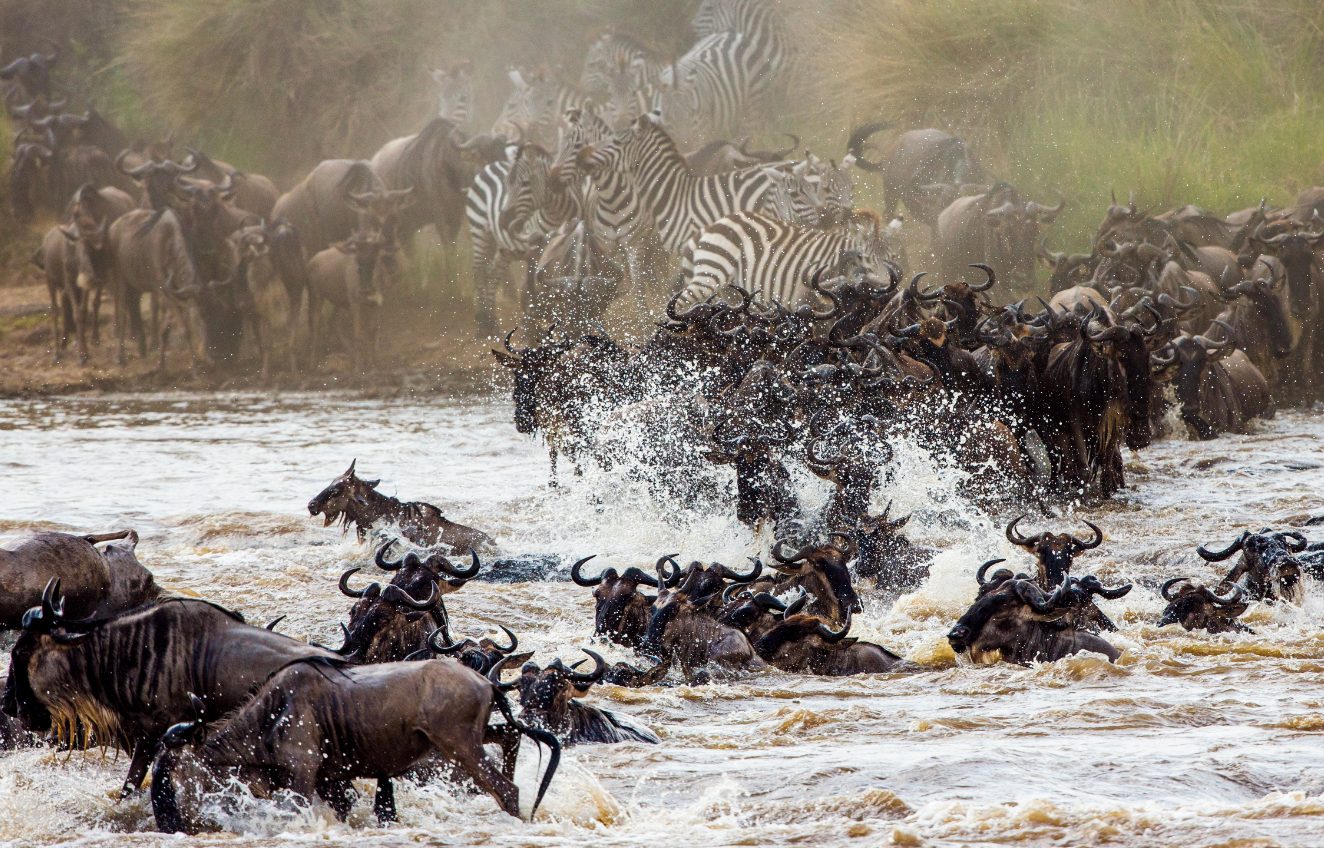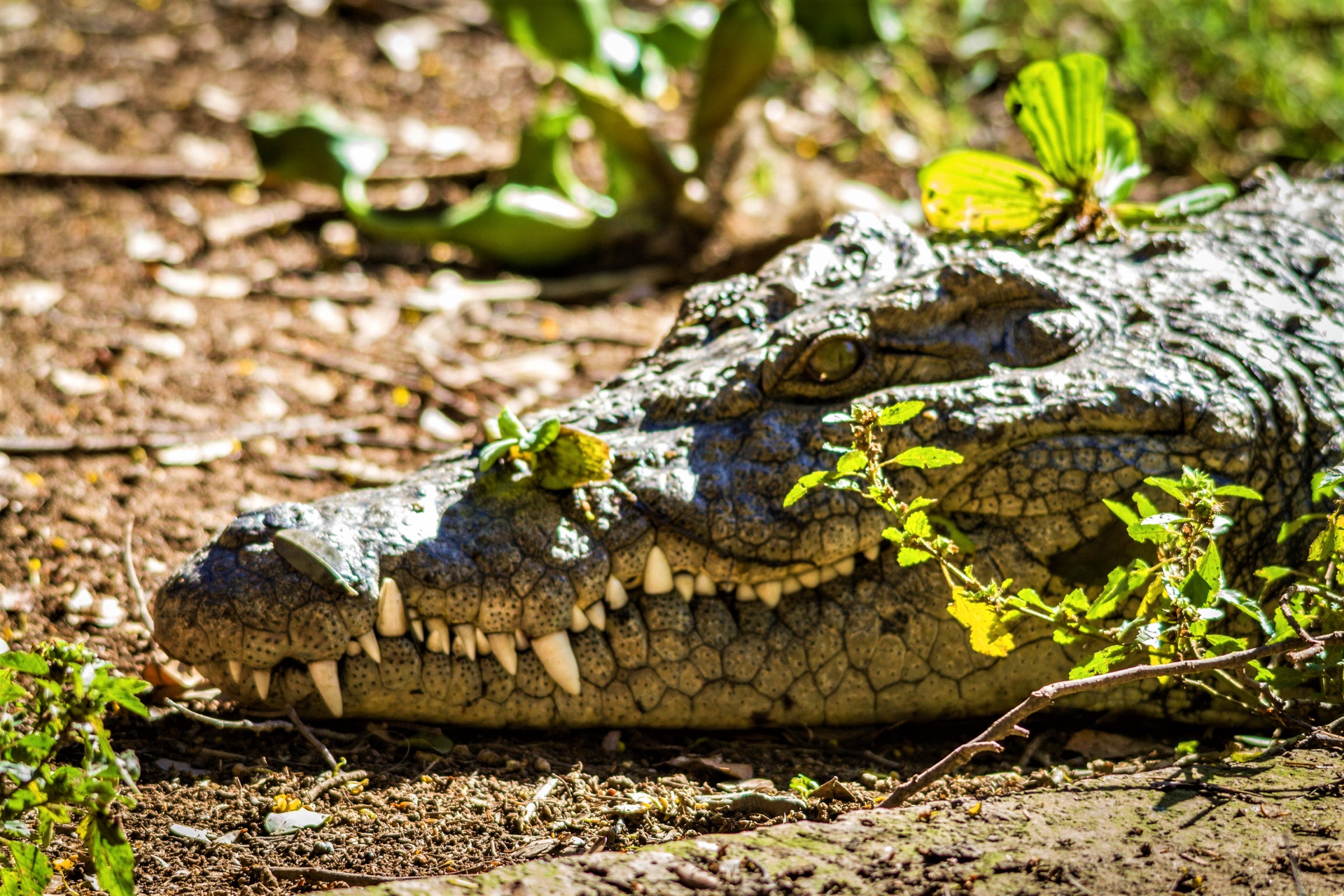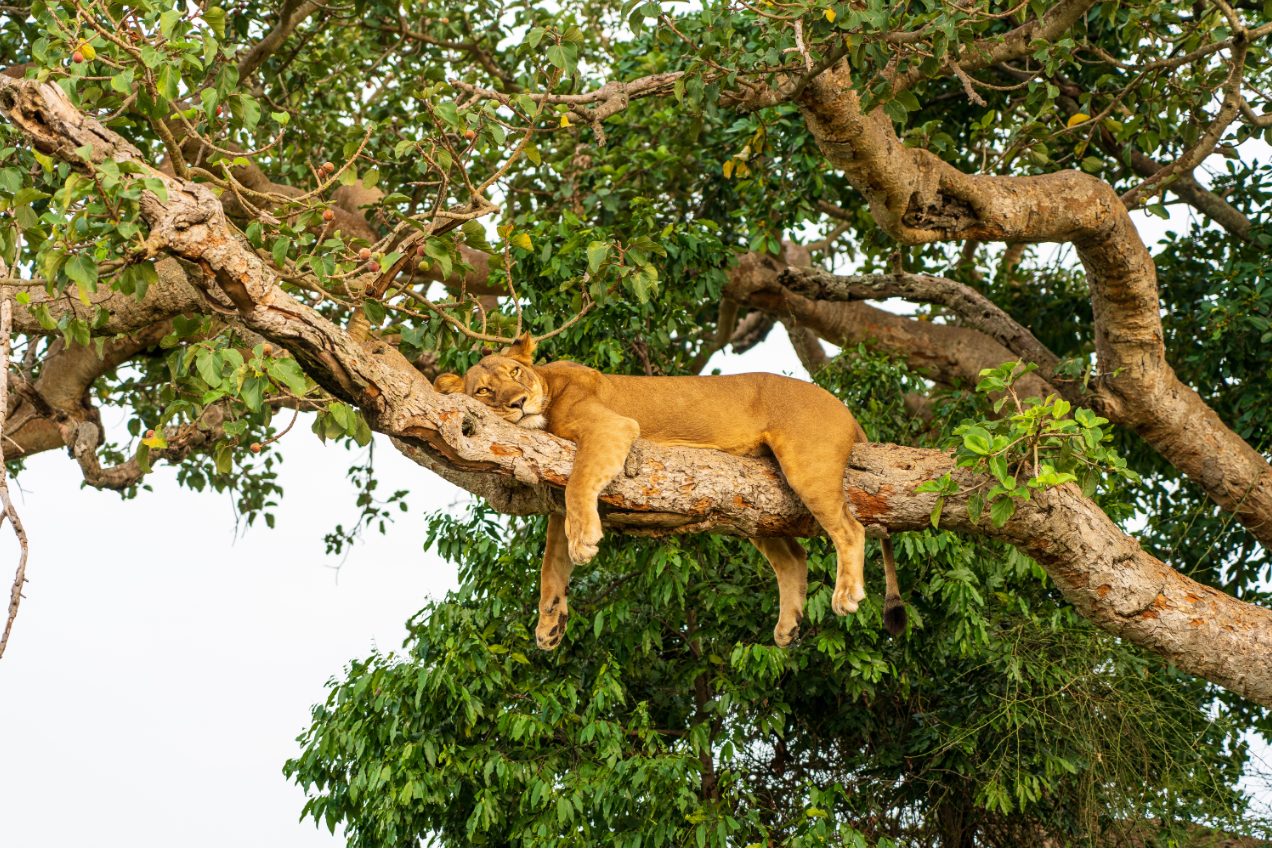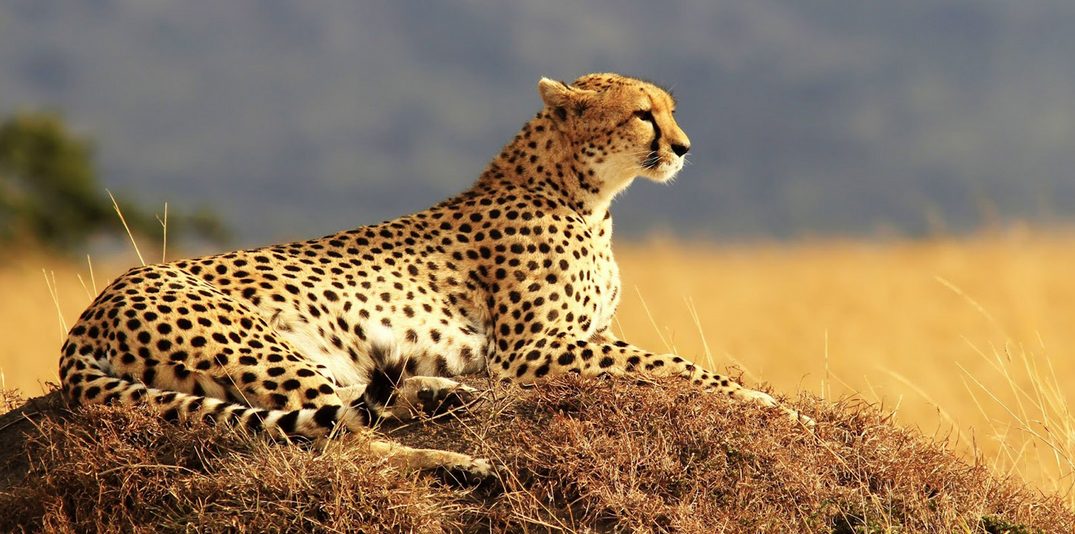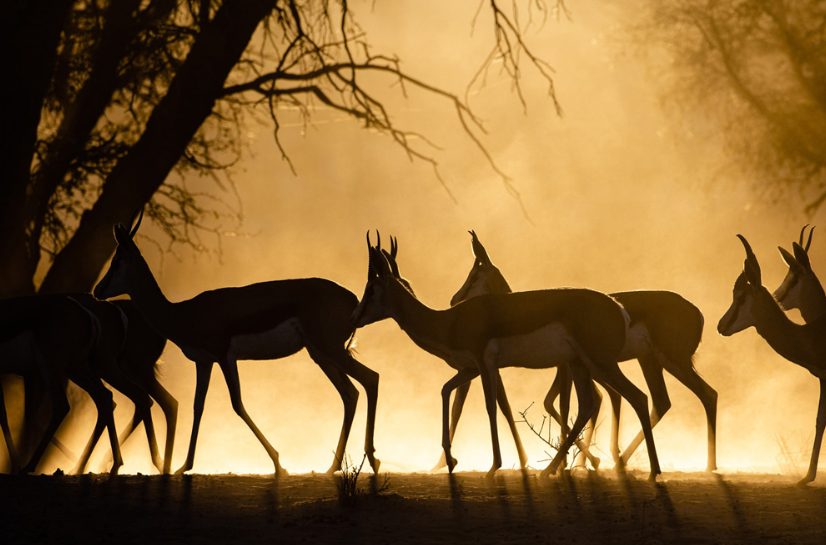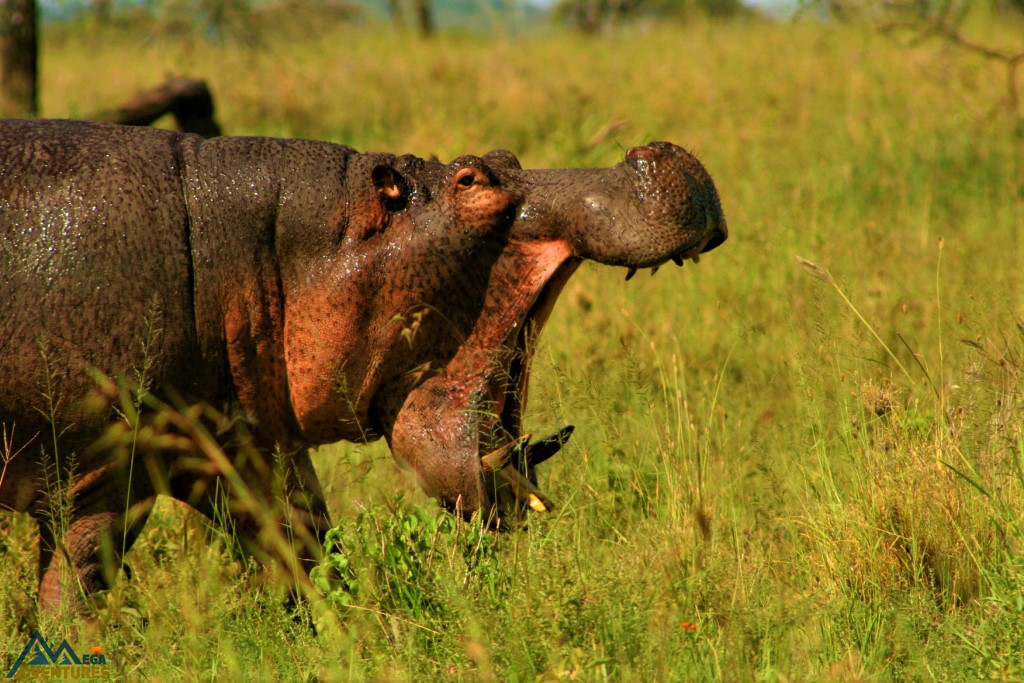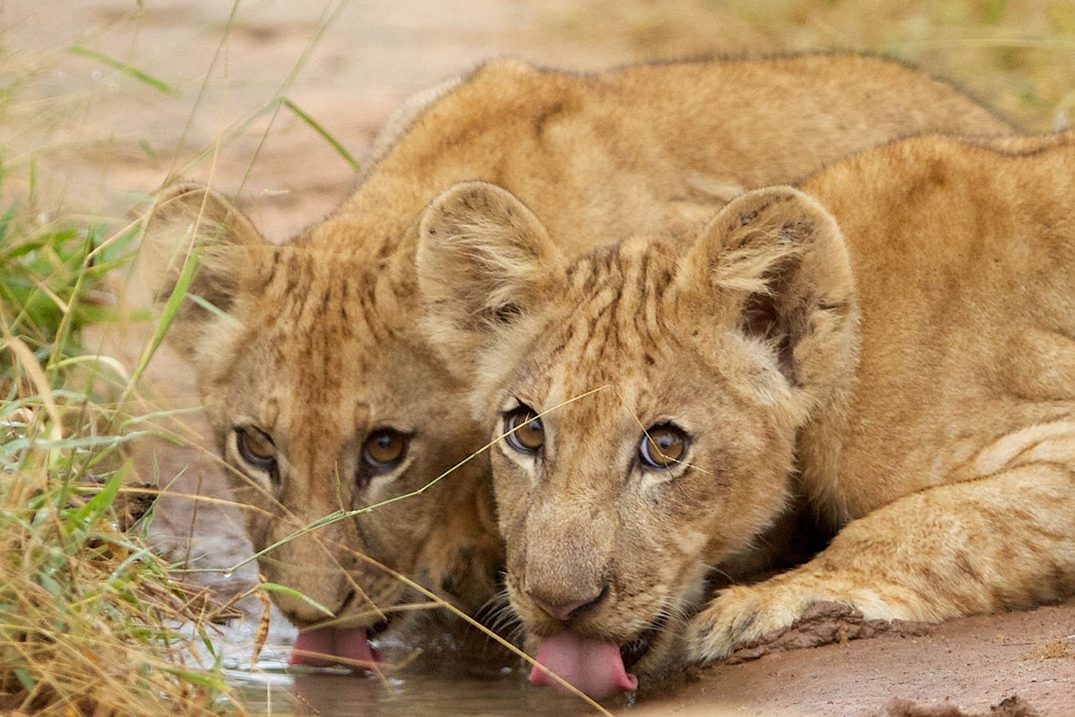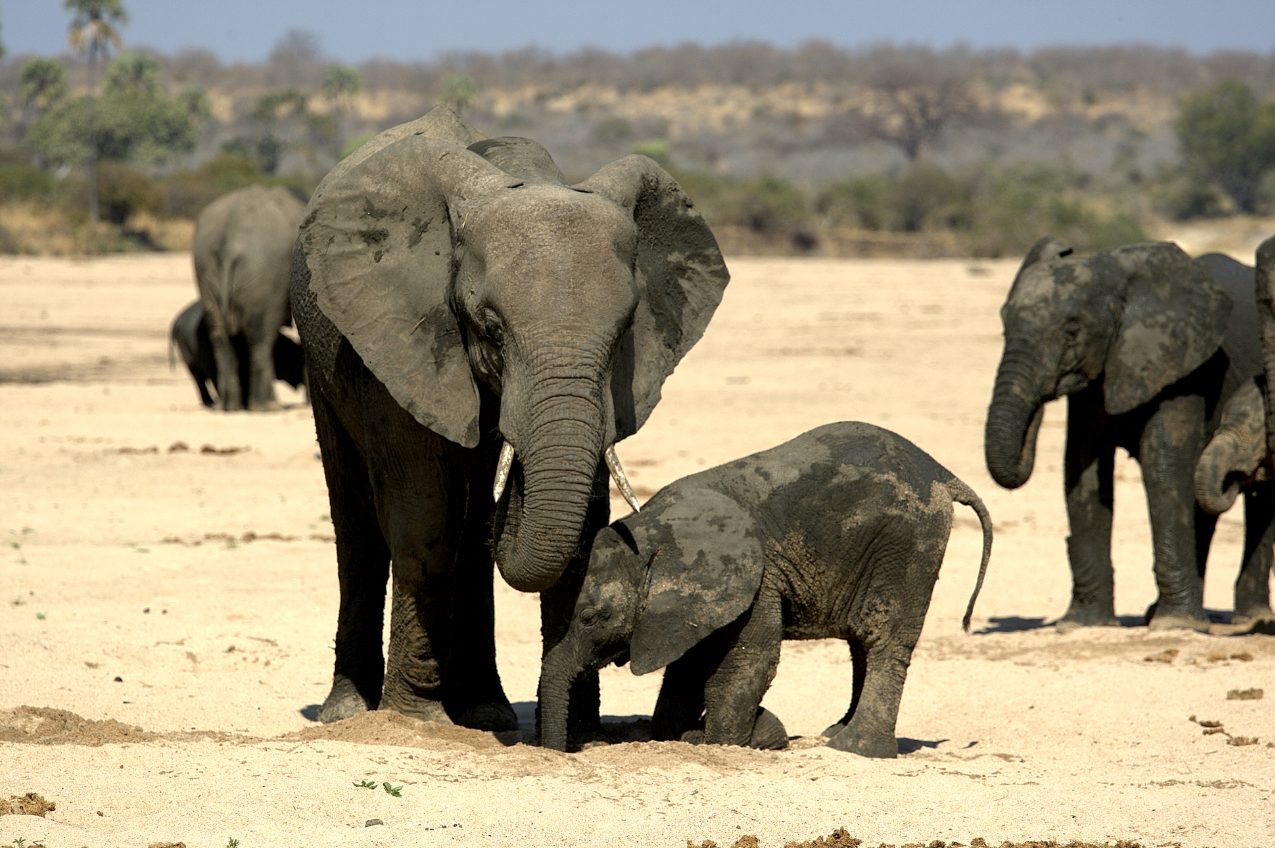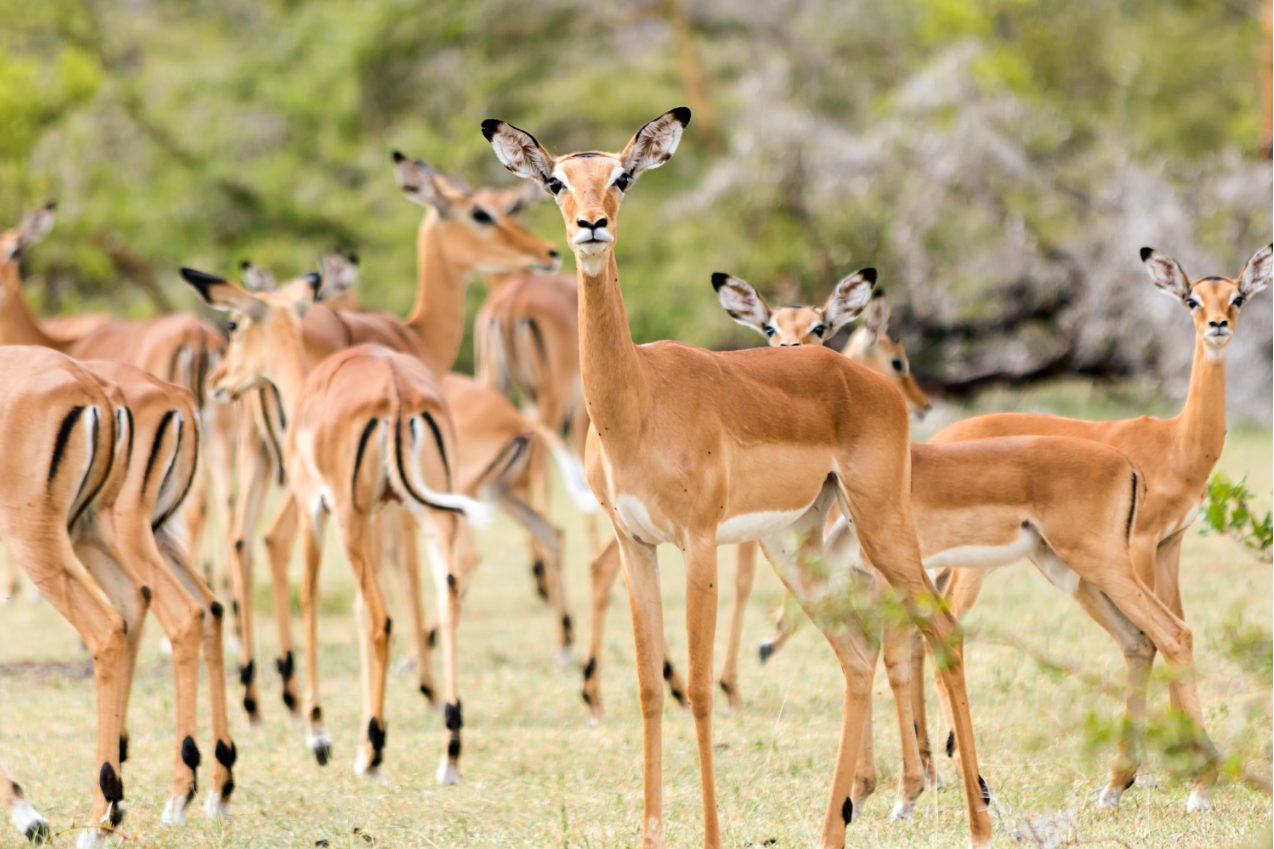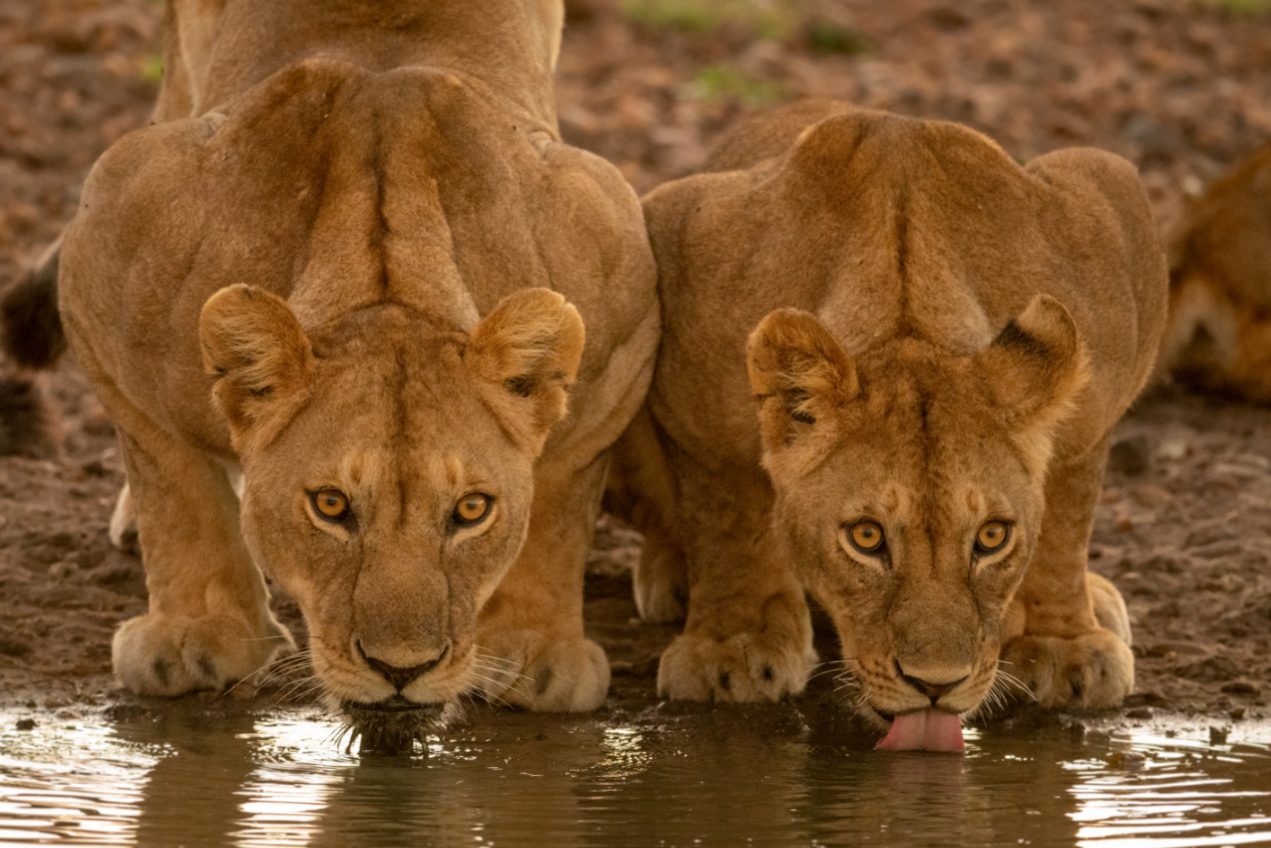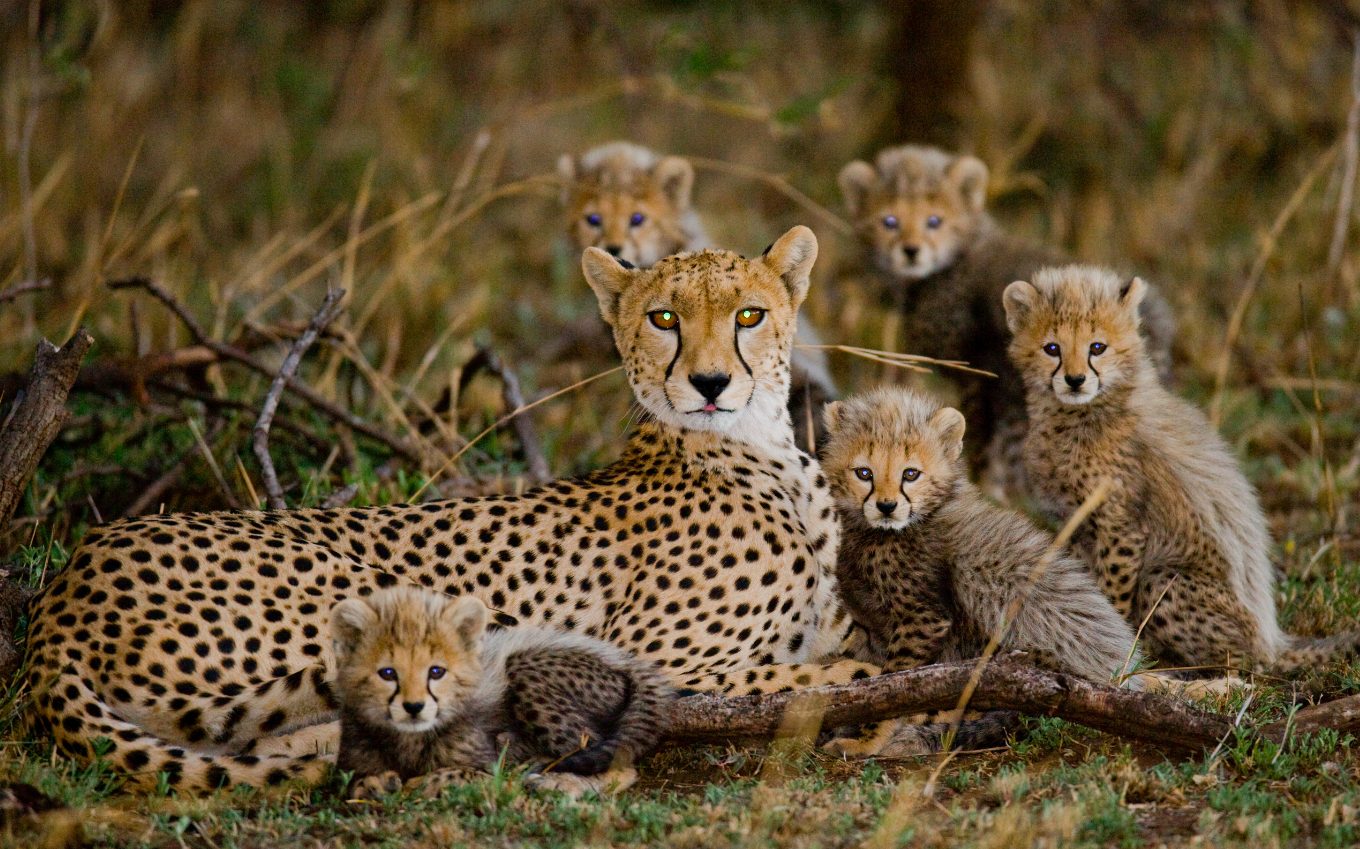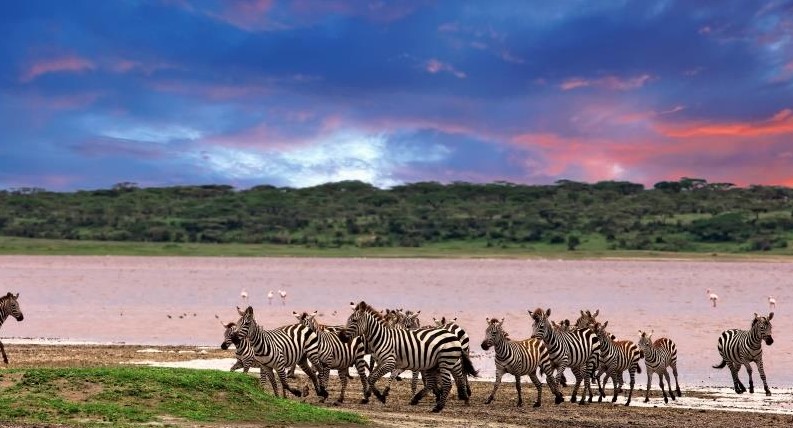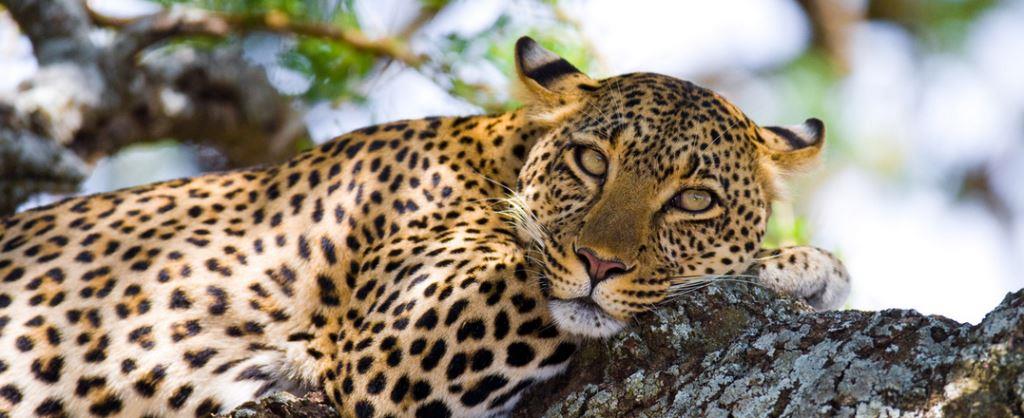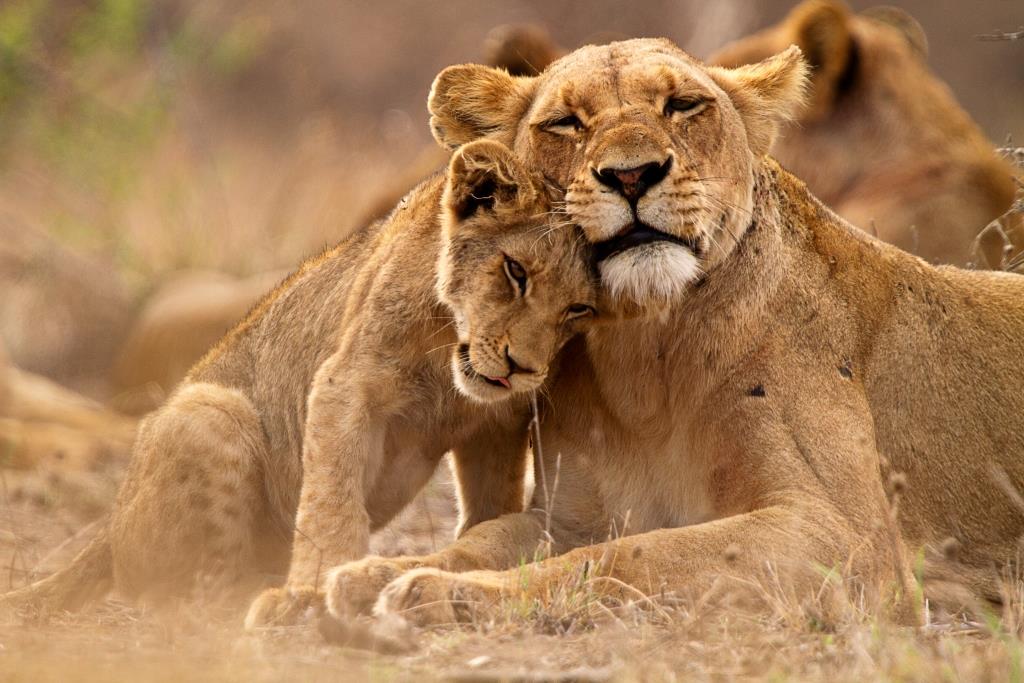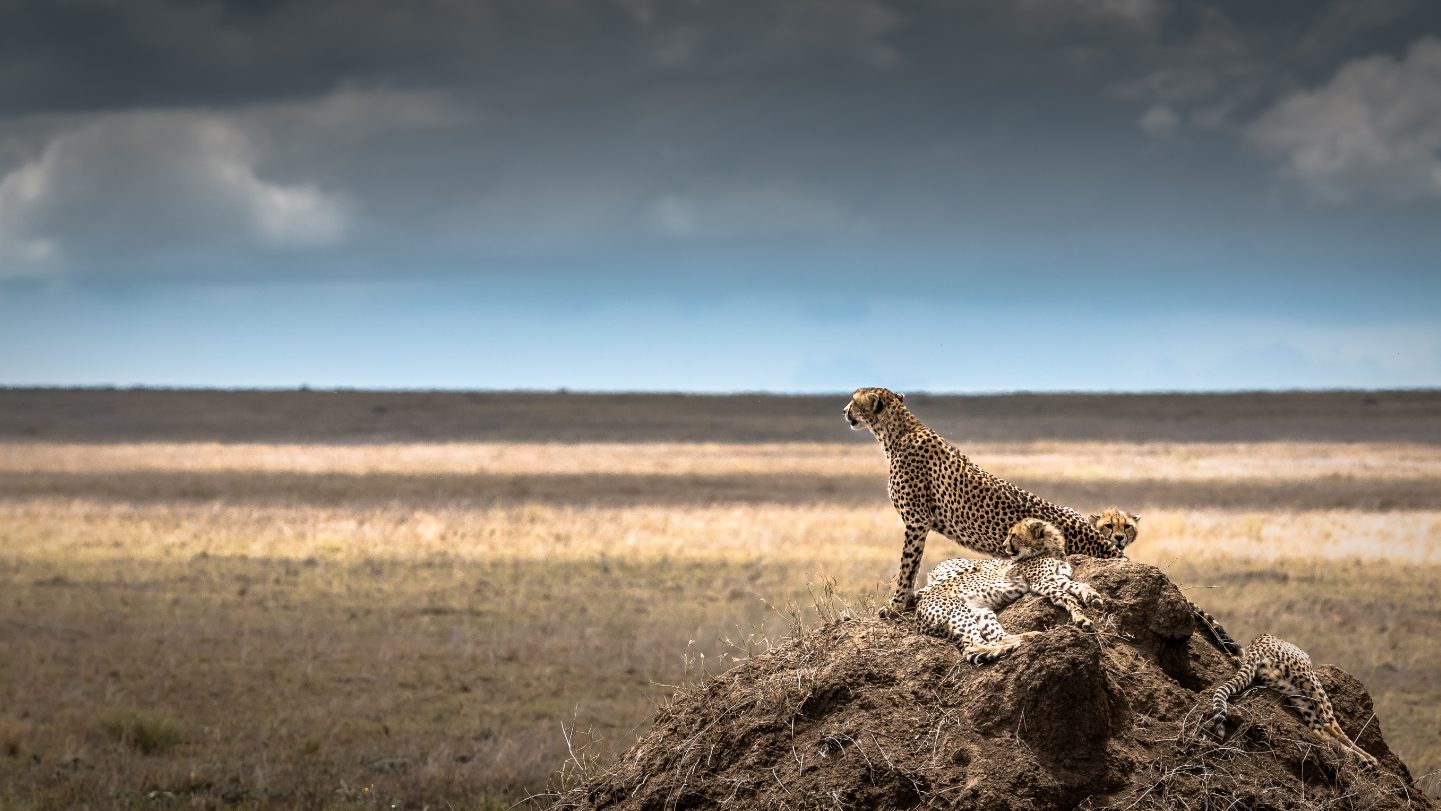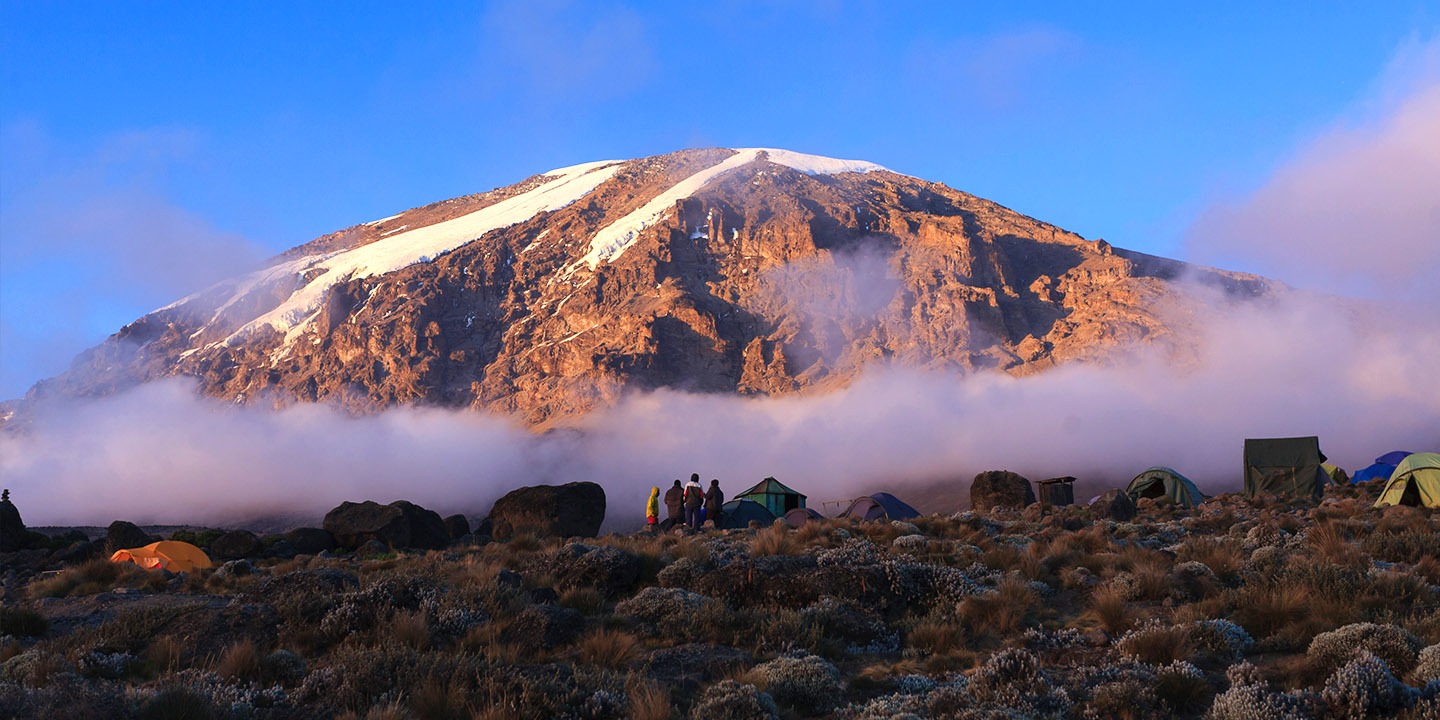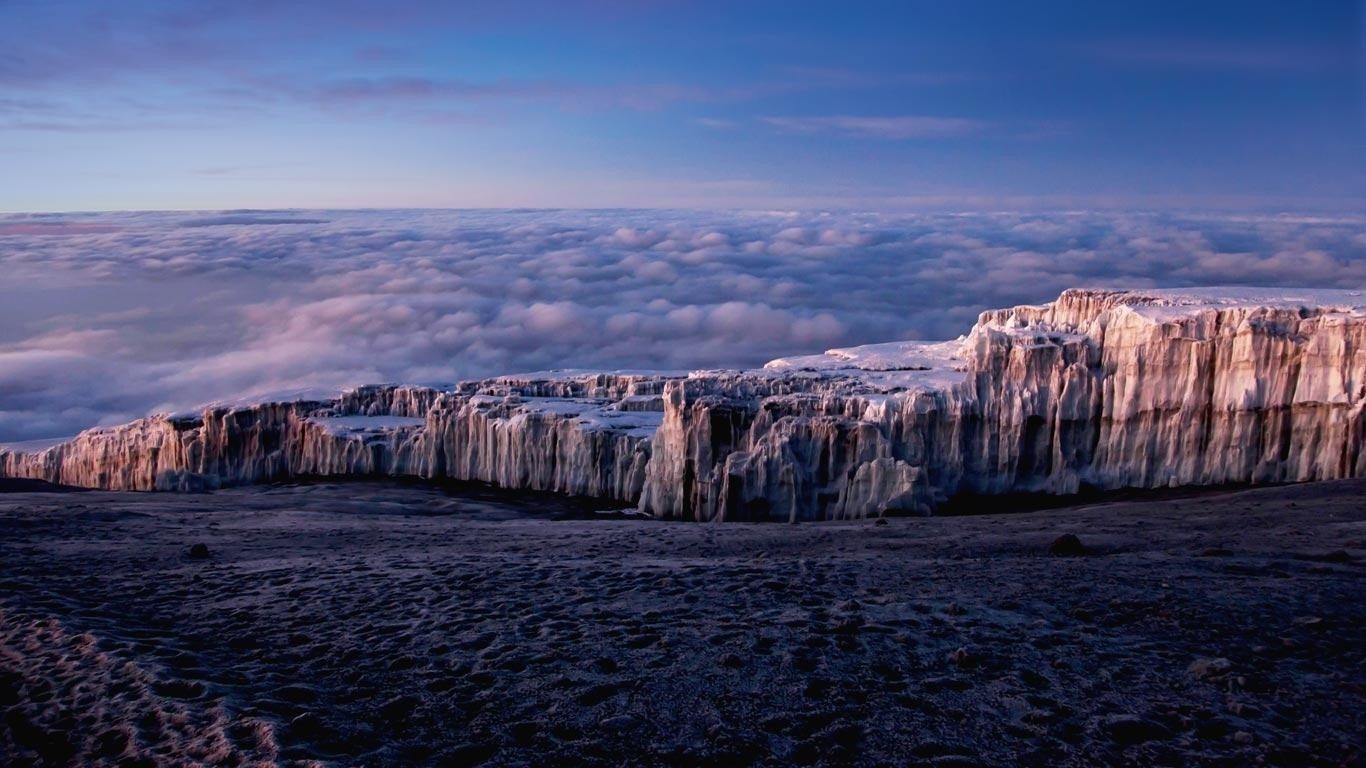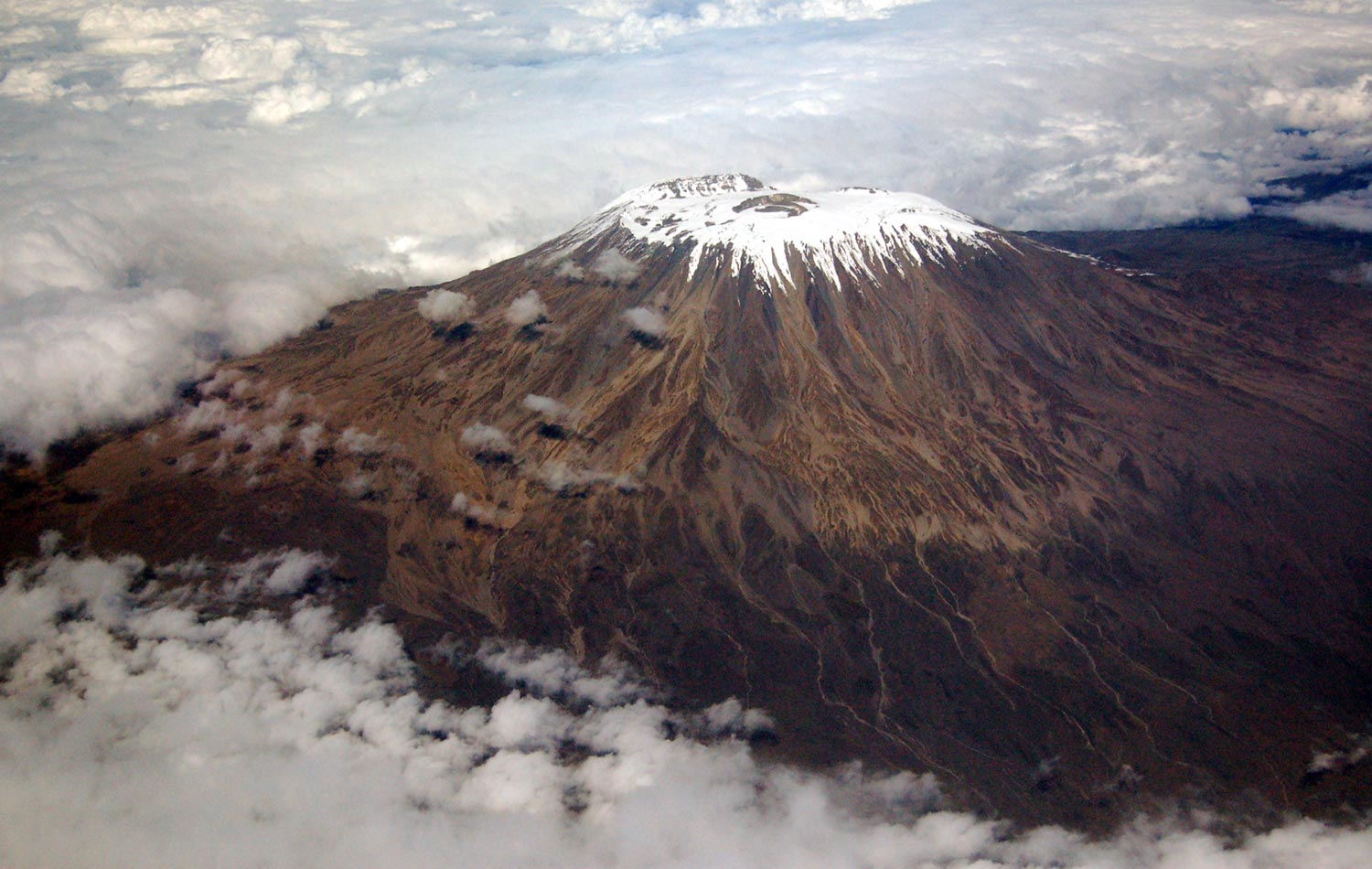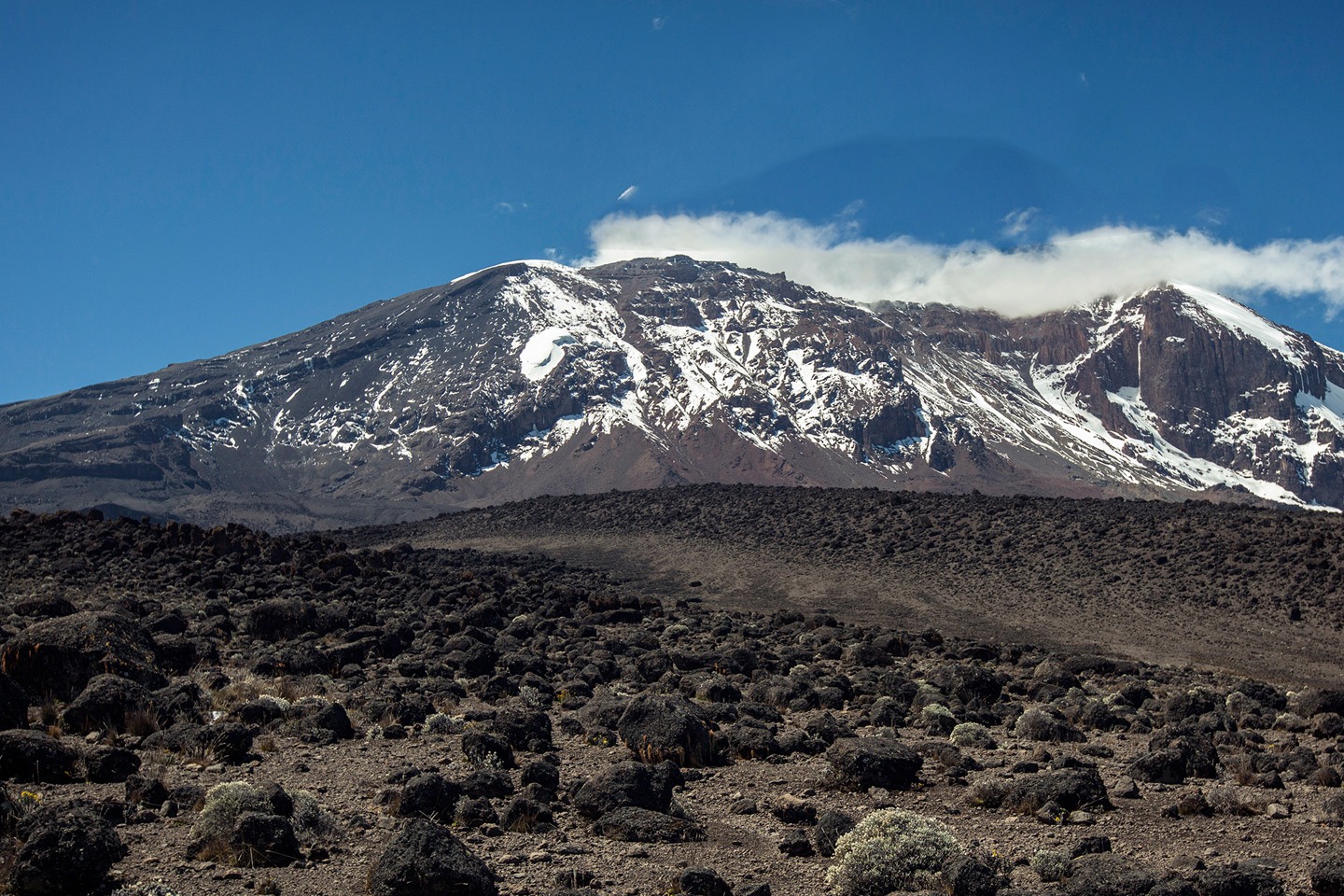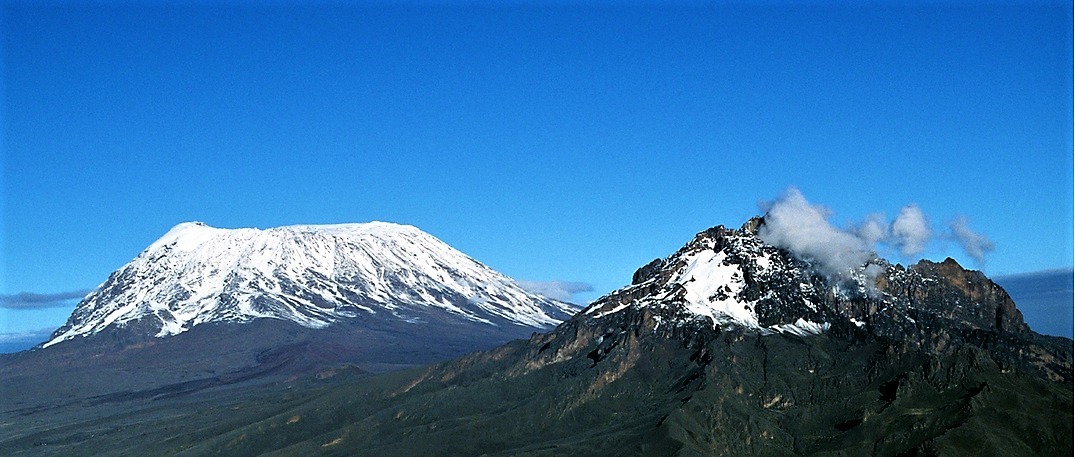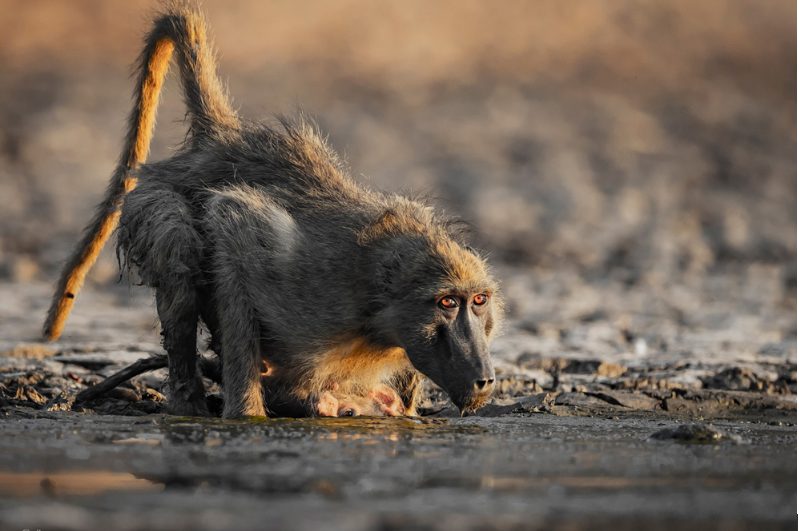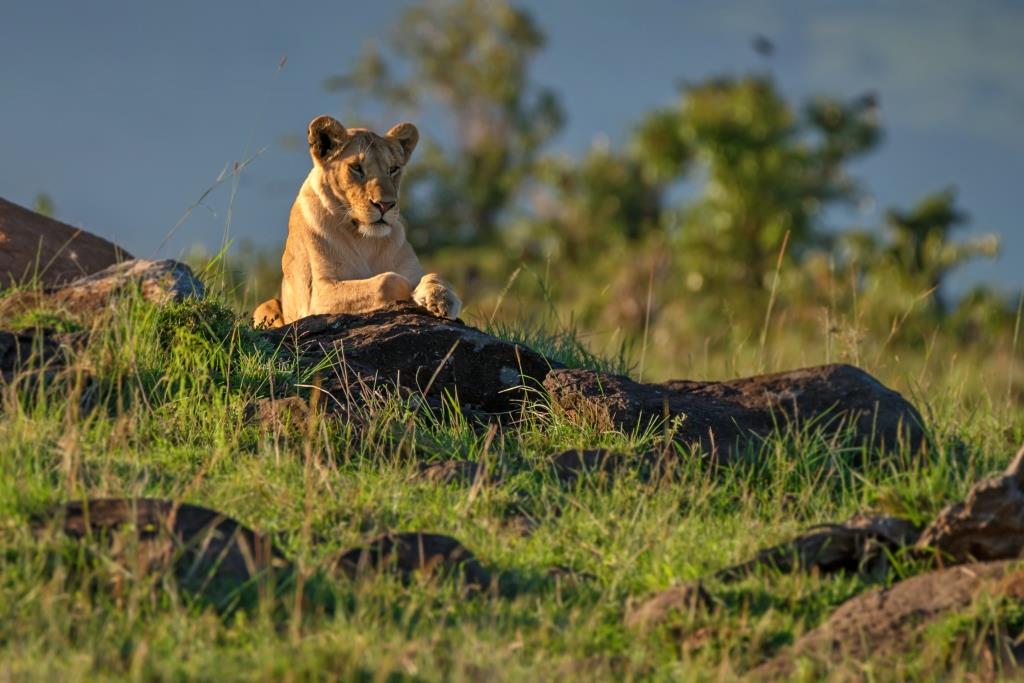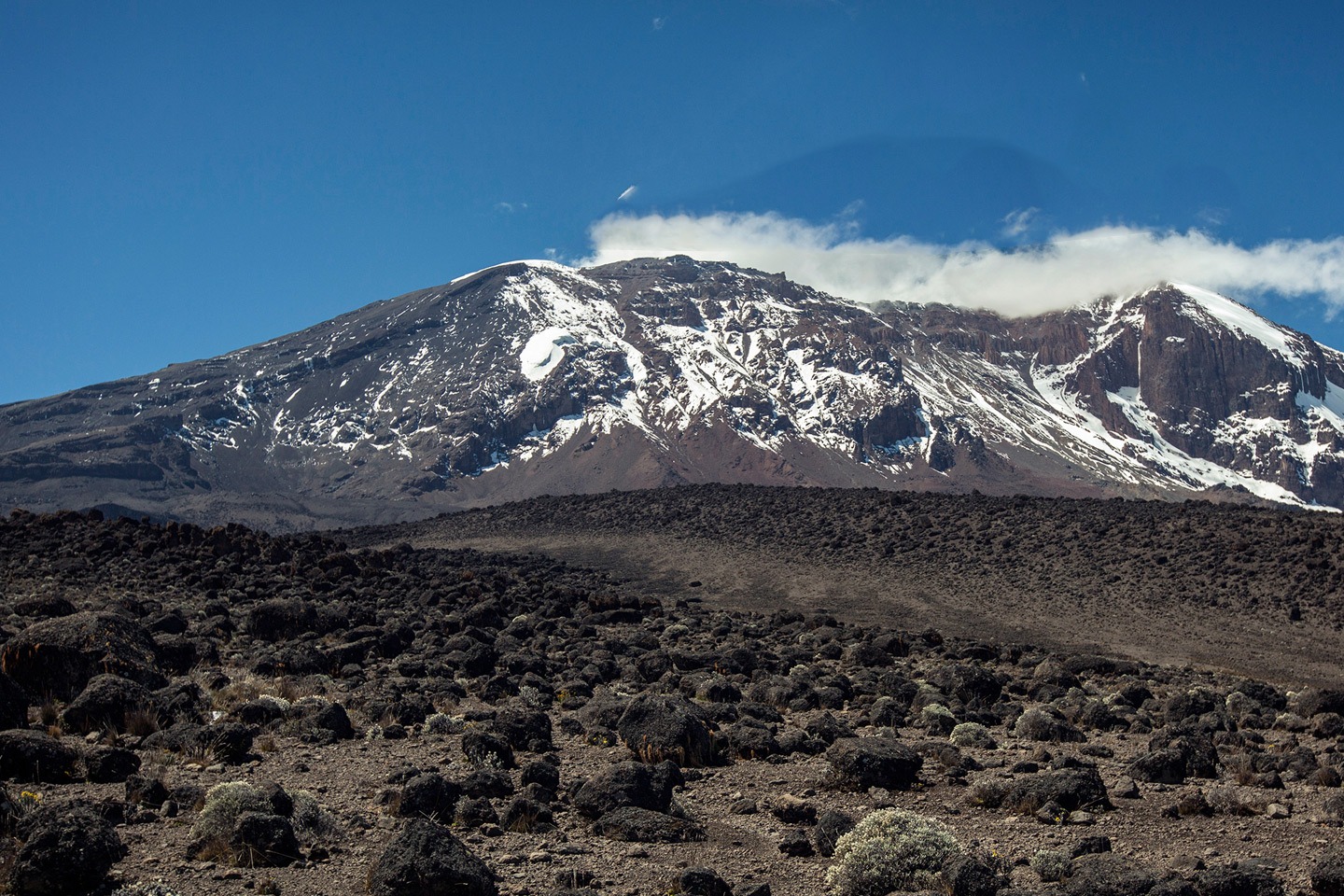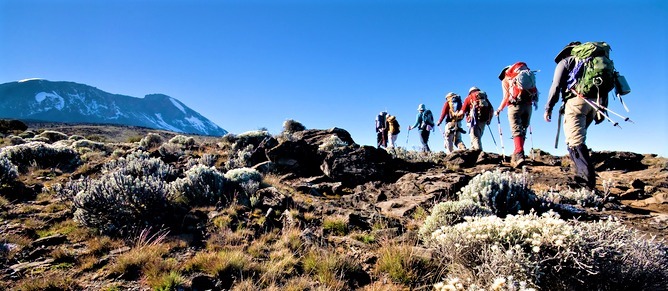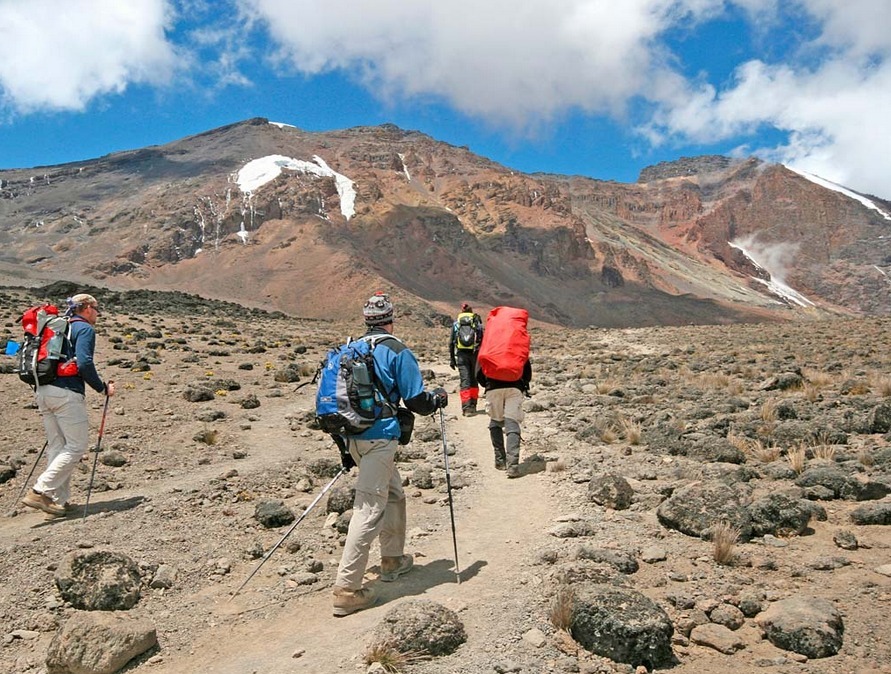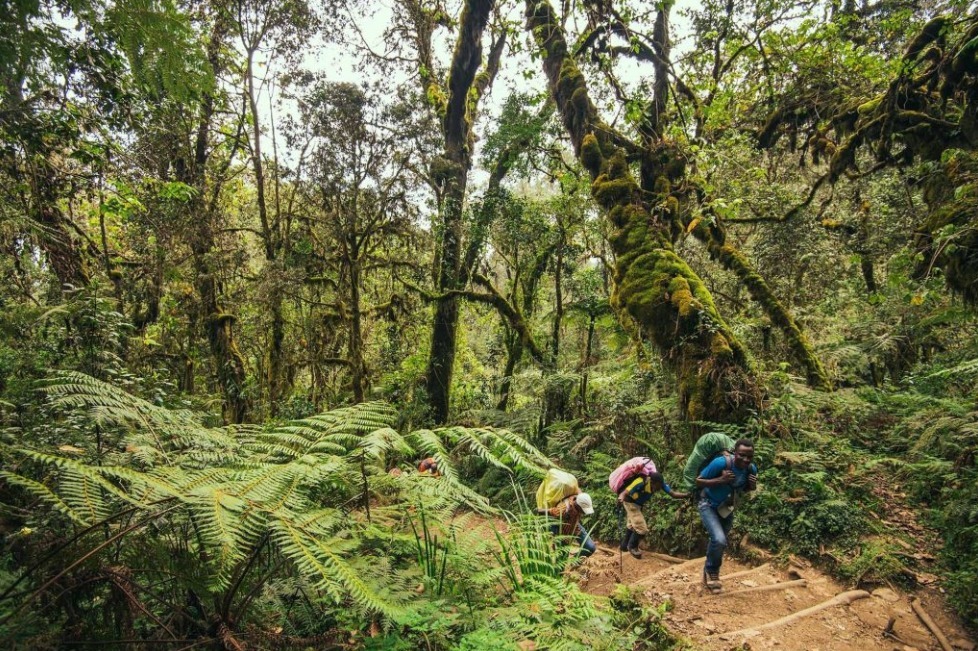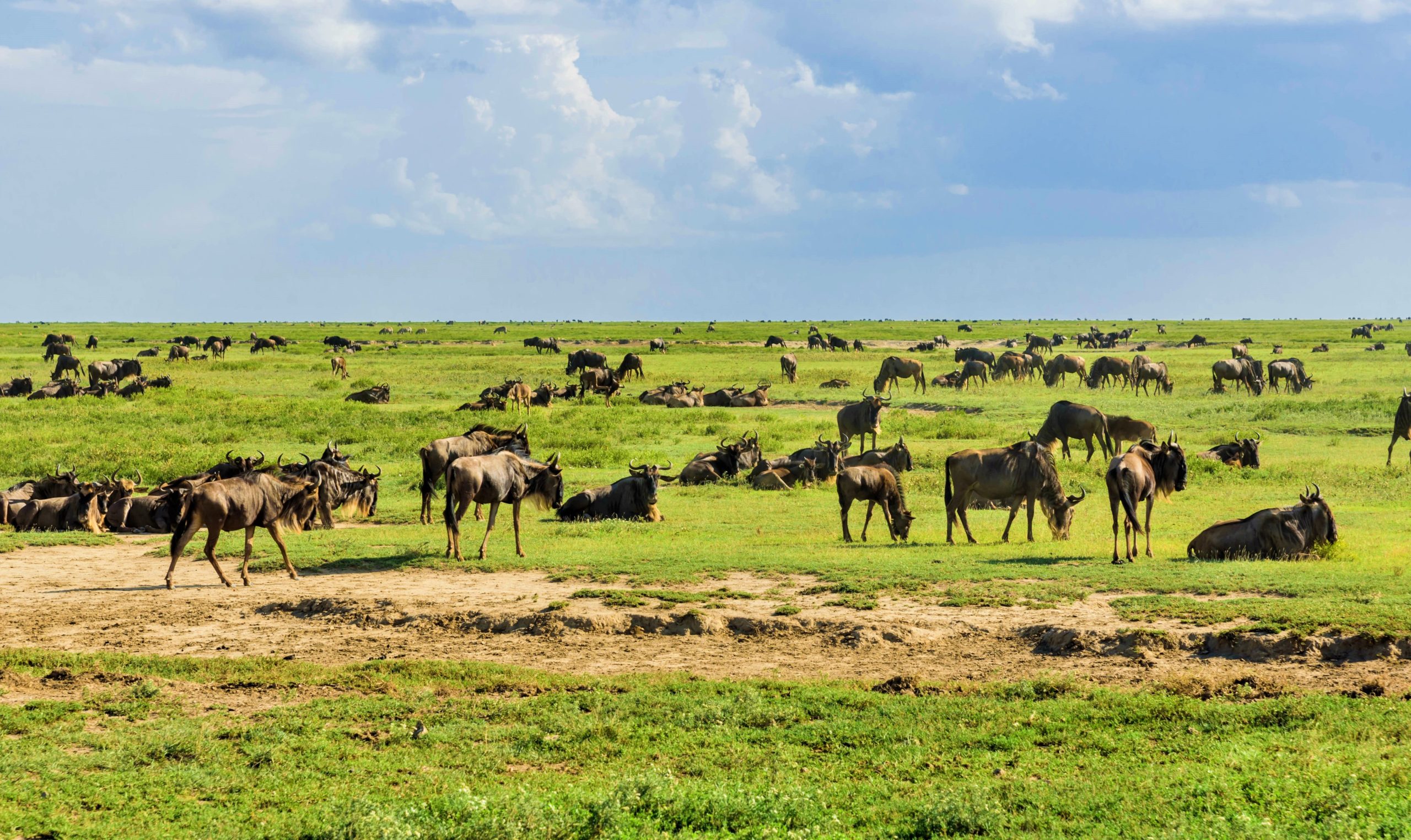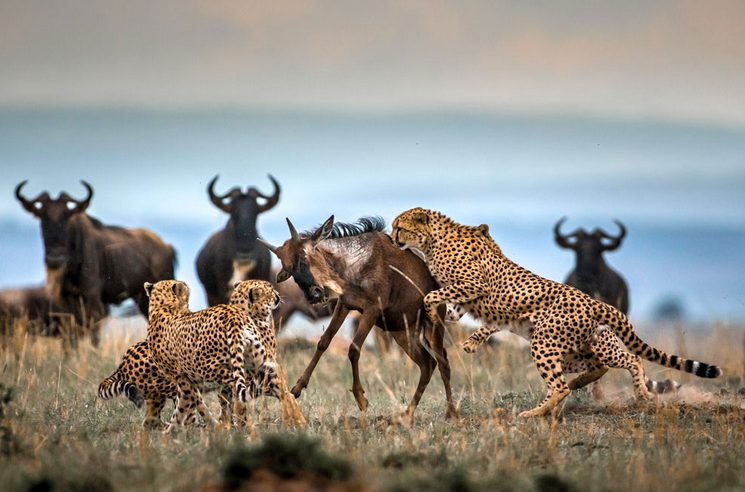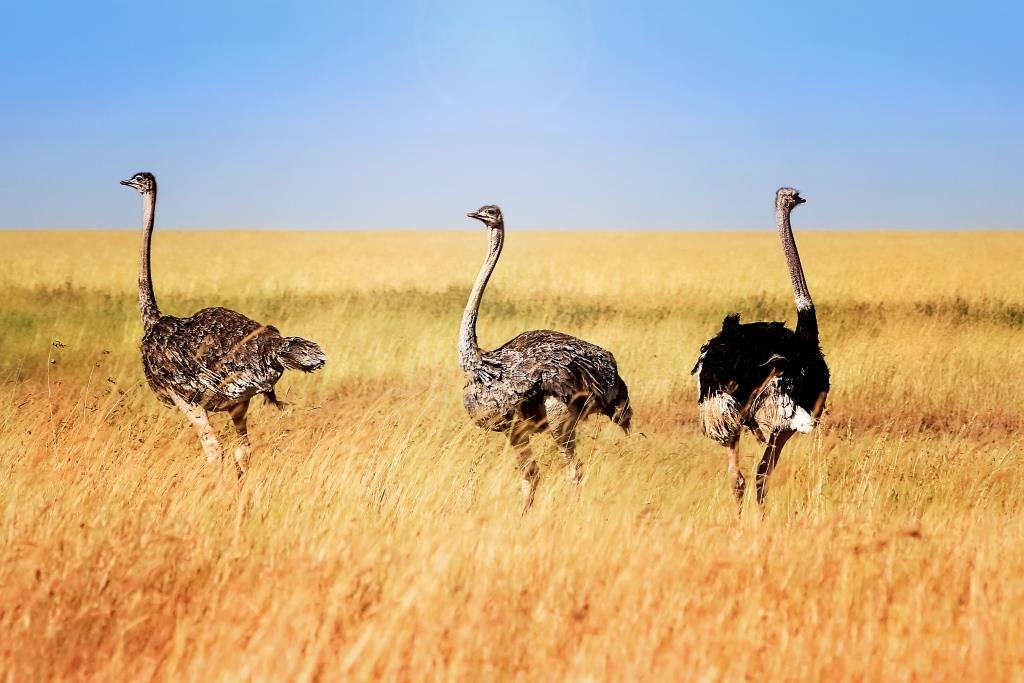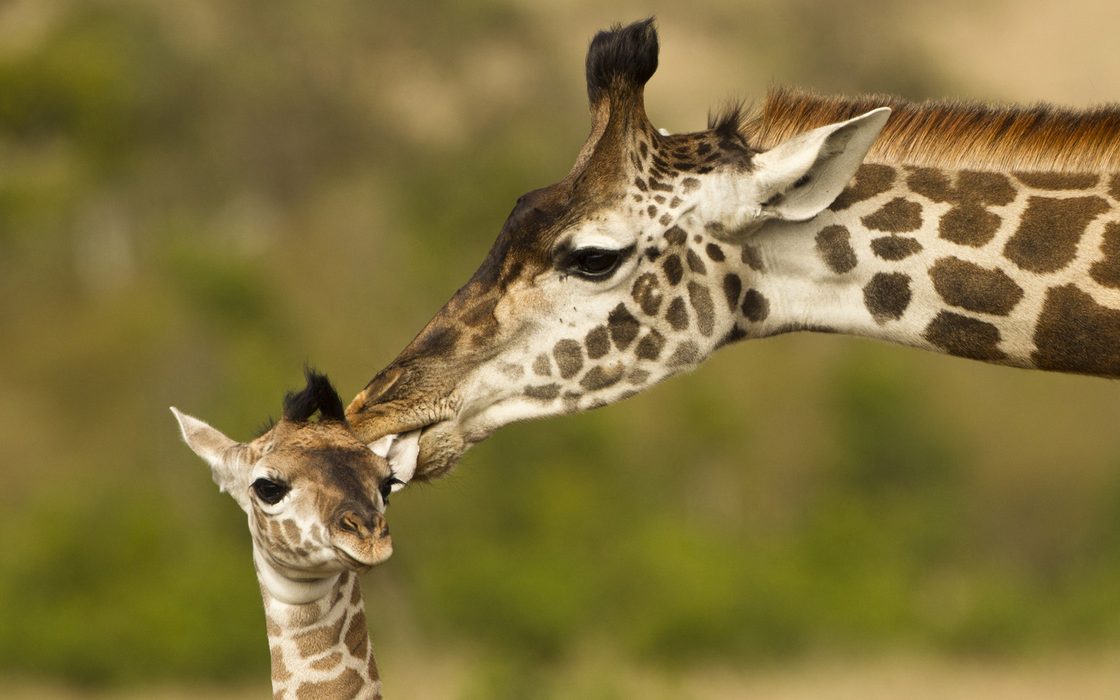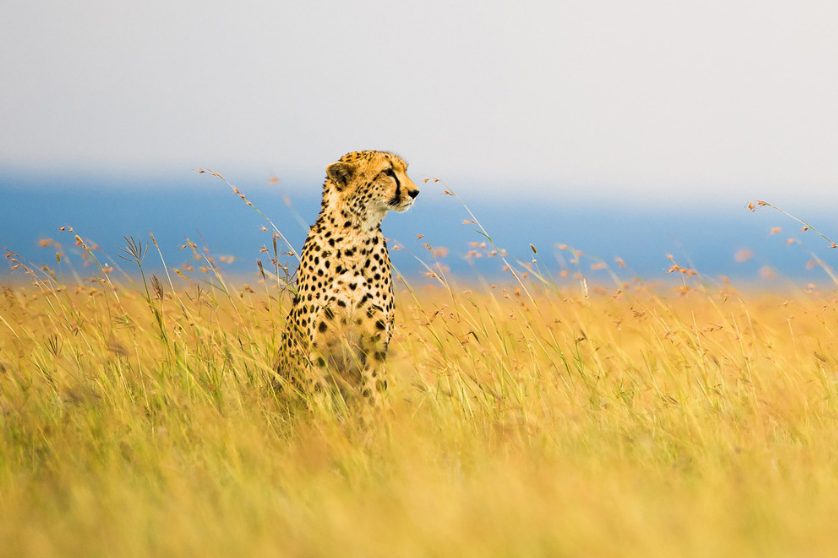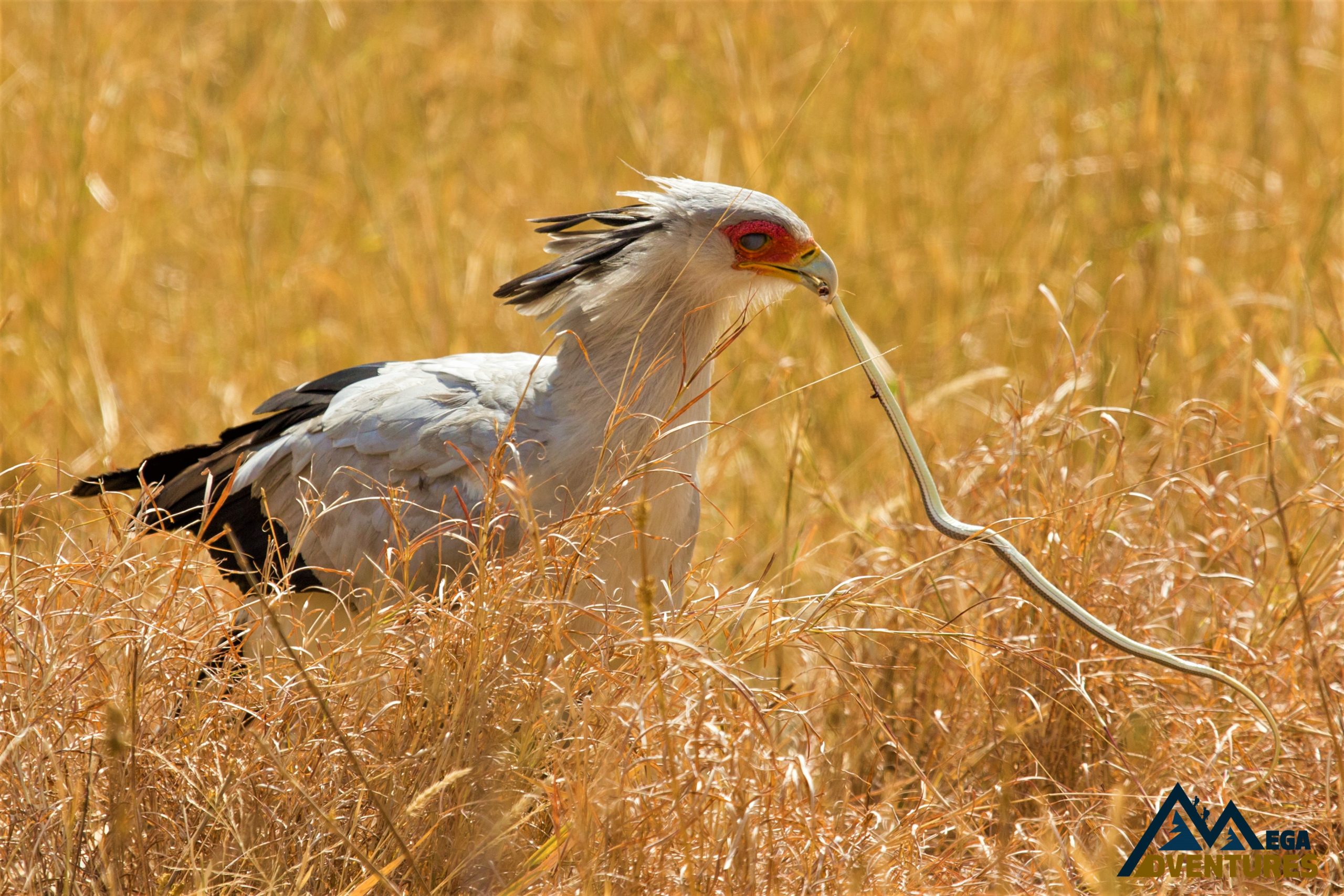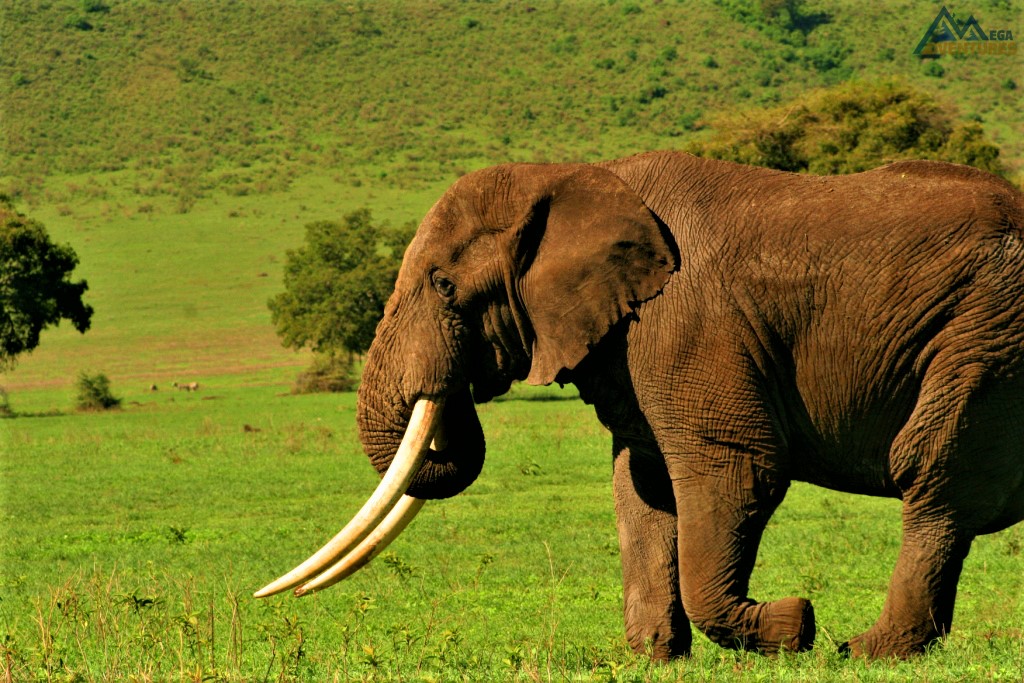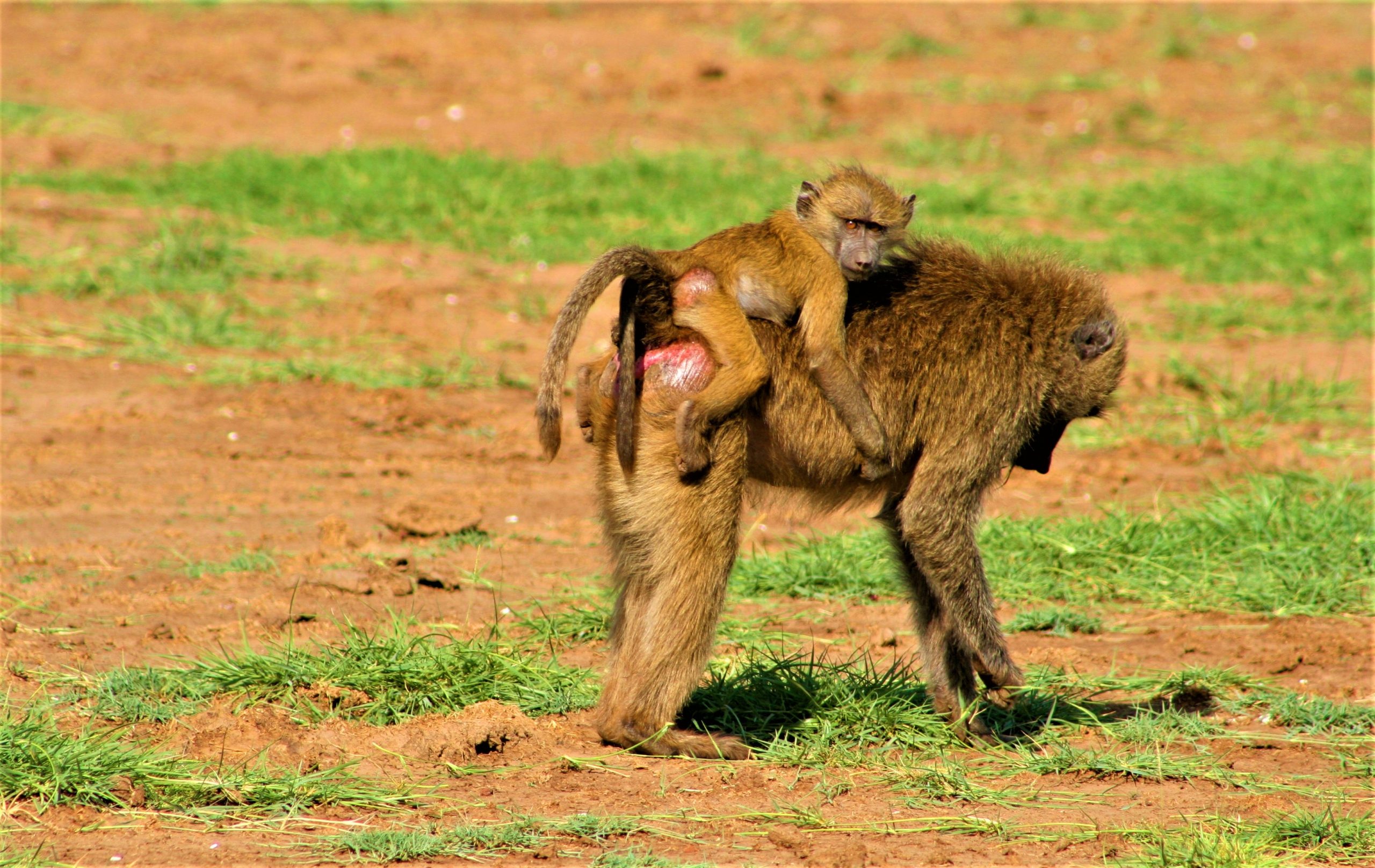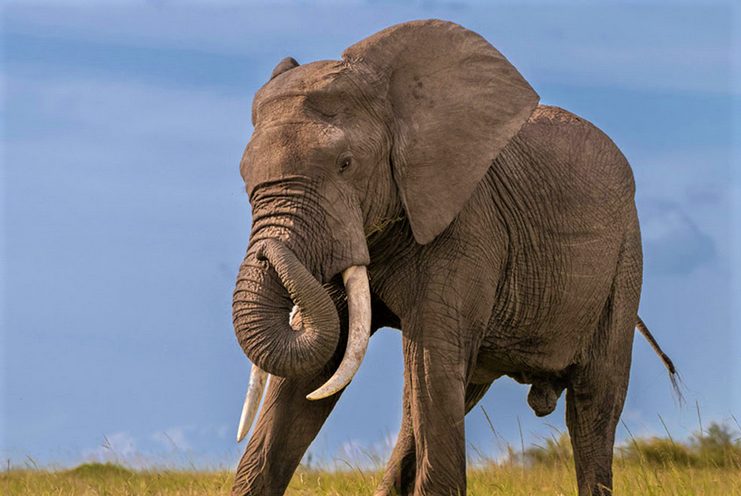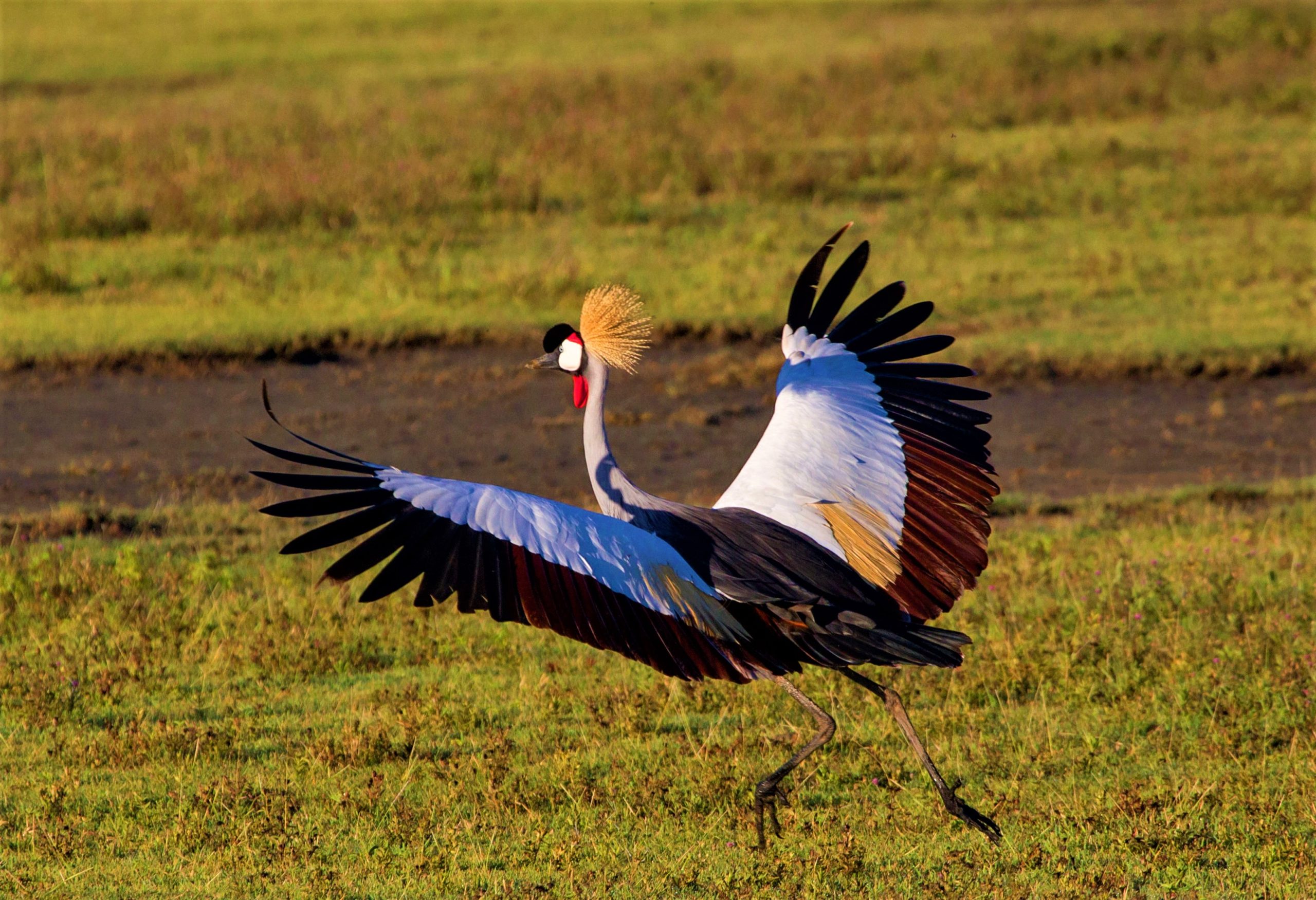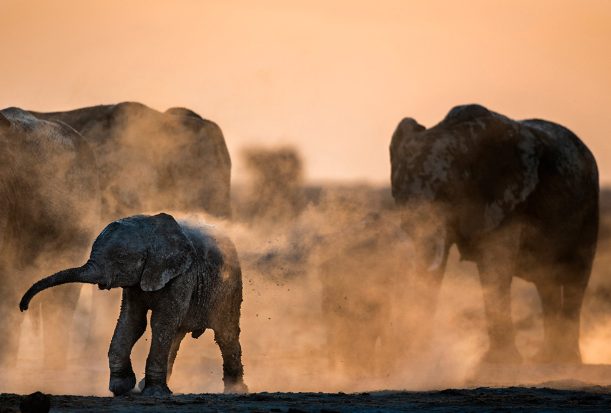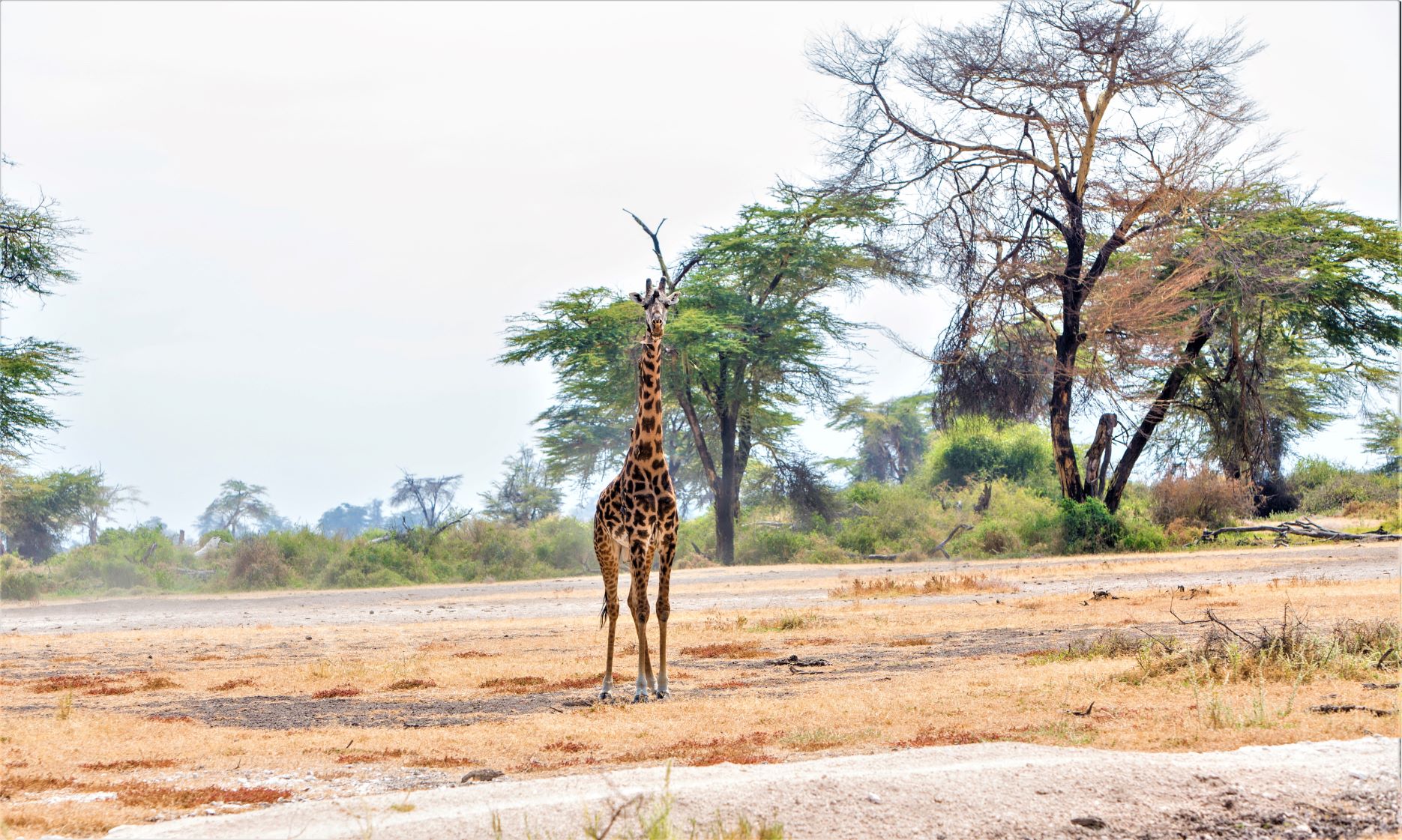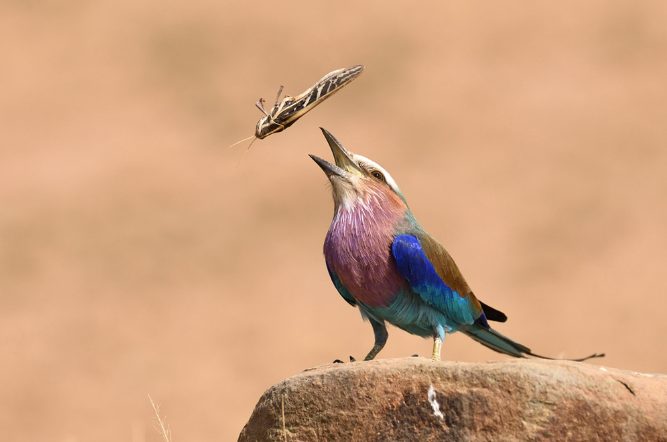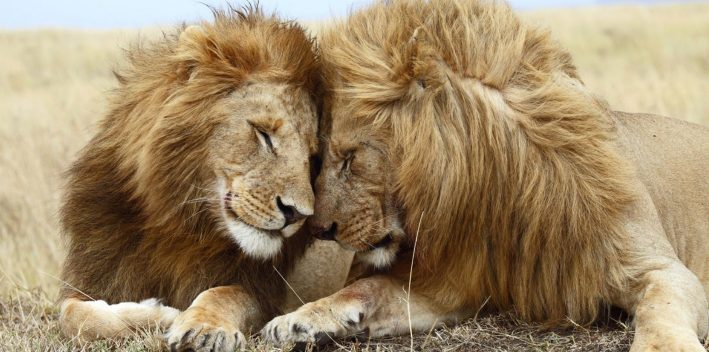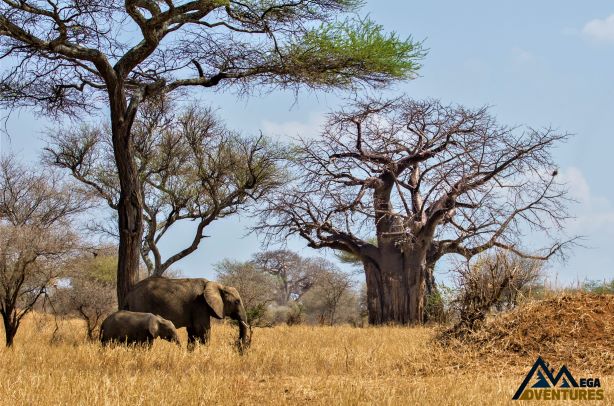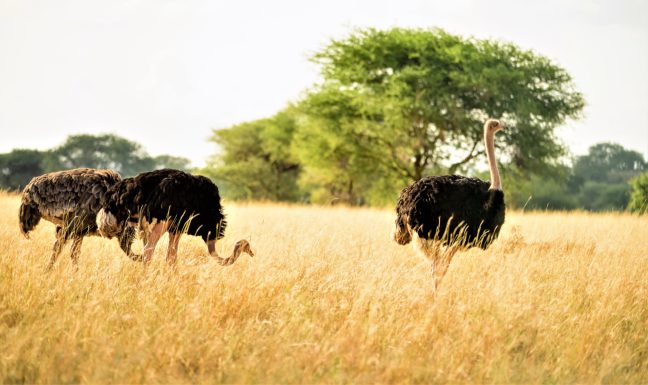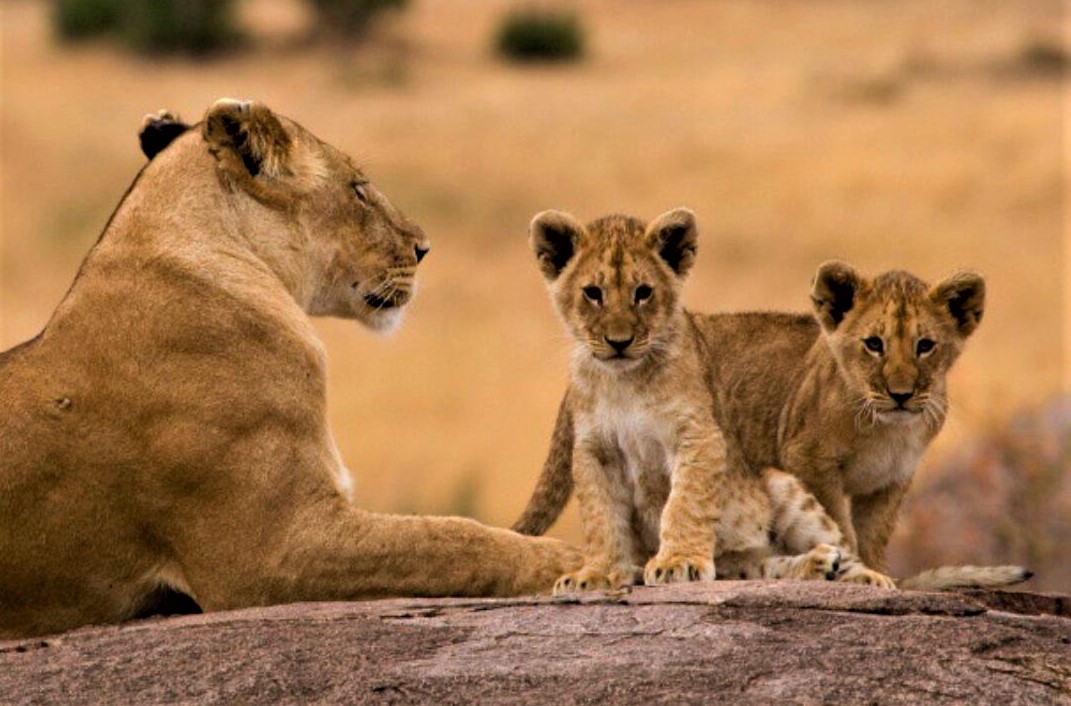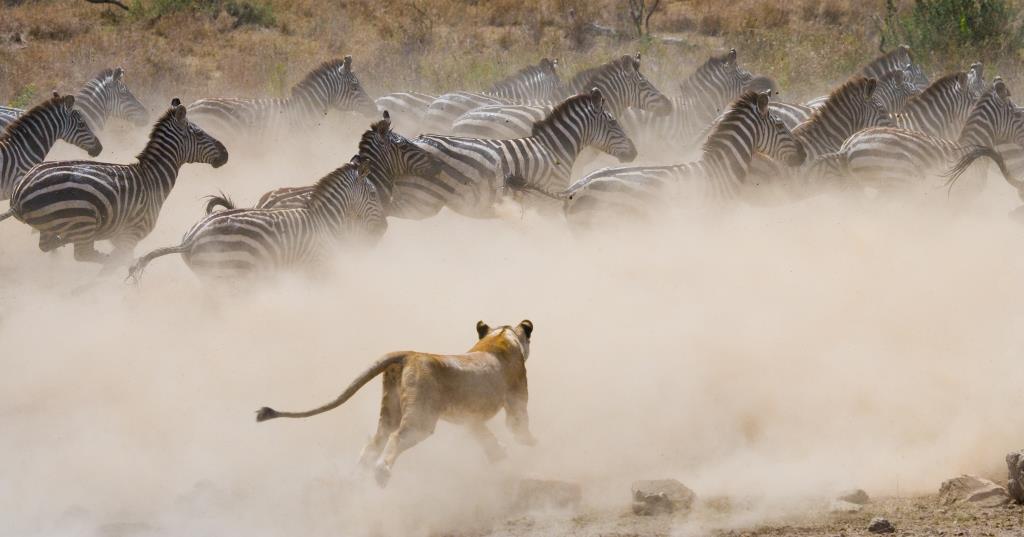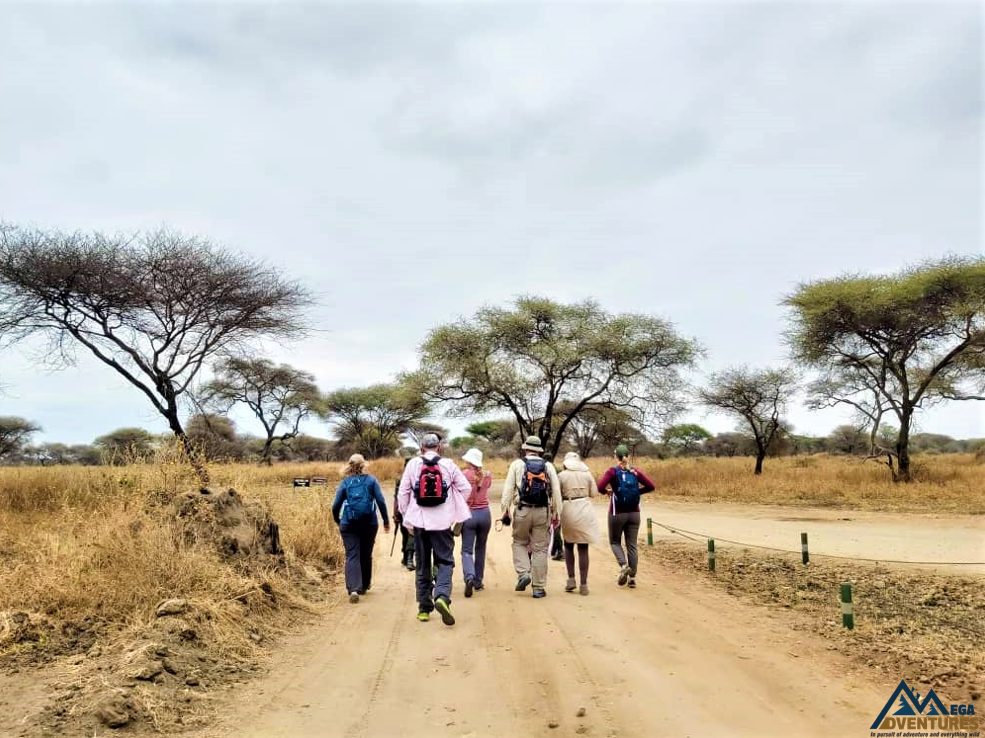Probably Tanzania’s most beautifully set national park, Lake Manyara stretches for 50km along the foot of the Great Rift Valley’s western escarpment. It is also one of Tanzania’s smallest National parks, covering 330 sq. Kms (127 sq miles), of which up to 200 sq km (77 sq miles) is lake when water levels are high but its varied shoreline habitats shelter a wide variety of animals, including elephants, great flocks of flamingo, hippos and the renowned tree climbing lions.
With its evergreen groundwater forest, Manyara is a touch of green in an otherwise dry landscape. This forest, fed by springs flowing down the escarpment wall in the north together with the many different habitats and the presence of year round water makes it an oasis for wildlife even during the dry seasons and attracts part of the wildlife migration from Tarangire. The forest is home to Manyara’s elephants, Impala, Bushbuck, Waterbuck, Guinea fowls and a host of other creatures alongside the ever present families of Blue and Vervet monkeys. Baboon troops also frequent the forest as well as on the plains adjacent to the forest.
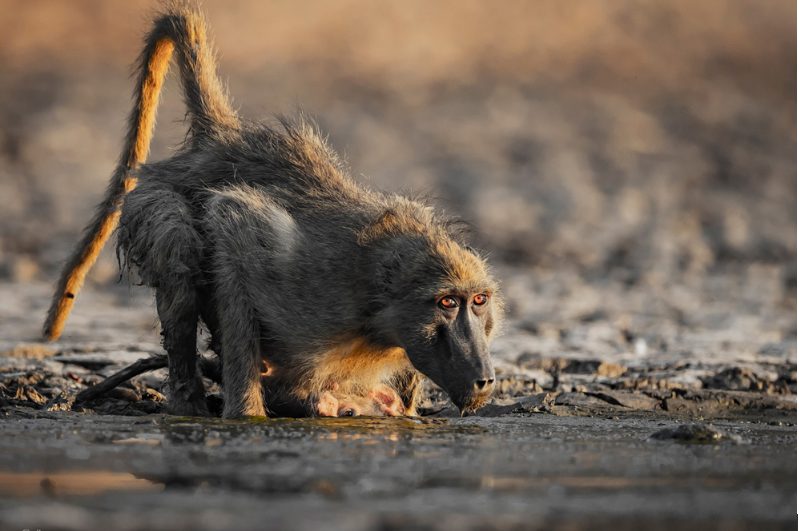
Buffaloes usually feed by the lakeshore, sometimes numbering several hundred in a single herd. The fan delta that forms before the lake is a refuge for over two hundred hippos that with luck might be seen lounging out of the water during the day. Plains game includes Giraffe, Zebra, wildebeest, Warthog, mongoose, Kirk’s dik-dik and their attending predators; the tree climbing Lions, Leopards, Wild dogs and Jackals among others. Sometimes pairs of agile klipspringers can be seen silhouetted against the sky as they stand on rocks on the face of the escarpment wall. The shallow lakeshore is favored by water birds including Plovers, Ducks, Geese, Cormorants, Pelicans, Herons, Ibises, Jacanas and the highlight of them all, the vast flocks of pink flamingos who are attracted by the abundance of algae in the lake’s shallow waters. The algae are supported by a series of hot springs rich in the foul smelling Sulphur, that are heated by geothermal activities in the earth’s mantle.
Raptors that are found in the park include the long crested eagle that preys on the Vervets, many species of vultures, the pale chanting goshawk among others. Together there are about 400 bird species that have been recorded in the park, many a visitor’s highlight.
As small as it may seem, Lake Manyara, stretching along the base of the 600 meter high escarpment wall is one of the most beautiful places in Tanzania, a true scenic gem. With a setting so grand that Ernest Hemingway eulogized it as “the loveliest I had seen in Africa” and even named his book “The green hills of Africa” after the scene as he saw as he journeyed up the escarpment wall, Manyara is sure to enchant many a traveler now just as it did almost a century ago.
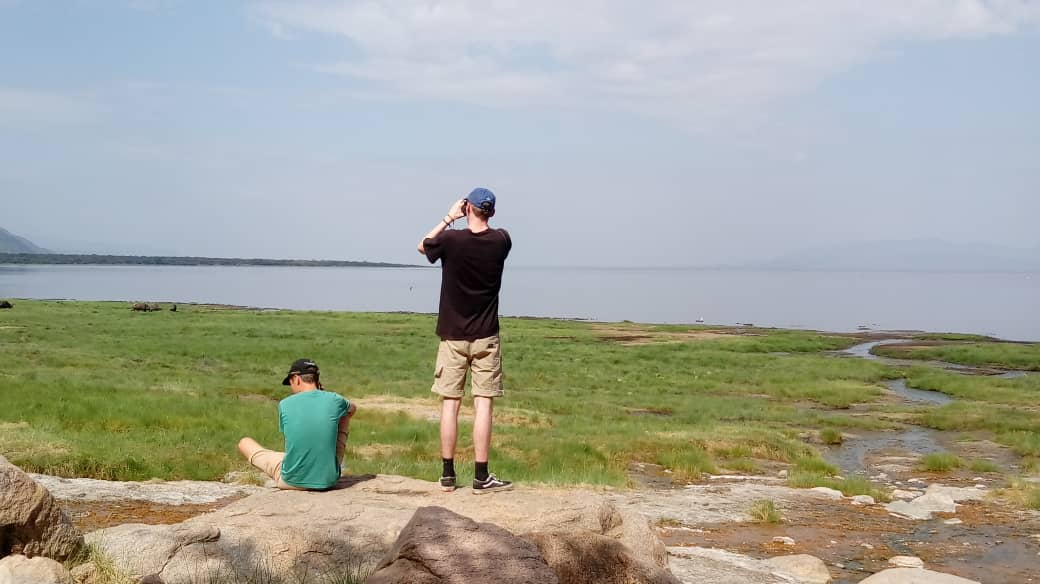
Climate:
Lake Manyara National Park like the Ngorongoro and Serengeti and Tarangire has bimodal rainfall. However its short rains may start a little earlier and end earlier October – November and the long rains March – May. It seldom rains for the whole day.
Manyara’s dry season is from June – September and December to February.
Temperatures during the dry season range from 24 C° during the day and around 14 C° during the nights. Warm clothes during early morning game drives is recommended.
Temperatures during the wet season are around 27 C° in the afternoon and around 16 C° at night.
Best time to visit:
Lake Manyara is great throughout the year. The park is at its utmost beauty during the wet season November – May when the vegetation is very lush and waterfalls cascade down the rift valley escarpment.
The dry season making most of the park routes accessible is preferred by many.
Accessibility:
The Park can be accessed both by road or air.
By Road 115kms from Arusha City.
By Air: Chartered flights to Manyara Airstrip.
Accommodation:
Lake Manyara National Park has diverse accommodation options a stone throw away from the park. From campsites, tented camps and lodges. Most of them are located on the edge of the rift valley with spectacular views.
The Park offers just a handful of accommodation options; Camping, tented camp and lodge
Activities:
- Game drives
- Night Game drives
- Walking Safari
- Canoeing

